Money
The Convergence of Money: One Wallet to Rule Shopping, Saving, and Investing
This chapter explores how money could incorporate sustainability as a feature.
“Money is information… it shouldn’t be more expensive or slower than sending an email.” (K. Käärmann, Co-Founder of the Wise , formerly known as Transferwise, money transfer platform), said in 2018 (Käärmann, 2018)
Money itself is changing and the meaning of money is becoming more diverse. Traditionally, money referred to the fiat money created by governments by law, using central banks, which loan money to commercial banks, that in turn make it available to the society. Now, we also have new types of money created by companies and individuals using blockchain-cryptography based distributed databases, which keep track of transactions (who-paid-whom). We have various types of tokens of value, such as cryptocurrencies, digital assets, loyalty points, etc, which can all function as types of money. Whatever the method of creation, in essence, money is a system of trust where something is used as a medium of value exchange and accepted by other people as payment.
Spurred by Fintech: The Democratization of Finance: A Precursor for Sustainable Superapps
Digital money in its various forms connects industries on popular financial mobile apps, which makes digital money more accessible and socially engaging, appealing to people who are active online. Because of the democratization of finance enabled by digitization and financial technologies, the journey from consumer to investor is becoming increasingly simple. Consumer-oriented financial apps increasingly enable new user interactions which blur boundaries between shopping, saving, and investing - termed here “money convergence”. Empowering consumers to access finance through digital technologies and delivering a simple user experience is the fintech trend of the last decade. Motivated by boosting user numbers, apps such as N26 and Revolut, that started out with only payments-focused businesses, founded in 2013 and 2015, respectively, began making efforts to expand into all-in-one financial superapps offering varied saving and investing services (Kickstart Your Investment Journey, 2023; Revolut Launches ETF Trading Platform in Europe, 2023).
While it took N26 and Revolut more than a decade to grow into global businesses, fintechs can growth really fast. Just last year in Canada, Neo Financial, which offers a mobile app and credit cards to consumers featuring cashback rewards on payments, savings and investing, won Canada’s fastest growing company award in 2024, posting a 3-year revenue growth of 38,431%, earning between $75M and $100M USD in annual revenue from 1.3 million customers (“Ranking Canada’s Top Growing Companies of 2024,” 2024). (Qorus, 2023) a survey of 200 banking executives worldwide, revealed we’re in a digital banking revolution, with growing adoption of personalization, automation, and embedded finance - the availability of savings, loans, insurance, debit cards, and investment opportunities embedded within the apps of non-financial platforms, like e-commerce or social media platforms.
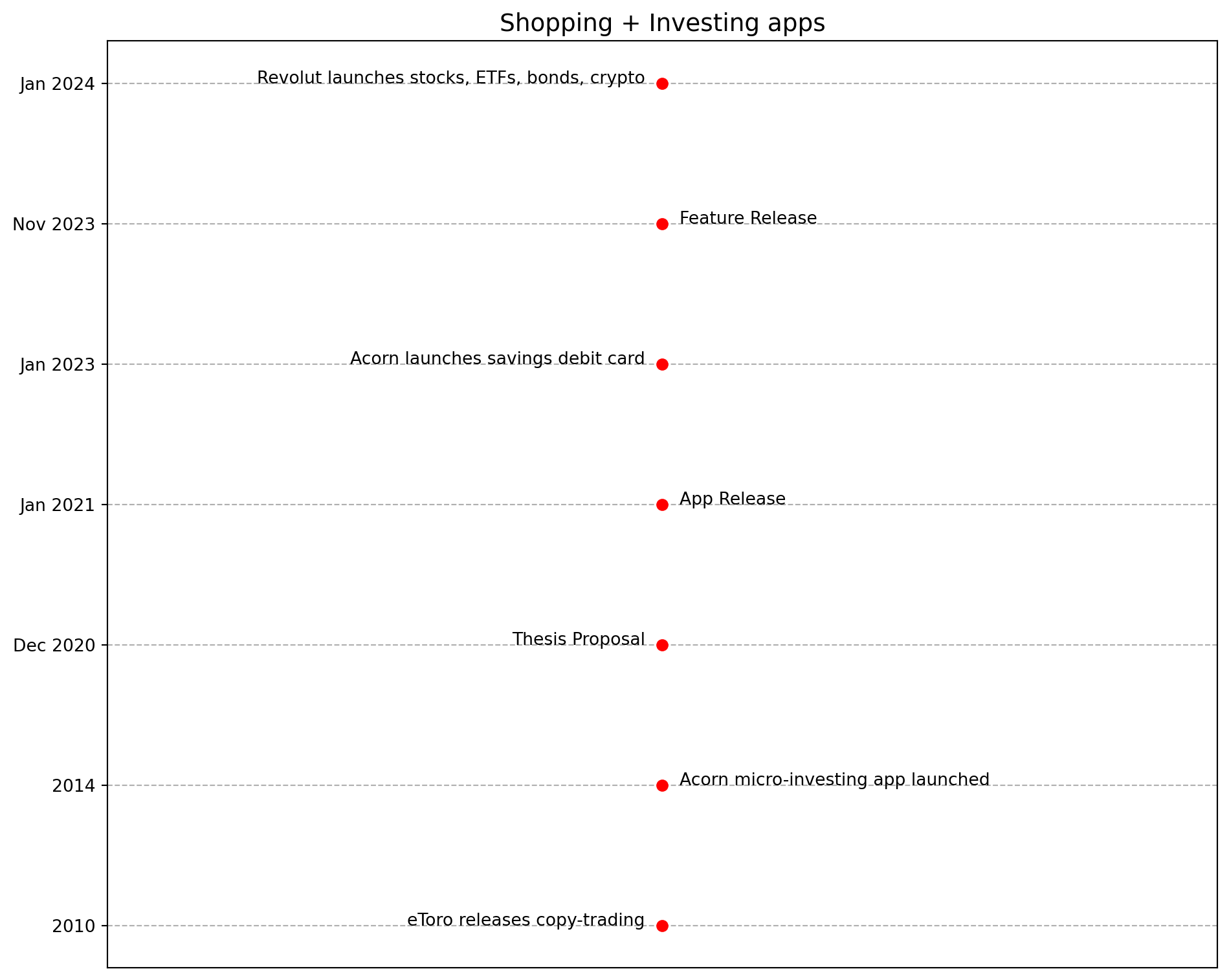
Figure 1: Fintech Growth
Financial Literacy and Education: Young Investors Follow Financial Influencers
Young investors are typically retail investors, investing small amounts of money for themselves. (Unless they have inherited wealth or are among the very few who work in institutions such as investment firms, university endowments, pension funds or mutual funds, and have a say in where to invest large amounts of other peoples’ money.) Retail investors face many challenges in comparison with their institutional counterparts. For instance, they may have much less time to do proper research, face information asymmetries, where finding good information is limited by time, ability, as well as financial literacy, whereas professional investors have the tools, skills, time, and knowledge, to make better investment decisions.
The common expectation is that young investors typically have less understanding financial concepts. While consumers are beginning to become more money-savvy, they still lag in both financial and sustainability literacy. Financial and sustainability literacy are intertwined. Integrating these literacies is essential, because a financially informed public is better equipped to channel capital toward environmentally beneficial uses. Media plays a significant role here, with retail investing being heavily influenced by social media influencers.
Popular financial blogger (Austin Ryder, 2020) believes a good starting point is to ask the user to define their financial habits: are you consumer or investor? This helps users recognize whether their spending habits define them primarily as consumers or as investors. (SmartWealth, 2021) urges readers to “consume knowledge, not products”: for financial health one should get rid of debt, automate tracking of expenses and savings, and create a pathway for income to flow into investments; consumer mindset is the main obstacle that keeps people from financial independence and investing. Investing can intersect with gender and race, as for example, during COVID-19, the financial advisor Malaika Maphalala co-led the “Invest in Black Economic Liberation” calling for racial justice investing to direct flows into sustainable funds (naturalinvest, 2020). On TikTok, (lizlivingblue, n.d.) promotes the IMPACT investing app by Interactive Brokers which is a mobile trading platform focused on socially conscious investors interested in sustainability (Trahant, 2022).
| Feature | IMPACT by Interactive Brokers | Lightyear | Revolut |
|---|---|---|---|
| Target Audience | Sustainability-focused investors; value-driven alignment | European retail investors | Everyday users with casual interest in investing |
| Investment Products | Stocks, ETFs, mutual funds, options, bonds, fractional shares | Stocks, ETFs, multi-currency accounts | US & EU stocks, crypto, commodities, fractional shares |
| Sustainability Focus | Strong. Core to the app. Lets users filter companies by ESG values and track portfolio impact. | None. Focuses on transparency and low fees | Minimal. Some ESG ETFs; no impact tracking or custom filters |
| Fees | Very low (starting at $0 commissions, with some market/data fees) | Low, with no account fee; FX markup 0.35% outside base currency | Free plan has high spreads; paid tiers offer lower fees; several FX and withdrawal limits apply |
| Currency Conversion (FX) | Interbank FX rates; low spreads | 0.35% FX fee | Free plan: 1% FX fee; better rates in Premium accounts |
| Fractional Shares | Yes | Yes | Yes |
| Tax Documents | Yes, detailed reports | Yes, supports Estonian tax system | Limited; may need to do manual tracking for taxes |
| Mobile App Experience | Professional, ESG-focused UI | Clean, simple, intuitive | Gamified, casual, integrated with other Revolut services |
| Extra Features | Voting rights, ethical filters, carbon impact metrics | Interest on cash (like a bank account); multi-currency accounts | Cashback, budgeting, crypto, P2P payments, travel perks |
The next step is to provide frictionless digital pathways that let everyday purchases morph into micro-investments with transparent sustainability impacts. This user journey is a type of blended learning-by-doing experience. Framing the problem as a dual journey: first, helping users recognize whether their spending habits define them primarily as consumers or as investors, then giving users exposure to investment opportunities through familiar activities like shopping may hold the potential to boost financial literacy levels, enticing consumers to learn more about taking advantage of their financial opportunities as well as understanding how to manage the types or risk involved. Indeed, retail investor are the most vulnerable to misinformation and speculative hype if educational scaffolding is absent.
Financial superapps for shopping, saving, and investing are converging on digital platforms, aiming to permeate our daily financial lives, with features such banking, payments, transfers, rewards and cashback programs (e.g. Rakuten), automated micro-investing round-up to next dollar (e.g. Acorn, Stash, Swedbank, many others), retail investing (Robinhood, Public, Lightyear), copy-trading (eToro) and offering various investment vehicles, to name just a few: (fractional shares of) stocks, derivatives like CFDs and futures, microloans (Kiva), commodities and precious metals such as gold and silver (Revolut), physical assets such as real estate, land, forest and digital assets such as cryptocurrencies, NFTs, and many other alternative assets of varied price, volatility, liquidity, and risk profile.
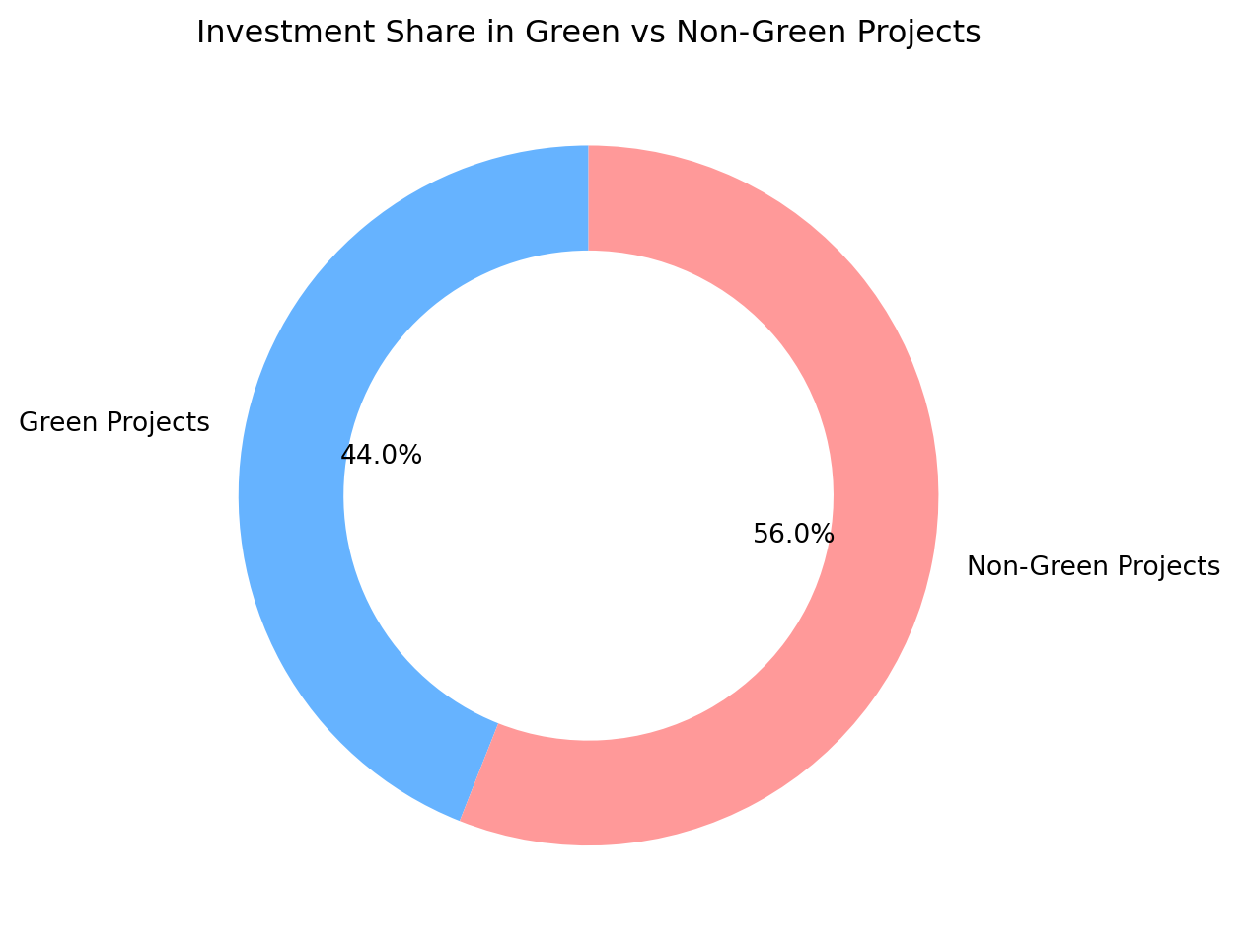
Figure 2: Green Retail vs Non-Green Retail
Community-based copy-trading apps live on the intersection of social media and investing, enabling financial inclusion through letting novice, inexperienced investors piggy-back on more sophisticated investors by copying their investments. In some ways community-investing competes with robo-advisors as communities can be led by professional investors and followed by less sophisticated investors. Because of this investing leadership aspect, investor communities can have the type of social proof, which robo-advisor do not possess. eToro’s, Robinhood’s and Dub’s copy trade feature turn portfolios, watch-lists and trade votes into public content (dub, 2025). The visible social proof approach can feel safer than robo-adviser; retail investors cite seeing what others do an important trust trigger (Andraszewicz et al., 2023).
Evidence of a similar phenomenon of peer behavior measurably shifting sustainability choices has been documented in the enterprise sector in green financing of Chinese industries, albeit in a modest 1–2% increase (incremental nudges); companies tend to invest green when they see when other companies signal a green preference (Yang et al., 2022). In a Swedish study, investors’ belief in sustainable investing was found to be affected by other investors: an online coordination game with 559 private investors showed that 2nd-order pro-sustainable beliefs (what one thinks others care about) also drove up sustainable asset allocations, underlining the social dimension of ESG investing (Luz et al., 2024).
Independent of what is the technology used, access to investing is about financial empowerment. Ugandan investor John Ssenkeezi celebrated on X (formerly known as Twitter) being able to vote at Apple’s 2022 AGM stockholder meeting using stock investments app Chipper Cash, which allows users by fractional‑shares, illustrating shareholder democracy for emerging‑market users (John Ssenkeezi, 2022). AngelList was an early pioneer in opening startup deal flow to retail users, offering access once reserved for angel investors and VCs. Similarly, community-based investment clubs could potentially enable everyday investors to pool resources and back sustainability initiatives alongside more experienced professionals.
Build a community can be lucrative. In Singapore, Chinese influencer Yuqing “Irene” Zhao’s photos generated S$7.5 million in 10 days as NFT sales; she tokenized her selfies as non-fungible tokens (NFTs) via IreneDAO, a decentralized version of OnlyFans, Discord, Twitch and Patreon, arguing that Web3 empowers creators to earn directly from their communities, turning fans into investors and aligning content creation with tokenized membership rights — evidence that retail capital can flow directly to media personalities through crypto communities (Irene Zhao, 2022; Yuqing Zhao, 2021). Similarly, in South Korea, media personalities have become “investable,” through more traditional financial vehicles, such as K-pop idols as the focus for “thematic” ETFs, including KPOP and Korean Entertainment ETF and the Mirae Asset Global X K-pop and Culture ETF, enabling fans and investors to financially participate in the growth of the Korean entertainment and celebrity-driven cultural capital (Darwyne, 2025).
Communities can be directed towards sustainability, by attracting people of a similar mindset. For example, minimalism is a movement of people living a simpler life; this probably always going to be a small percentage of people, yet a growing life-style choice. According to one study, consumers choose to engage in becoming minimalist in a non-linear process with overlapping stages (Oliveira De Mendonça et al., 2021). Yet, (Costa, 2018) Finnish socialists promote minimalism as part of their mainstream policies. In Tokyo, a YouTuber shares their life and the choices they made (Tokyo Simple Eco Life, 2021). Zero Waste Lifestyle is the opposite of overconsumption. Zero Waste suggests people buy in bulk for more savings and to reduce packaging. Through group purchases and community investing while also reducing consumption. Zero Waste municipality in Treviso is a whole region with a focus on living green. While Minimalism and Zero Waste need an ongoing effort, joining a one-day sustainability event is accessible for most people. Started in Estonia, the World Cleanup Day movement has attracted tens of millions of people to do beach and forest cleanups, all over the world.
Building a community is a way to design a context, where the culture creates certain expectations of behavior. Humans working together are able to achieve more than single individuals. “Any community on the internet should be able to come together, with capital, and work towards any shared vision. […] In the long term this moves to internet communities taking on societal endeavors.” (Panzarino, 2020). (Armstrong & Staff, 2021) believes leveraging different personalities and viewpoints can build more sustainable cultures; the focus on group consciousness suggests community-based sustainability action may be effective, when building a culture of sustainability, such as the garbage trucks in Taiwan. A communal event is a key building block for a thriving community, which can be directly experienced instead of just reading about it or watching a video.
New Rules of Money: Legislative Efforts Empowering Consumers to Deploy Capital in Sustainability
Regardless if it’s money spent on shopping or money saved and invested, these are all consumers’ financial decisions of capital allocation. In one way or another, people are giving their money to companies. The critical question is: do people choose to support sustainability-focused companies - companies which invest deeply into green innovation and eco-friendly practices - or do people choose companies that pay less attention to sustainability? While all financial transactions support economic growth in the sense of being reflected in the Gross Domestic Product (GDP), not all money flows equally support sustainable economic growth.
Legislation is catching up with fintechs and setting higher standards for consumer protection. For example the Directive 14 2014/65/EU, 2014 of The European Union fully recognizes the changing financial landscape trending towards the democratization of investments: “more investors have become active in the financial markets and are offered an even more complex wide-ranging set of services and instruments” (European Parliament, 2014). Some key legislation for investors has been put in place recently, for example “MiFID II is a legislative framework instituted by the European Union (EU) to regulate financial markets in the bloc and improve protections for investors” (Kenton, 2020). MiFID II and MiFIR will ensure fairer, safer and more efficient markets and facilitate greater transparency for all participants (European Securities and Markets Authority, 2017).
(PWC, 2020) Changes to laws and regulations aimed at achieving climate change mitigation is a key driver behind the wave of ESG adoption. The goal of these laws, first adopted in the European Union, a self-proclaimed leader in eco-friendliness, is to pressure unsustainable companies to change towards greener practices, in fear of losing their access to future capital, and to create a mechanism forcing entire environmentally non-compliant business sectors to innovate towards sustainability unless they want to suffer from financial penalties. On the flip side of this stick and carrot fiscal strategy, ESG-compliant companies will have incentives to access to cheaper capital and larger investor demand from ESG-friendly investors.
Already in 2001, while still part of the EU, the UK government was discussing ways to promote sustainable investment “fundamental changes in VAT or corporation taxes could be used to promote greener consumption and investment” (House of Commons, 2002). More recently, (HM Treasury, 2020) released a taxonomy of sustainable activities in the UK.
While the above trend is for governments to adapt to and work towards their environmental climate commitments and public demand, the sovereign risk remains an issue. For example, in the U.S. the policies supported by President Donald Trump during his presidency ran counter to many sustainability recommendations, including those directed at the financial markets, helping legacy industries stay competitive for longer through subsidies, and lack of regulation, or even regulation supporting legacy technologies (Quinson, 2020).
Governments are powerful in passing legislation, with a strong positive or negative ESG impact, and people do have a voice. Among the many grassroots campaigns, one environmental success story is about success story, asking that EU shops can’t sell deforestation products, gathering over 100 thousand online signatures (WeMove Europe, 2022). Subsequently, legislation banning products contributing to deforestation was passed by the EU Parliament and Council in 2023 and came into effect in July 2024 (Abnett & Abnett, 2024; European Parliament, 2023).
ESG Crisis and Opportunity
Opaque Metrics and Lack of Standardization
ESG ratings have faced criticism for lack of standards and failing to account for the comprehensive impact a company is having. (Foley et al., 2024) notes how Coca Cola fails to account the supply chain water usage when reporting becoming “water neutral” and calls on companies to release more detailed information; major ESG ratings omit 90% of the company’s water footprint. (Gemma Woodward, 2022) Identifies fundamental problems in current ESG frameworks include (1) inconsistent data, and (2) superficial rating schemes, and calls for a complete overhaul to restore credibility in sustainable investing. (Margaryta Kirakosian & Angus Foote, 2022) argues that ESG needs standardization of methodologies as the disparity is one of the key hurdles in finding the right sustainable strategy. This is supported by econometric analysis, showing how inconsistent ESG scoring methodologies and greenwashing risk can predict the yields of green bonds, meaning scoring variance could materially affect bond pricing (Baldi & Pandimiglio, 2022). Likewise, The Carbon Tracker Initiative finds that companies in the highest-emitting sectors fail to explain how their greenhouse-gas outputs translate into financial risk, based on an analysis of corporate disclosures (Frances Schwartzkopff, 2022b).
Fortunately, there are some investment advisors rebuffing misleading ESG claims made by asset managers. Prominent investment research firm Morningstar conducted a forensic analysis of the industry, and re-classified 1/5 of the tracked funds (over 1200 in total) or over $1 trillion USD in total valuation, as non-ESG; Hortense Bioy, Morningstar’s Head of Sustainability Research, commented these funds don’t integrate ESG factors “in a determinative way for their investment selection” (Schwartzkopff & Kishan, 2022).
In theory, Socially Responsible Investing (SRI) integrates ESG criteria to screen out harmful industries and direct capital to companies with positive social and environmental impacts for both ethical and financial returns (Socially Responsible Investing Advisors, n.d.). Nonetheless, a large-scale input–output life-cycle assessment of 1340 European equity funds (11275 unique holdings) including sustainable (SRI) funds, and found that 24% of the sampled SRI funds actually show higher total CO2eq emissions exposure within their assets than a conventional market index (Popescu et al., 2023). (Amenc et al., 2023) reviewed ESG ratings from 3 major providers (Moody’s Analytics, MSCI Inc., and Refinitiv), finding that “well-rated companies do not emit significantly less carbon than those with lower scores”.
(ESG 浪潮反思:一間減碳表現優異、但產品有害健康的企業,符合 ESG 精神嗎?, 2022) critiques leading ESG rating methodologies (e.g., MSCI, Sustainalytics), showing they assess a company’s ability to withstand ESG-related financial risk (not its actual environmental, social, or governance performance), allowing firms like Philip Morris, which joined the Dow Jones Sustainability Indices (DJSI) in 2020 despite selling 7 trillion cigarettes per year, to score highly, and calls for urgent re-calibration of these frameworks.
The lack of rigor is creating a backlash against ESG reporting. (Yu, 2021) reports ESG is filled with greenwashing. (Anti-ESG Crusade in US Sweeps 15 States With More Laws in Works, 2023) several US states are introducing regulation for ESG to curb greenwashing. (Frances Schwartzkopff, 2022a) suggests the ESMA and EU has strengthened legislation to counter ESG greenwashing. (Shashwat Mohanty, 2022) “sustainable funds don’t buy Zomato’s ESG narrative”. (Bindman et al., 2024) reports large ESG funds managed by BlackRock and Vanguard are investing into JBS, a meat-packing company which is linked to deforestation of the Amazon rainforest through its supply chain.
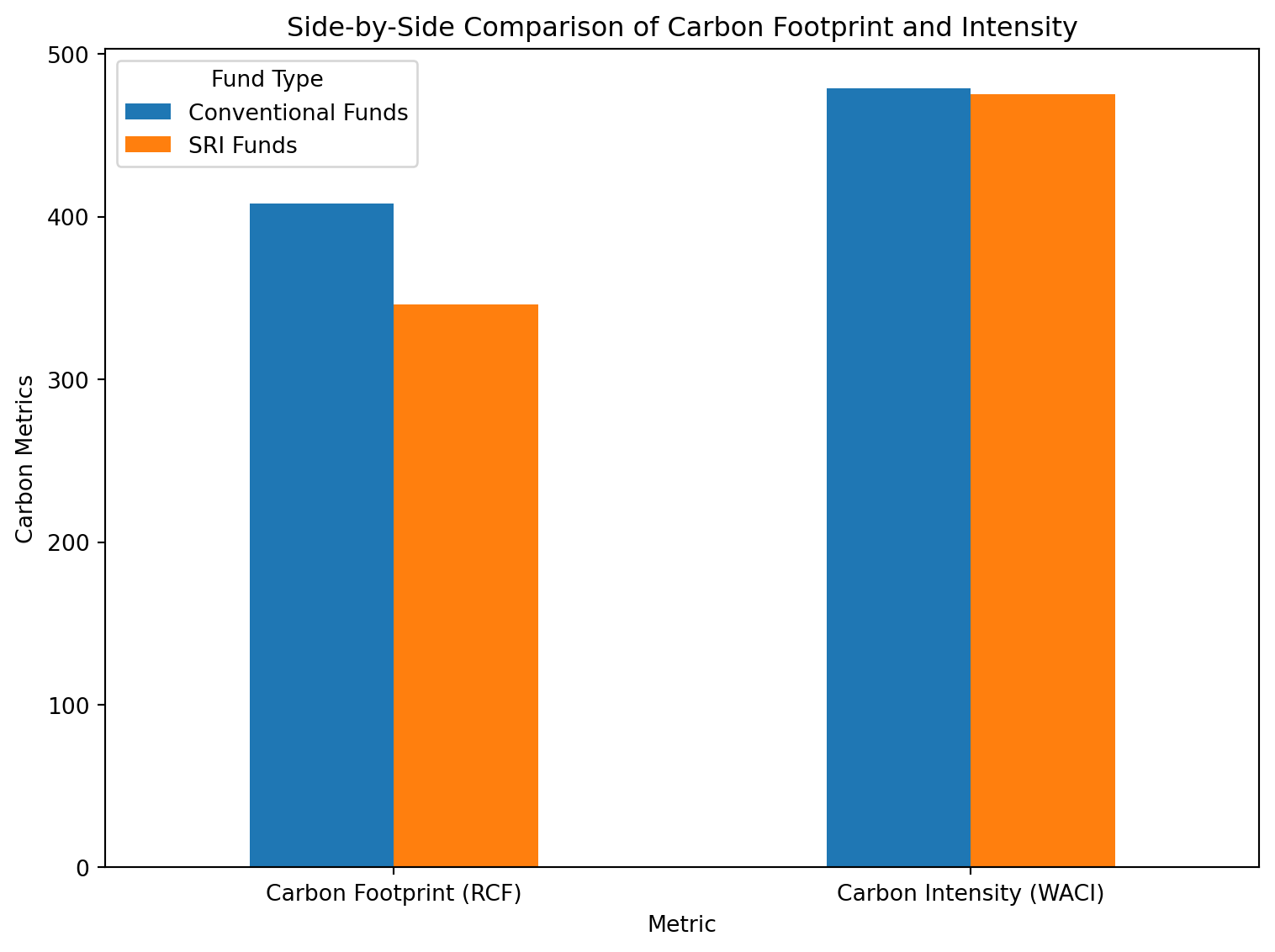
Figure 3: Conventional vs Socially Responsible Funds
(Sanjai Bhagat, 2022) argues that despite more than $2.7 trillion in ESG-rated AUM as of December 2021, (assets under management, the total market value of all the investments including stocks, bonds, crypto, etc.), that investment managers are looking after on behalf of their clients (81% in Europe and 13% in U.S.), funds marketed as ‘sustainable’ fail to deliver improvements to environmental and social metrics; the inconvenient truth is that ESG ratings don’t deliver better ESG performance. In the face a crisis of underperformance and mounting scandals, (James Phillipps, 2022) questions whether ESG is fundamentally broken or simply misunderstood. (PIETRO CECERE, 2023) calls ESG labeling confusing and arbitrary; fund selectors describe ESG labeling as “a total mess,” pointing to confusing definitions, inconsistent methodologies, and overlapping ratings that undermine clarity. (Financial Materiality Marks Next Big ESG Investing Battle, 2023) argues that the main challenge in credible ESG investing is defining which sustainability factors are genuinely financially material; the market is confused by inconsistent scoring methods and needs more government-backed policies that create incentives to align short- and long-term risk assessments. ESG-activist Georgia Elliott-Smith argues in her TEDx talk that large corporations are using ESG for greenwashing - but not changing their fundamental polluting practices (TEDx Talks, 2022).
ESG gave banks a new tool to market and sell environmentally conscious opportunities to institutional investors, for example: universities. A case in point being the partnership between HSBC and the University of Edinburgh (Reid, 2020). Some banks even use tactics such as co-branding with famous individuals. One of the largest private banks in Switzerland, Lombard Odier & Co (LOIM), launched a thematic bio-economy fund marketed using the words of The Prince of Wales, “Building a sustainable future is, in fact, the growth story of our time” (Kirakosian, Noveber 16, 2020). Investment can also be advertised in media publications. In the United Emirates, the richest oil-drilling region in the world, Mubadala, on of the state-owned sovereign wealth funds of the government of Abu Dhabi with $326 billion AUM, has taken out sponsored content in Bloomberg to market their national ESG vision and regulatory strategies to accelerate ESG investment growth toward net-zero goals, including many green energy projects; the Abu Dhabi funds together manage $1.7 trillion AUM (Maccioni, 2025; The Future of ESG Investing, n.d.).
Yet, the question remains, whether one can trust financial professional to hold ESG to a high standard. (Agnew, 2022) Argues that ESG has become a diluted corporate marketing label nearing the end of its usefulness, and urges a pivot toward more substantive responsible-investment practices beyond ticking the ESG checkbox. Banks are hiding emissions related to capital markets, which is a major financing source for oil and gas projects; the Partnership for Carbon Accounting Financials (PCAF) working group voted to attribute only 33% of CO2eq emissions from bond and equity underwriting to their own financed-emissions footprints, effectively excluding and hiding 2/3 of their carbon emissions (T. Wilkes, 2023). In the U.S., Blackrock, the largest private investment fund in the world with $10T USD under management, released guidance reflecting their plans to shift their investments to vehicles that are measured on ESG performance; however they later backtracked from their decision (Posner, 2024). In the U.K., while promising to become sustainable, oil companies are increasing production; Rishi Sunak, the Prime Minister of the UK at the time announced 100 new licenses for oil drilling (Noor, 2023). In a sense this strategy could be described as “have your cake and eat it too”, with investing going to all types of energy, regardless of its environmental footprint.
In early 2025, ESG investing saw $8.6 billion in global outflows, mainly due to political pushback in the U.S., including rollbacks of climate and DEI policies under the Trump administration. U.S. sustainable funds lost $6.1 billion, and Europe saw its first net outflow since 2018; ESG is shifting toward a more practical phase, with less focus on branding and more on measurable outcomes (Bioy, 2025; Johnson, 2025; Mitchell, 2025; Vosburg & Bioy, 2025).
Modern Slavery Persists and ESG Falls Short in Protecting Workers’ Rights and Mitigating Environmental Harm
In 2023, an estimated 50 million people were in slavery around the world; lack of supply chain visibility hides forced labor and exploitation of undocumented migrants in agricultural work; 71% of enslaved people are estimated to be women. (Borrelli et al., 2023; Kunz et al., 2023). (Christ & V Helliar, 2021) estimates 20 million people are ‘stuck inside corporate blockchains’. The Global Slavery Index measures the considerable ‘import risk’ of having slavery inside its imports (Walk Free, 2023). (Hans van Leeuwen, 2023) slavery affects industries from fashion to technology, including sustainability enablers such as solar panels. The International Labor Organization (ILO) estimates 236 billion USD are generated in illegal profits from forced labor (International Labour Organization, 2024). On the global level, the United Nations SDG target 8.7 targets to eliminate all forms of slavery by 2025 however progress has been slow (The Minderoo Foundation & Commonwealth Human Rights Initiative, 2020).
The California Transparency in Supply Chains Act which came into effect in 2012 applies to large retailers and manufacturers focused on pushing companies to to eradicate human trafficking and slavery in their supply chains. Similarly, the German Supply Chain Act (Gesetz über die unternehmerischen Sorgfaltspflichten zur Vermeidung von Menschenrechtsverletzungen in Lieferketten) enacted in 2021 requires companies to monitor violations in their supply chains (Bundesministerium für wirtschaftliche Zusammenarbeit und Entwicklung, 2023; Stretton, 2022).
The Modern Slavery Act has been passed in several countries starting with the U.K. in 2015, yet commodification of human beings is still practiced worldwide (UK Parliament, 2024). (Mai et al., 2023) finds the quality of the reporting remains low among FTSE 100 (index of highly capitalized listings on the London Stock Exchange) companies. Not everyone is in favor of more stringent labor practices either. Voters in Switzerland rejected the responsible business initiative in 2020 while the country is a global hub for trading commodities. “Switzerland has a hand in over 50% of the global trade in coffee and vegetable oils like palm oil as well as 35% of the global volume of cocoa, according to government estimates” (Anand Chandrasekhar & Andreas Gefe, 2021) begging the question can Swiss traders have more scrutiny over what they trade.
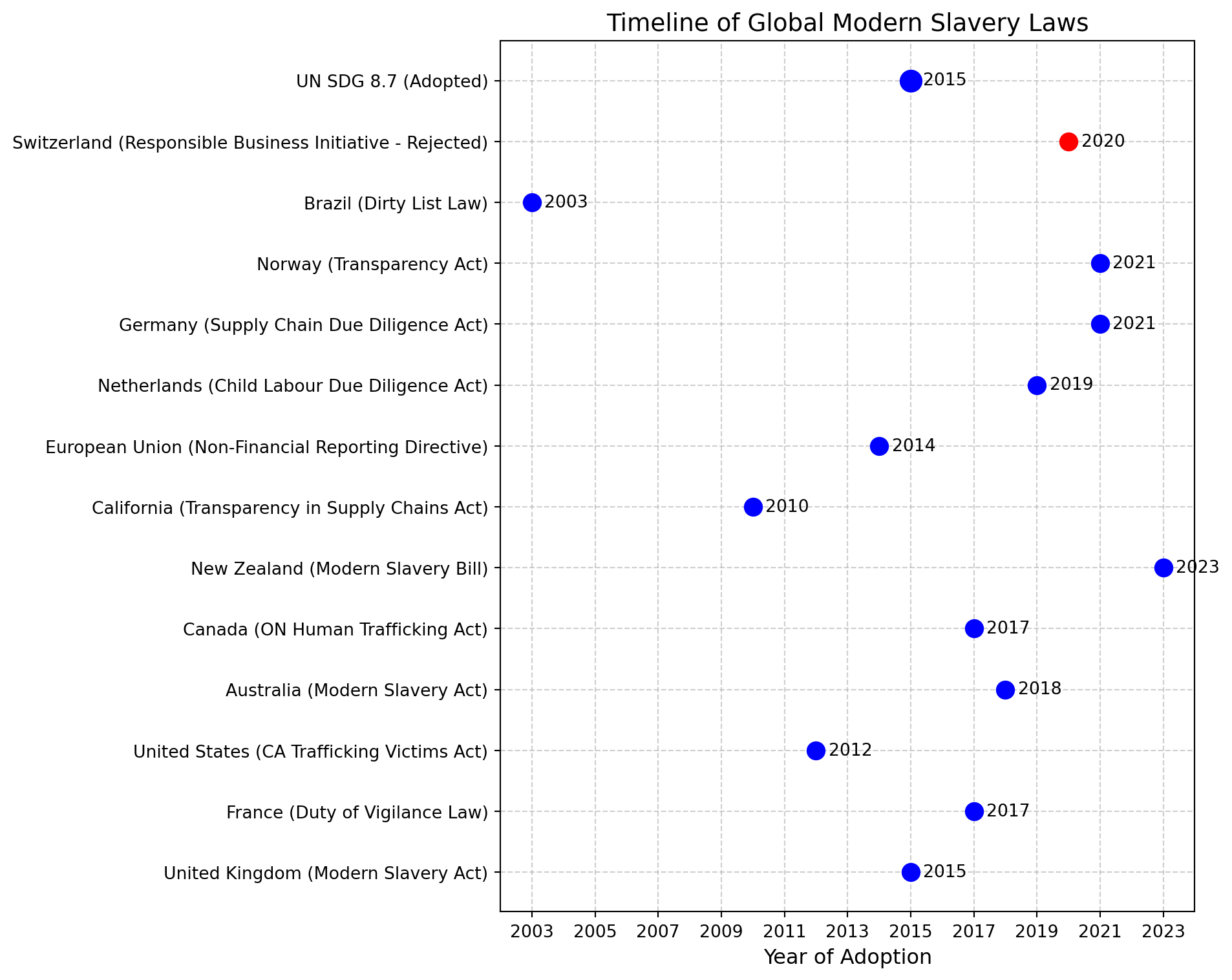
Figure 4: Slavery Laws
Slavery is connected to environmental degradation, and climate change (Decker Sparks et al., 2021). Enslaved people are used in environmental crimes such as 40% of deforestation globally. Cobalt used in technological products is in risk of being produced under forced labor in the D.R. Congo (Sovacool, 2021). In India and Pakistan, forced labor in brick kiln farms is possible to capture remotely from satellite images (Boyd et al., 2018). In effect, the need for cheap labor turns slavery into a subsidy keeping prices lower, and environmental degradation happening.
While reducing slavery in the supply chain sets very low bar for ESG, another aspect of supply tracing is the treatment of workers and working conditions. Currently, one of the largest factory compliance platforms - Fair Factories Clearinghouse (FFC) - covers 149 countries with standardized auditing in the apparel and consumer goods industries, monitoring over 40 thousand workplaces and facilitating over 100 thousand workplace assessments by its members (FFC - Fair Factories ClearingHouse - Compliance Solutions, n.d.). At a similar scale, Sedex spans 170 countries (Novotny, 2025). Nonetheless, with so much auditing happening, there are still cases were people fall through the cracks. Another wave of companies that create “worker voice apps”, intend to “give the supply chain a voice” by connecting workers directly to the consumer (even if anonymously, to protect the workers from retribution), include CTMFile, Alexandria, and PrimaDollar (PrimaDollar Media, 2021; Tim Nicolle, 2021; Worker Voice, 2022). If people working at the factories can directly report working conditions to a safe and anonymous tool, it could serve as a data source for further investigation of labor issues. While there are certainly pitfalls to this approach, one could imagine assigning each factory a social score based on the S-band of their general ESG performance.
These issues do not pertain only to legacy industries. With the increase of gig-work, platform economy companies have been criticized for their lack of concerns for workers rights (S in ESG). In the absence of continuous assessment, sometimes intrepid journalists come in to cover the issues. One example is the coverage by (Siddiqui et al., 2024), using portable Atmotube Pro air pollution tracking devices (the same device I use myself) to document how gig workers across South Asia, from India to Bangladesh to Pakistan are subjected to pollution, finding PM2.5 exposure 10x over the WHO daily guideline, shortening lives (according to the Air Quality Life Index) by 11.9 years in New Delhi, 8.1 years in Dhaka, and 7.5 years in Lahore, respectively. Air quality varies dramatically between places, however taking the global average in 2022, if fine particulate pollution were reduced to meet the WHO guideline, a person would have gained 1 year and 11 months of life expectancy (Institute for Climate and Sustainable Growth, 2022).
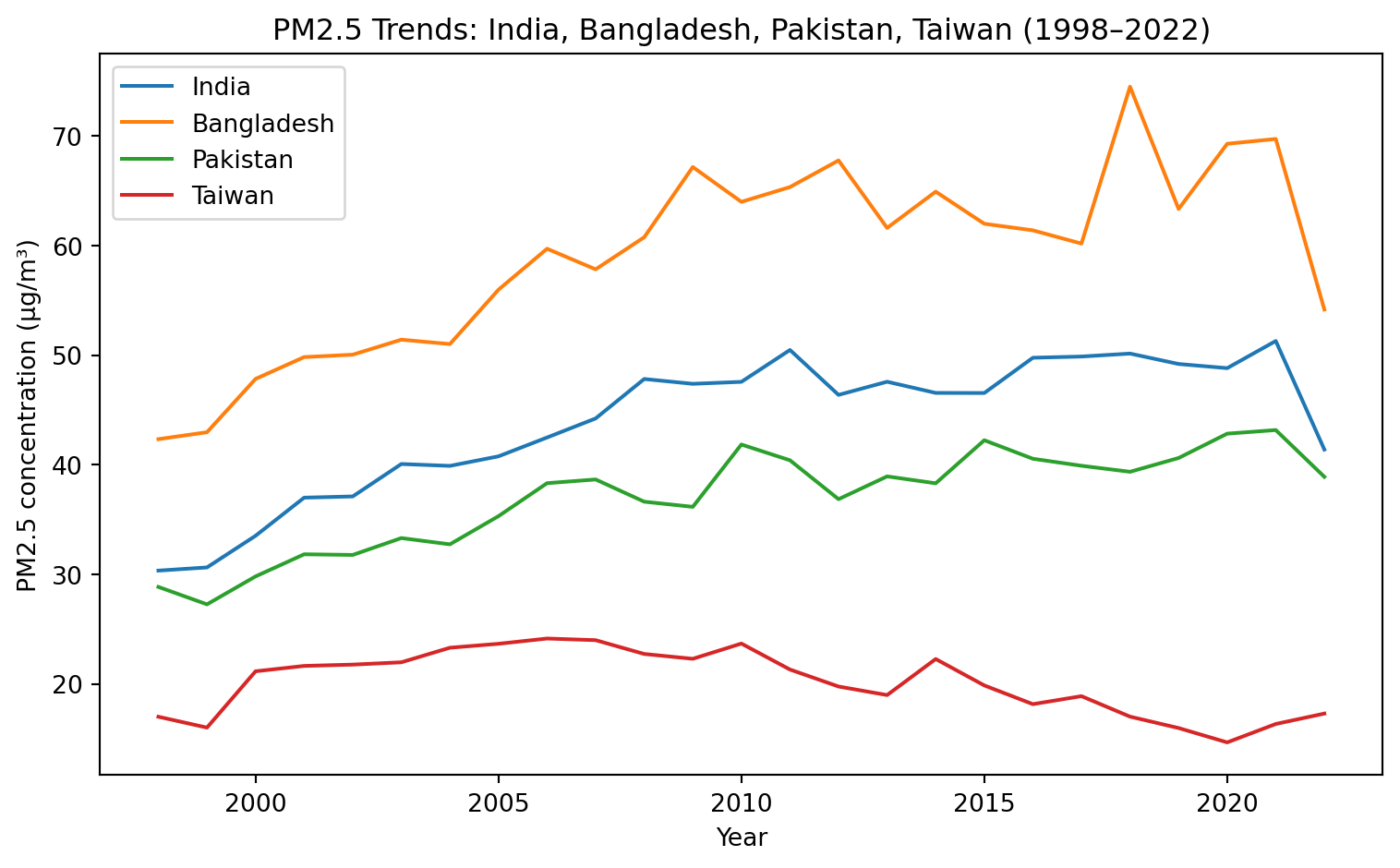
Figure 5: Air Quality in Taiwan vs South-East Asia
The above charts shows a comparison of air quality trends in South Asia vs Taiwan; while air pollution has increased in India, Bangladesh, and Pakistan, Taiwan has returned to the pollution levels of 1990s.
Environmental, Social, and Corporate Governance: Criteria for a Shared Language
Since the 1970s, international bodies, governments, and private corporations have developed sustainability measurement metrics, the prominent one being ESG (Environmental, Social, and Corporate Governance) developed by the UN in 2005. This rating system has already been implemented or is in the process of being adopted on stock markets all over the world and has implications beyond the stock markets, allowing analysts to measure companies’ performance on the triple bottom line: the financial, social, and environmental metrics.
Taiwan has listed ESG stocks since 2017 and was hailed by Bloomberg as a regional leader in ESG reporting (Grauer, 2017). In December 2017, the FTSE4Good TIP Taiwan ESG Index was launched, which tracks ESG-rated companies on the Taipei stock market (Taiwan Index, 2024). Nasdaq Nordic introduced an ESG index in 2018, and Euronext, the largest stock market in Europe, introduced an ESG index and a series of derivative instruments in the summer of 2020 (Euronext, 2020).
(The Importance of ESG Measurement and Canada’s Opportunity for Improvement, 2022) suggests ACWI ESG leaders outperform the non-ESG screened ACWI based on comparing MSCI indexes. It’s notable that ACWI ESG started to outperform the traditional ACWI only in the past few years (evidence that capital markets are starting to price sustainability, but still inconsistently). Nordic Climate Transparency Leadership analysis of Nasdaq OMX Nordic 120 companies: “companies with higher quality climate reporting also provide higher returns”. In contrast, (D. Luo, 2022) found firms with a lower ESG score are more profitable.
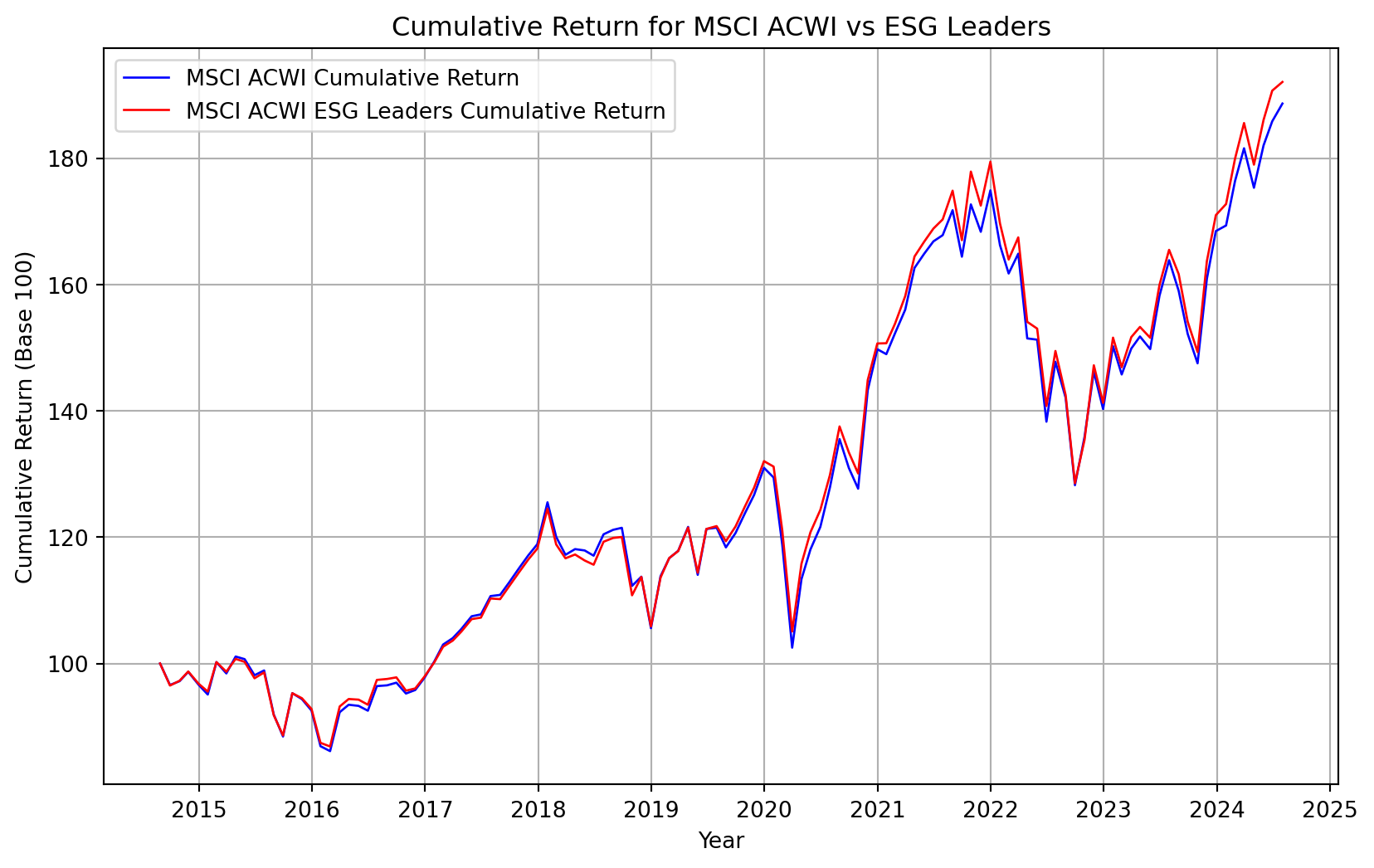
Figure 6: ESG Funds vs Non-ESG Funds
Towards Green Transparency - But Who Does the Rating?
Trucost, a company launched in 2000 to calculate the hidden environmental costs of large corporations and advance circular-economy practices was acquired in 2016 by S&P Dow Jones Indices, which by 2019 became a part of its ESG product offering (Indices, Oct 03, 2016, 08:30 ET; Mike Hower, Dec 9, 2015 7am EST; S&P Rolls Out Trucost ESG Data to Its Customers, 2019; Toffel & Sice, 2011). It’s parent company S&P Global also acquired RobecoSAM’s ESG rating business, consolidating S&P’s control of ESG ratings (George Geddes, 2019).
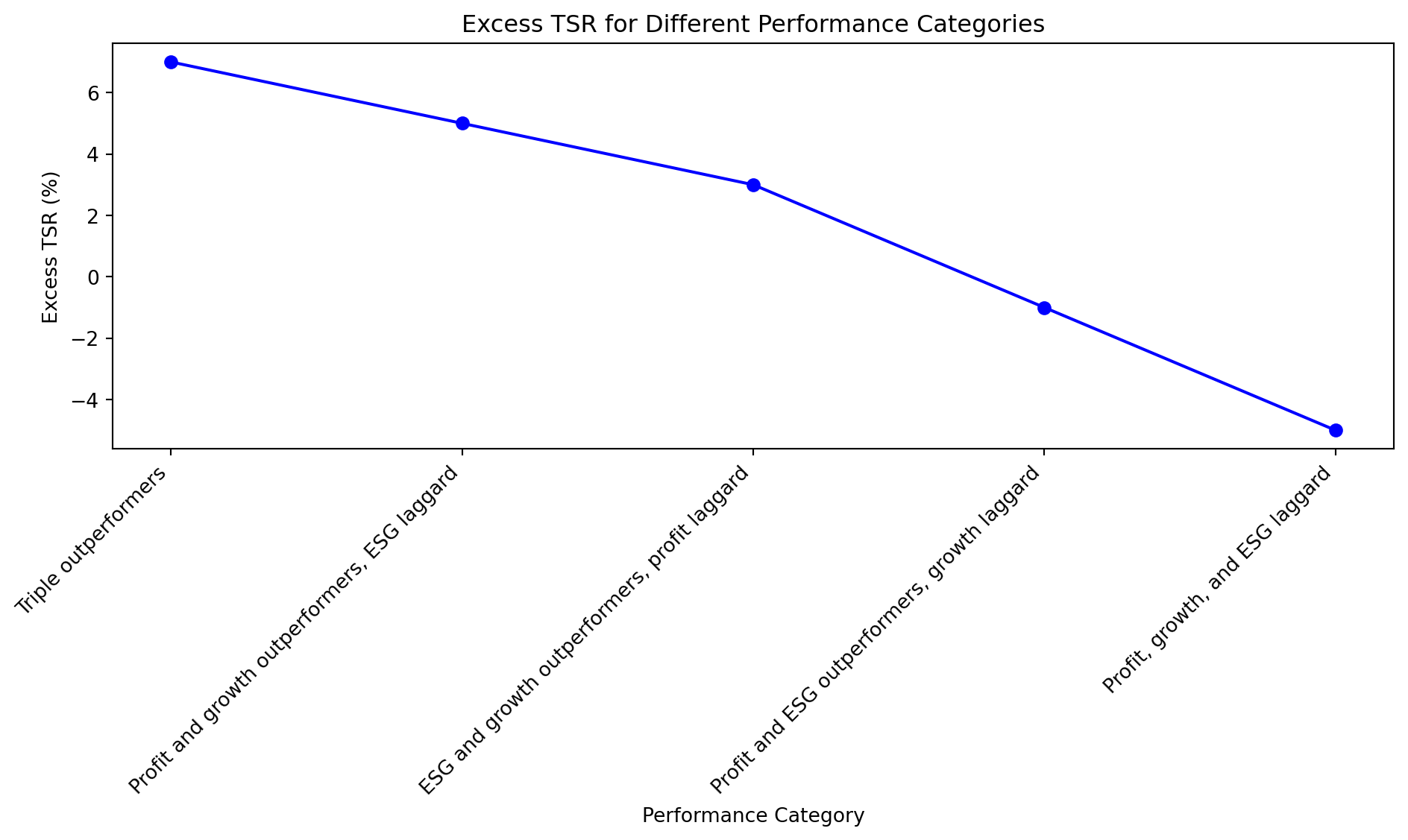
Figure 7: Company Performance
A meta-review of 136 research articles discovered the following ESG-rating agencies.
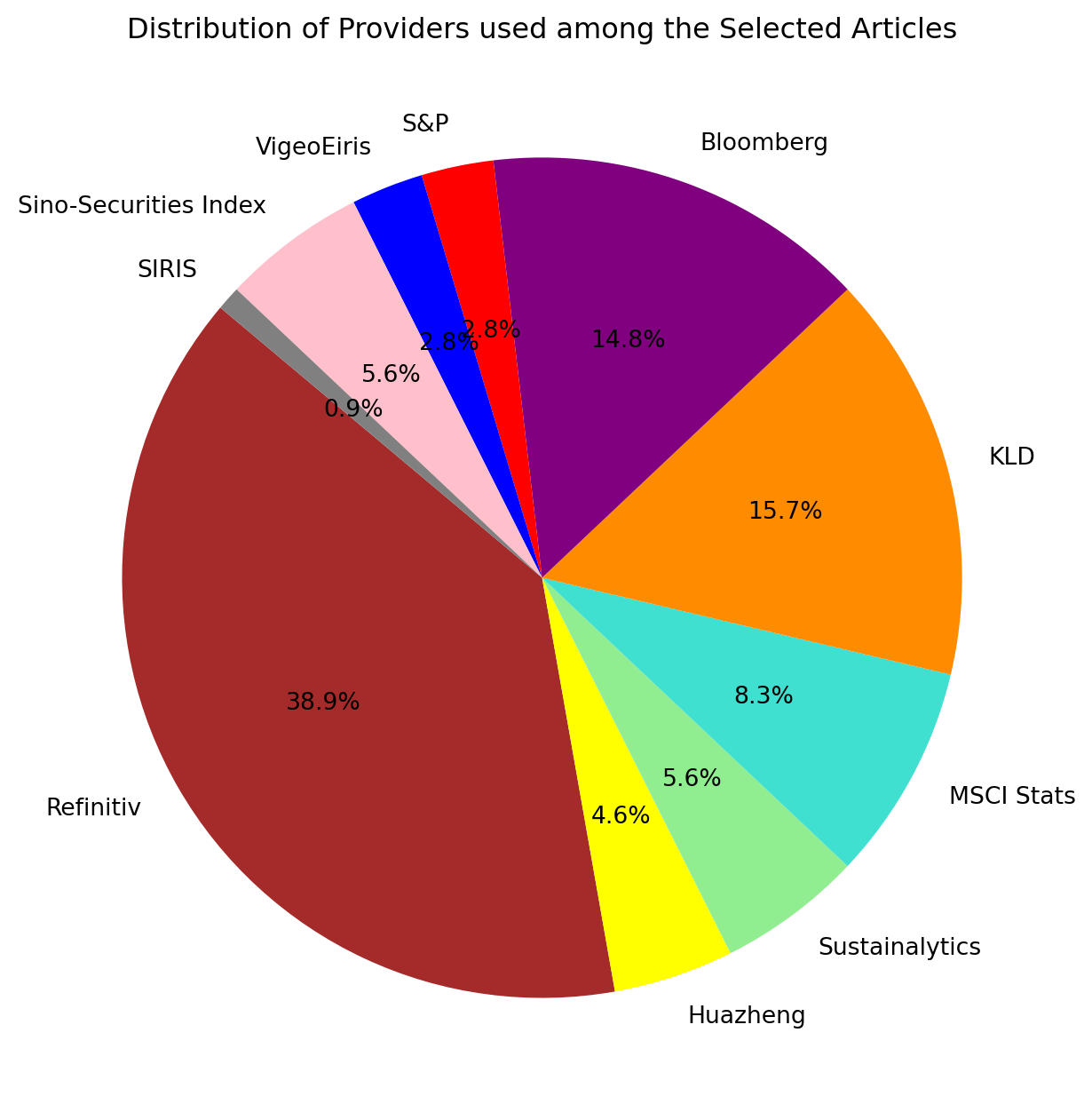
Figure 8: ESG Rating Agencies
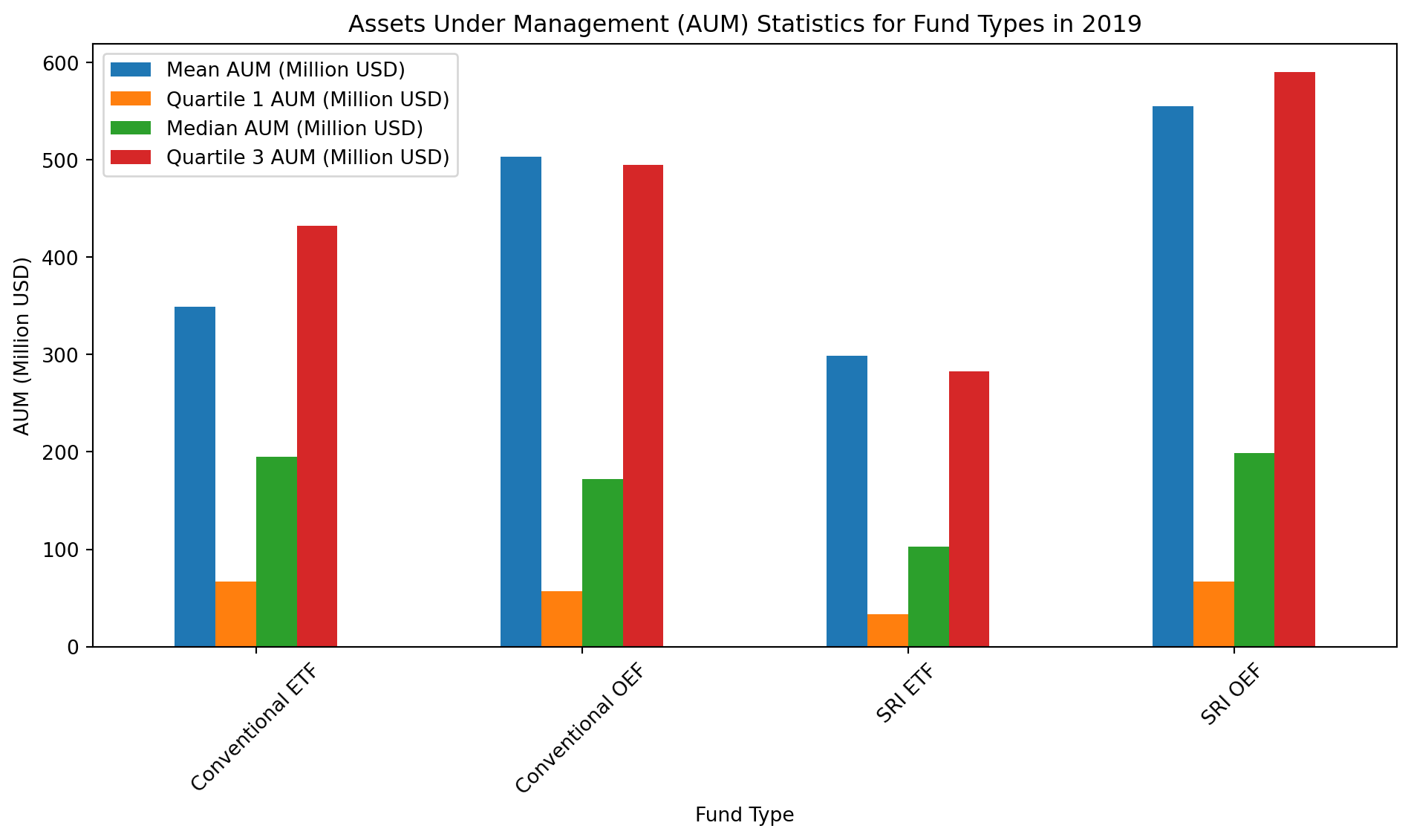
Figure 9: Types of Investment Funds
Three frameworks for corporate to think about ESG compliance is to position their company on the MEET, EXCEED, and LEAD scale based on the size, complexity and available resources of the company.
Robeco’s survey of 300 large global investors totaling $27T under management found biodiversity-protection is increasingly a focus-point of capital allocation (Robeco, 2023).
ESG Success Depends on Good Governance: Boards, Policy, and Investor Pressure
Governance in ESG is the G that makes E and S happen - or put in another way: governance drives social and environmental initiatives at companies. Yet MSCI research finds company boards severely lacking in climate experts; among the 164 large CO2eq emitters (1986 directors in total) benchmarked by the Climate Action 100+ alliance, 65% have no board member with demonstrated climate expertise, highlighting a major governance gap (Climate Action 100+, 2023; Sommer et al., 2024).
| Region | Companies (n) | ≥ 1 Climate Expert (%) | ≥ 1 Expert (count) | No Experts (%) | No Experts (count) |
|---|---|---|---|---|---|
| EMEA | 52 | 48 % | 25 | 52 % | 27 |
| Americas | 61 | 36 % | 22 | 64 % | 39 |
| APAC | 51 | 20 % | 10 | 80 % | 41 |
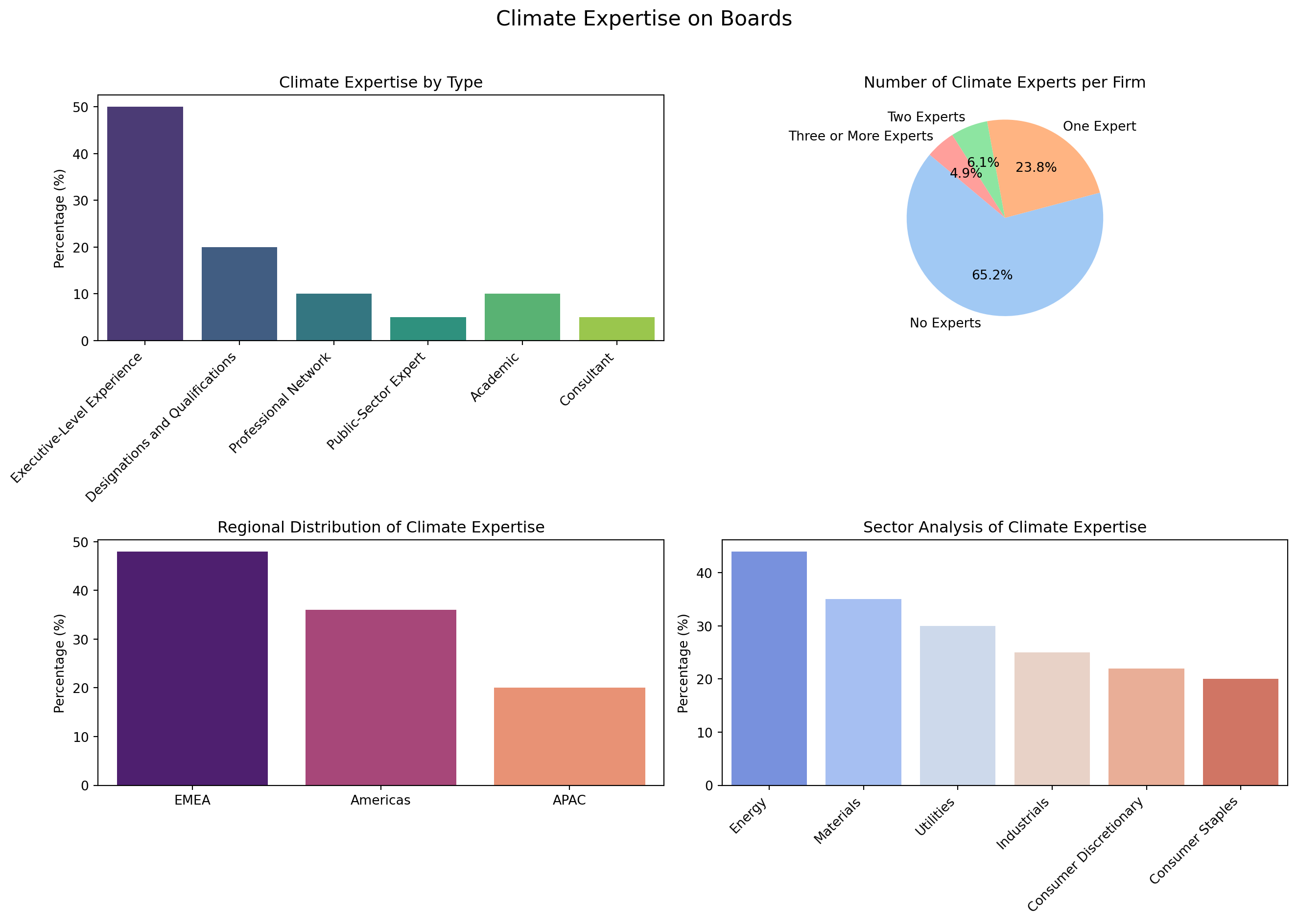
Figure 10: Lack of Board Members With Sustainability Expertise
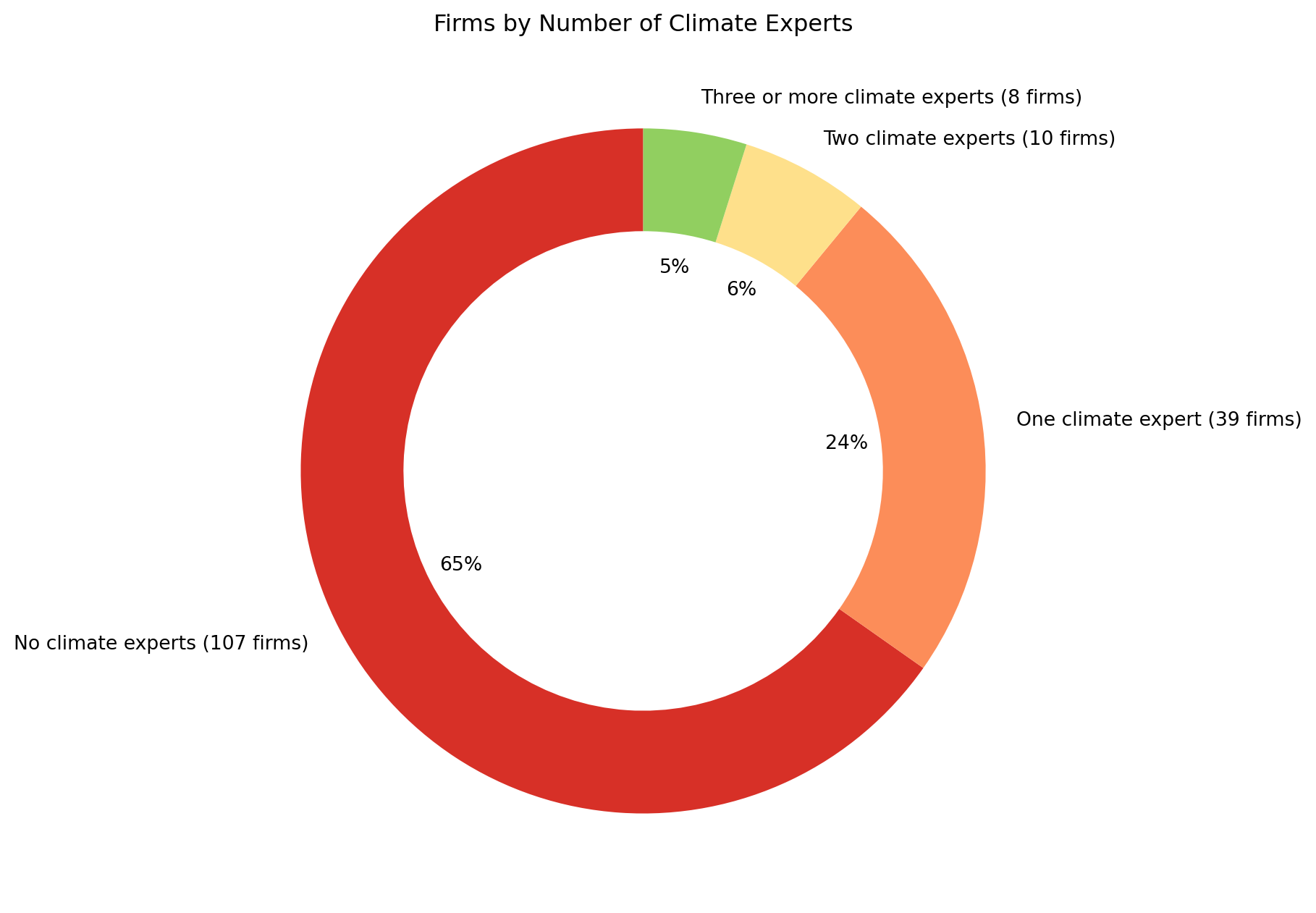
Figure 11: Large Carbon Emitters Lack Sustainability Experts
Most companies do not meet the criteria (Climate Action 100+, 2023).
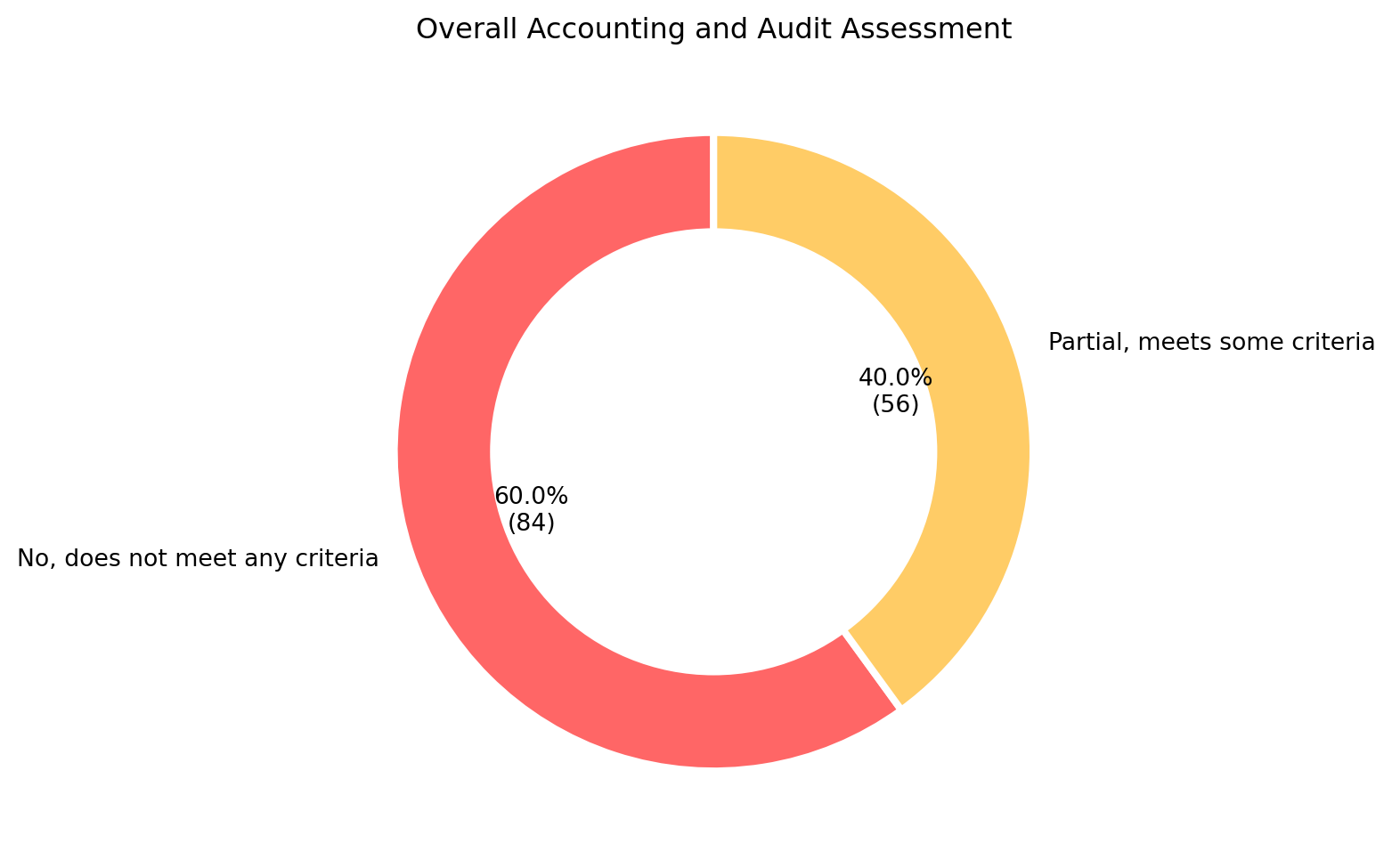
Figure 12: Large Carbon Emitters Do Not Meet Sustainability Criteria
Lack of leadership is a key challenge for sustainability. (Capgemini, 2022) “Many business leaders see sustainability as costly obligation rather than investment in the future” was the finding from the Capgemini Research Institute’s report “Why sustainability ambition is not translating to action” surveyed 2,004 executives from 668 large organizations; 53% of leaders view sustainability initiatives as a financial burden, believing the costs outweigh the benefits, and only 21% agree that the business case for sustainability is clear, underscoring a pervasive leadership gap that treats sustainability as a costly obligation.
A systematic study of 153 peer-reviewed papers of ESG literature published between 2006 and 2023 around the world reports the major determinants of high ESG performance are board member diversity, firm size, and CEO attributes; actively diversifying boards, especially adding members with sustainability expertise, and aligning executive compensation with ESG targets to translate strategic ambitions into operational results, may boost ESG outcomes (Martiny et al., 2024).
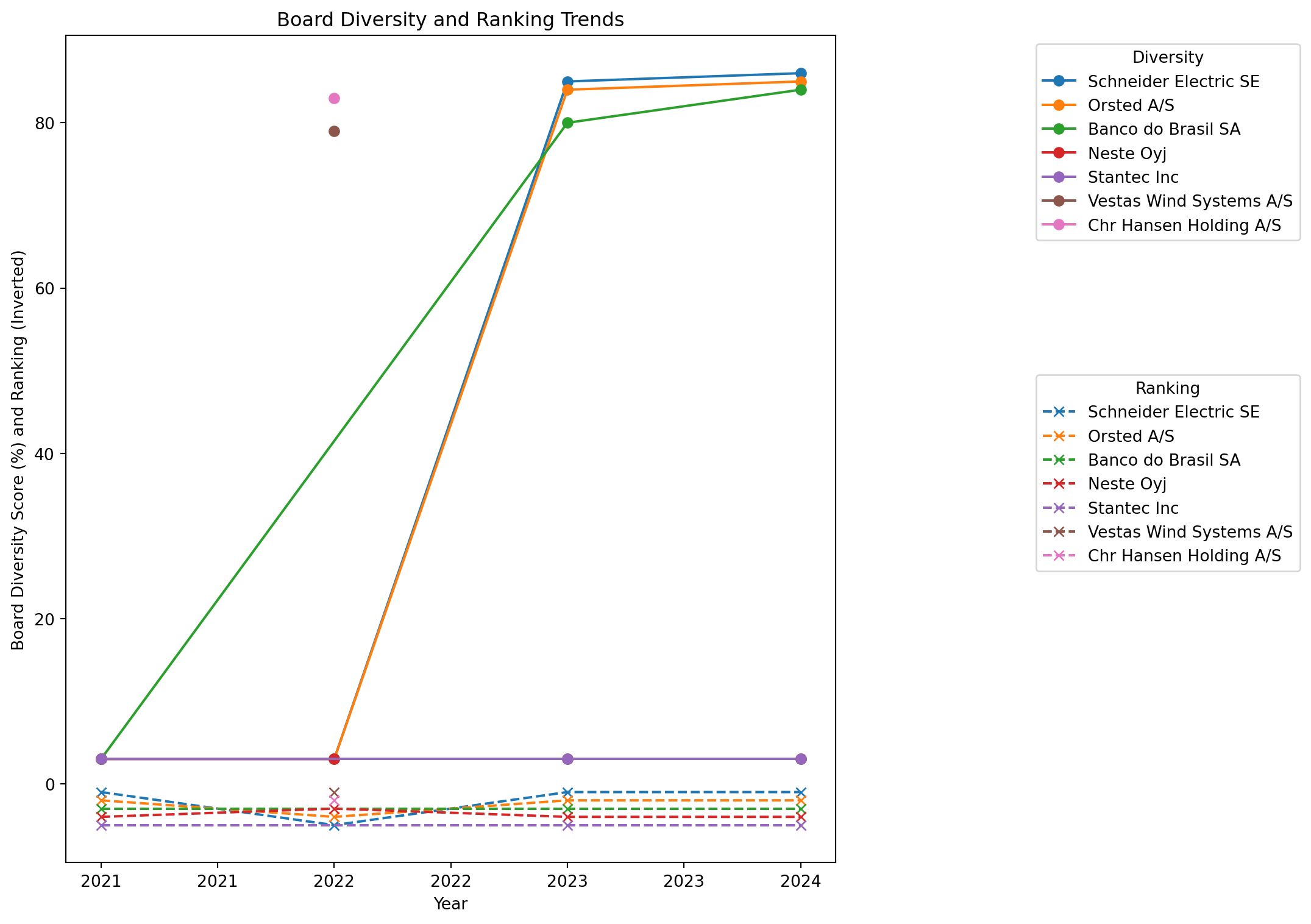
Figure 13: Board Diversity
The CEO of the Swedish clothing producer H&M - one of the largest fast-fashion companies in the world -, recognized the potential impact of conscious consumers as a threat (Hoikkala, 2019) and at the same time launched a clothes repair service in partnership with the Norwegian start-up Repairable, as reported by the Norwegian Sustainability Hub (S HUB, 2018). This kind of discrepancies are all over the place. While Coca-Cola is the largest plastic polluter in the world, at the same time it runs the “World Without Waste” program which supports packaging recycling around the world, reporting achieving a global 90% recycling rate for Coca-Cola packaging (Break Free From Plastic, 2024; Simões-Coelho et al., 2023). Large corporations such as Coca-Cola and Nestle also support the biodiversity law, calling for a level playing field for business limit biodiversity risk (Greens EFA, 2023).
Many large businesses have tried to find solutions by launching climate-focused funding. (Korosec, 2021) reports that Amazon’s 2B USD to a Climate Pledge Fund earmarked to fix climate problems is invested in energy, logistics, and packaging startups, which will reduce material waste. “Good intentions don’t work, mechanisms do,” Amazon’s founder Bezos is quoted as saying in (Clifford, 2022). Walmart is taking a similar approach, having launched a project in 2017 to set CO2 reduction targets in collaboration with its suppliers (Walmart, 2023). These examples underline how money marketed as climate funding by retail conglomerates means focus on reducing operational cost of running their business through automation and material savings.
Shareholders can leverage their numbers and join forces in order to affect the board members of large corporations. For example, the As Your Sow NGO aims to champion CSR through building coalitions of shareholders and taking legal action, including the Fossil Free Funds initiative which researches and rates funds’ exposure to fossil fuels finance and its sister project Invest in Your Values rates retirement plans offered by employers (mostly US technology companies) (As You Sow, 2024a, 2024b).
Board diversity in the top 5 sustainable companies in 2024 based on Corporate Knights rankings (Corporate Knights, 2024).
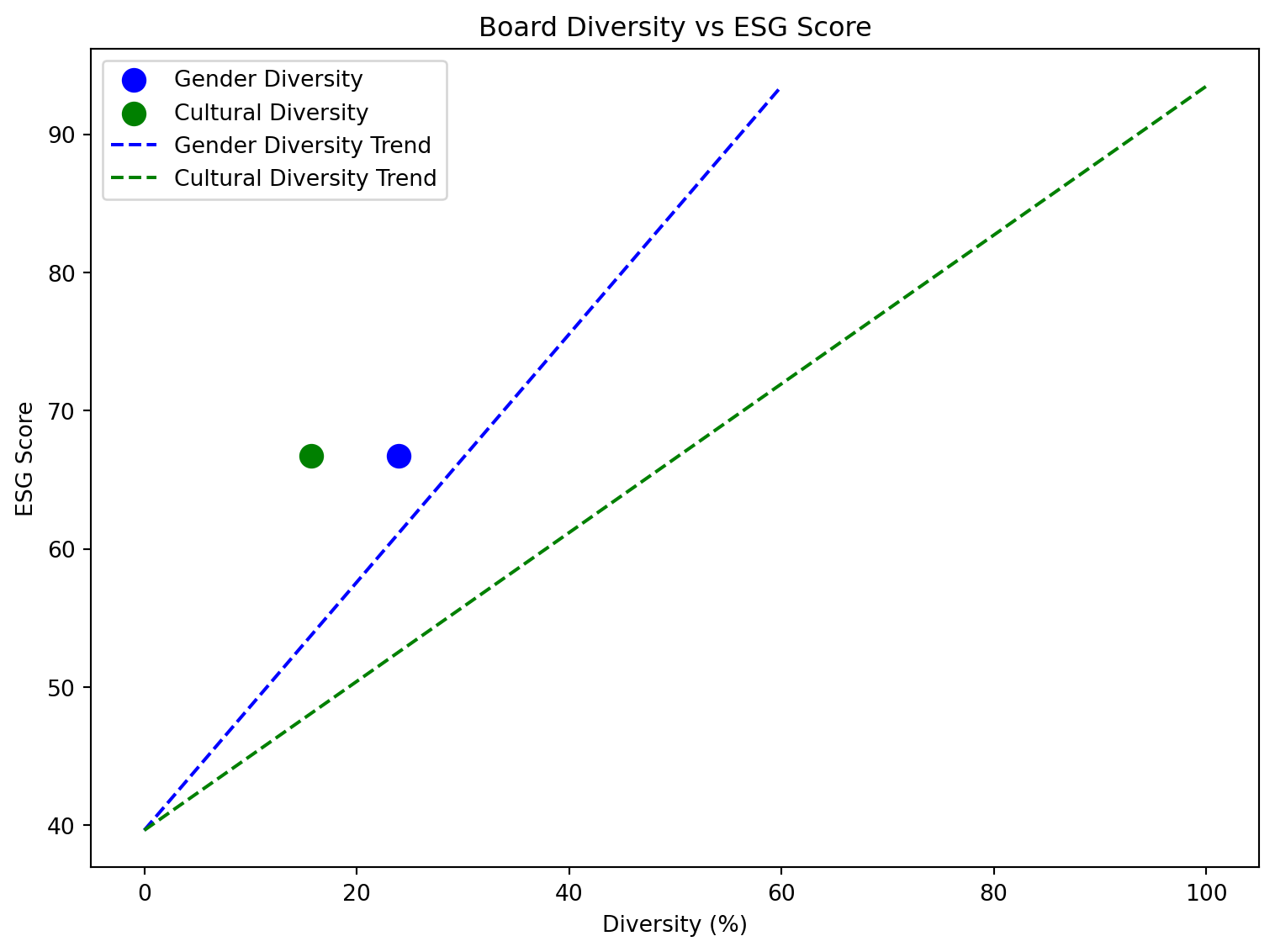
(a) Simplified comparison chart for board diversity (gender and cultural) vs ESG score
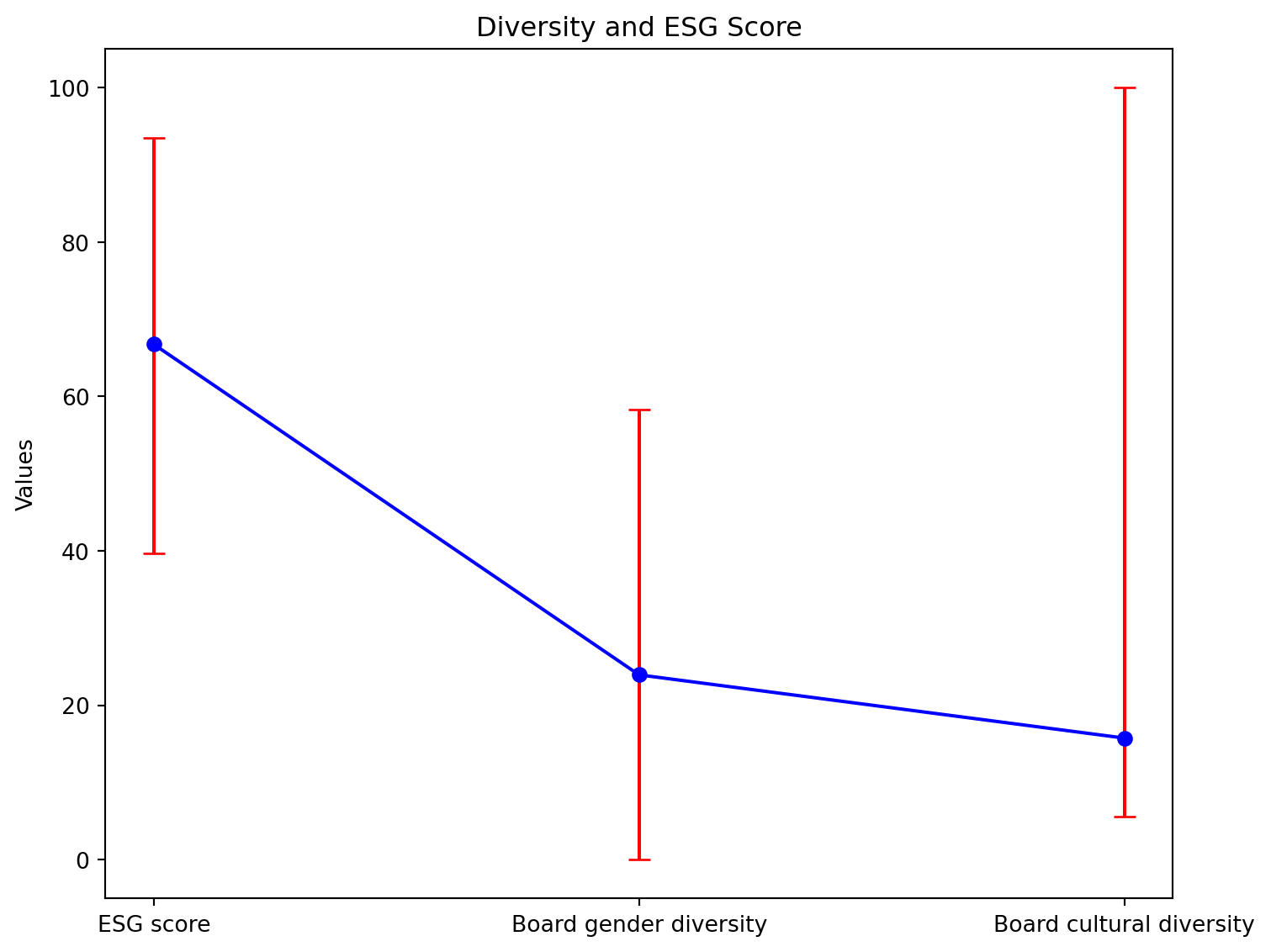
(b)
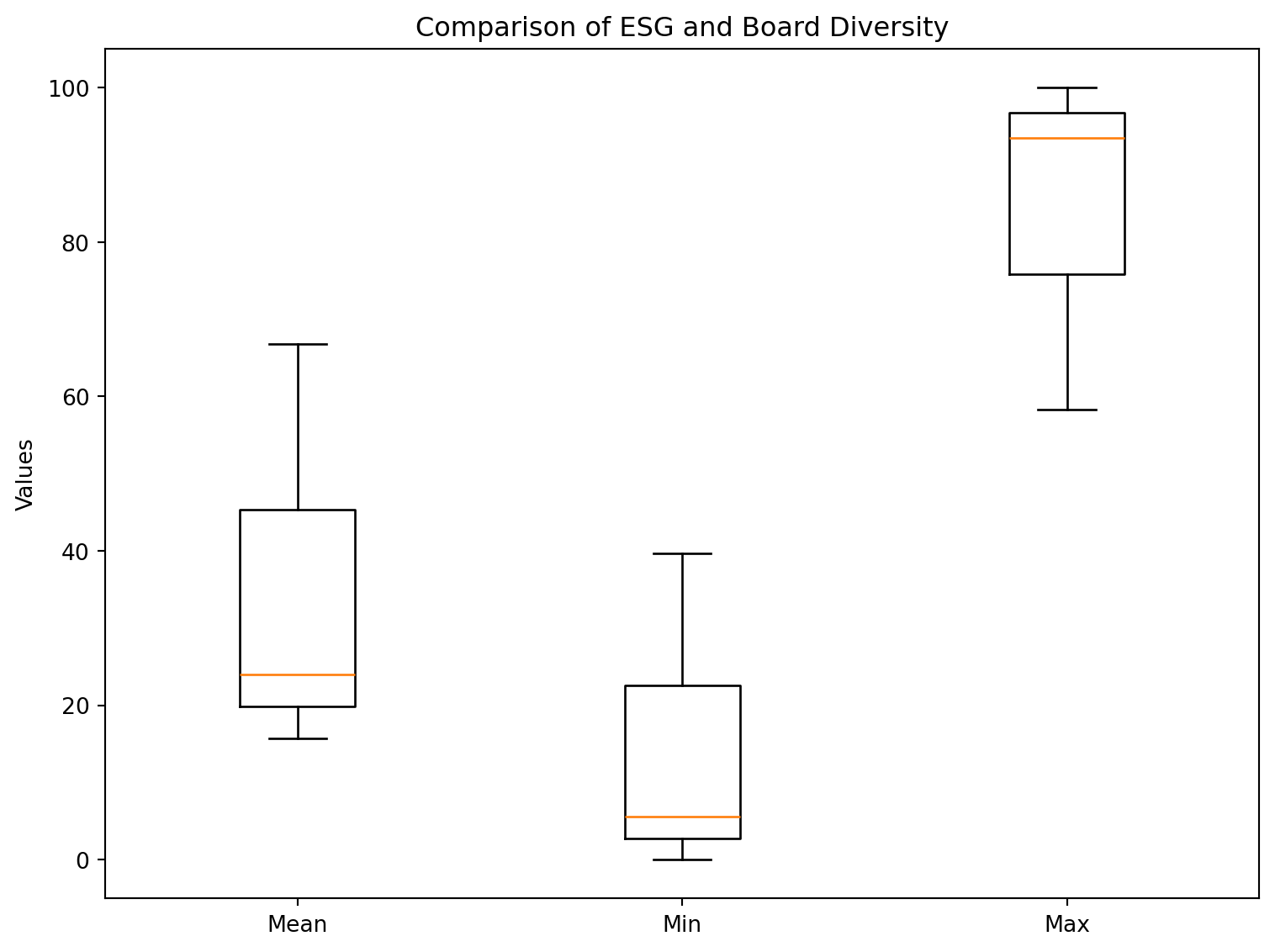
(c)
Figure 14
ESG Success Depends on Digitization and GenAI
In the U.S. and European banking sector (Dicuonzo et al., 2024) performed an analysis of 1551 banks, of which only 180 banks disclosed sufficient ESG data for comparison, building a Fintech Adoption Index; the key findings included a positive correlation between Fintech Index and ESG Scores, suggesting the adoption of technology has a statistically significant influence on better environmental stewardship, social and governance quality. Even better predictors of a high ESG score were Board Gender Diversity (Women on Board), the Size of the Bank, and Board Independence (governance structures with more independent directors could be more socially and environmentally responsible).
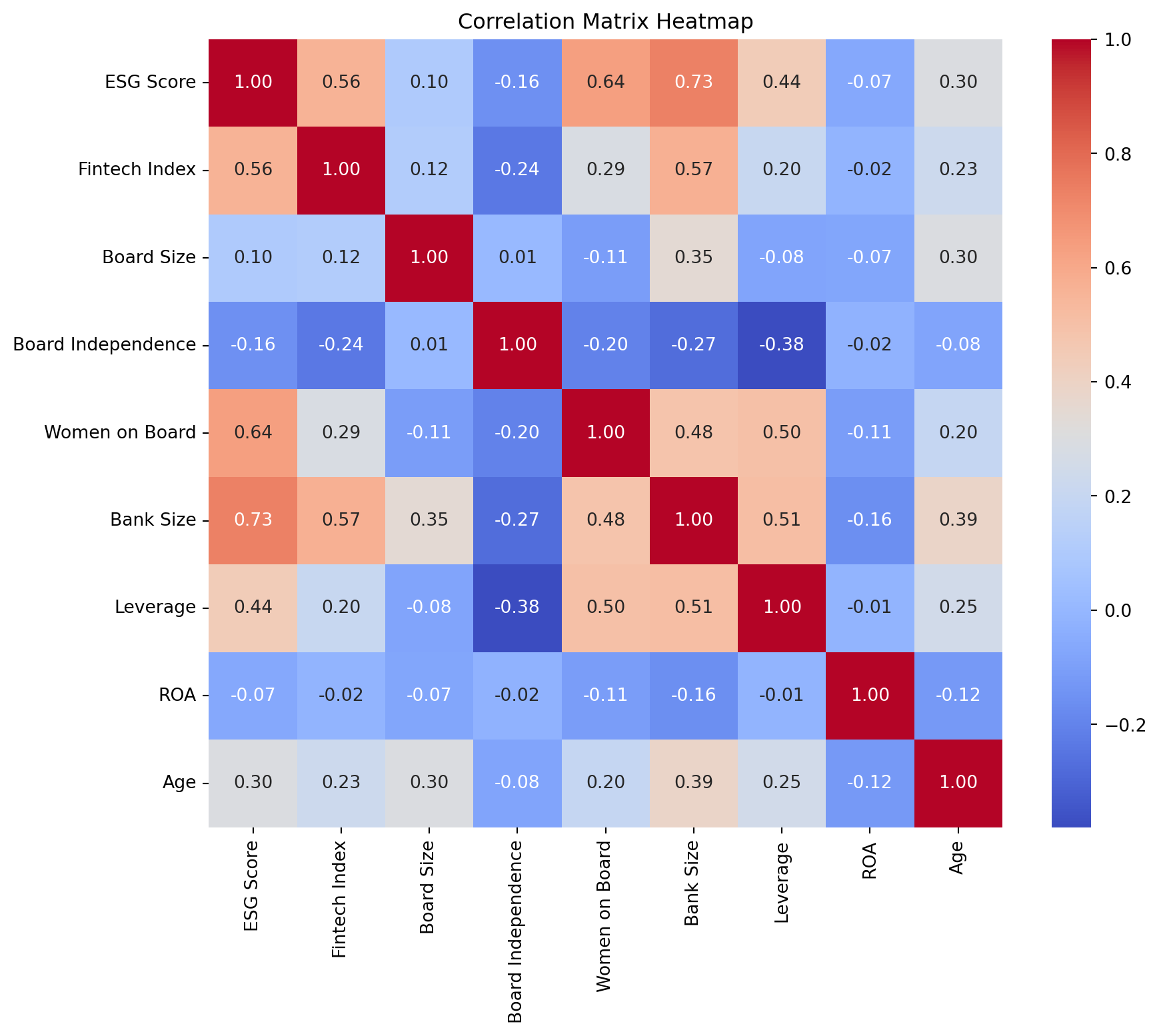
Figure 15: Fintech Adoption Predicts Higher ESG
The ability to build sustainability into the organization requires deep understanding of how the complex structure works and what drives change and innovation within business units. (Jim Boehm et al., 2021) distilled key strategies from the banking sector to speed up digital transformation, while improving risk management and compliance (see table below).
| Strategy | Description |
|---|---|
| Enterprise-level Risk Taxonomy | A unified classification system that defines and categorizes all risk types across the entire organization. |
| Embedded Controls in Agile Delivery | Risk-and-compliance integration directly into agile development sprints (a type of management style in building software) to catch issues as code is written. |
| Cross-functional Risk–Business Collaboration | Joint ownership of risk by compliance teams and business units, ensuring controls are practical and business-aligned. |
| Metrics-driven Monitoring | Continuous tracking of key risk indicators through quantifiable metrics to spot trends and trigger alerts. |
| Proactive Remediation | Early detection and rapid resolution of control defects before they escalate into larger compliance or security gaps. |
| Continuous Capability Building | Ongoing training and tooling updates; best-practice sharing to keep risk-management skills and processes current. |
These banking transformation strategies sit alongside strict regulatory requirements, such as Know Your Customer (KYC), and emerging technologies like generative AI, which is already reshaping compliance workflows. (Rahul Agarwal et al., 2024) details how genAI is being used for the purposed of compliance and comprehensive risk assessment in modern banking.
| GenAI Use Case | Description |
|---|---|
| Regulatory Compliance | Automate policy-document triage: draft regulatory-change summaries and flag emerging rules, then generate compliance manuals. |
| Financial Crime | Generate suspicious-activity reports; streamline AML/KYC checks; identify anomalous transaction patterns. |
| Credit Risk | Synthesizing credit-risk reports on demand by pulling together relevant financial data from a variety of sources, resulting in faster borrower risk assessments. |
| Analytics and Modeling | Build and validate risk models; run scenario analysis; summarize complex data sets for insights. |
| Cyber Risk | Monitor threat-intelligence feeds; draft incident-response reports; automatically search for, and possibly even patch security gaps. |
| Climate Risk | Distill lengthy climate-scenario reports; visualize key metrics; accelerate enterprise-level climate-risk assessments. |
In the context of China’s industrial modernization, (Lu & Li, 2023) finds that digitization is the pathway to increased Environmental Information Disclosure (EID) and Green Innovation, correlating with increased numbers of green patents and sustainable R&D projects.
While ESG is riddled with problems, it has started a common language - the advice consultancies are providing to banks make use this common language to helps banks to sell strategical alignment for long-term institutional sustainability in terms of environmental, social, and governance performance. PWC suggests “asset managers educate their staff and client base. It will be critical to build stronger ESG expertise among their employees by up-skilling existing staff on ESG principles and strategically scout for and integrate more diverse and ESG-trained talent” (PWC, 2020).
In general, a futures contract is an agreement to buy or sell a market index at a fixed price on a set date, locking in today’s price for the future. The exchange’s clearinghouse guarantees the trade, so one doesn’t have to worry about the other side not honoring the deal. ESG futures specifically, are financial derivatives, standardized contracts, which allow investors to hedge or speculate on the future performance of ESG-compliant investments. Some ESG futures contracts include the E-mini S&P 500 ESG futures (on the Chicago Mercantile Exchange, a large derivatives exchange), which track the U.S. S&P 500, while skipping companies with poor ESG scores, letting one bet on or hedge “sustainable” American companies with large market capitalization; notably, the index has recently been renamed to S&P 500 Scored & Screened Index, without a specific mention of the acronym ESG, while keeping the methodology unchanged, presumably for marketing purposes in the changing political landscape (CME Group, 2025). In Europe, the STOXX Europe 600 ESG-X futures (on the Eurex stock market) let one trade Europe’s top ESG-screened companies, with cash settlement and the same margin rules as regular (non-ESG) index futures (Deutsche Börse Group, 2025; Harding, 2019). Globally, the MSCI Sustainability and Climate Change futures (on the Intercontinental Exchange) cover global and regional ESG benchmarks, allowing one to take a position on low-carbon or Paris Climate Agreement-aligned stock indices anywhere in the world (Intercontinental Exchange, 2025). The CFI2Z4 Carbon Emissions Futures tool tracks live coverage of ICE EU Allowance futures priced in EUR per tonne, with real-time quotes as well as historical charts, enabling traders to monitor and analyze the compliance-phase carbon market (Investing.com, 2024). Specifically in Taiwan, the FTSE4Good TIP Taiwan ESG futures (on TAIFEX, Taiwan Futures Exchange), launched in June 2020 to follow a basket of Taiwanese stocks that meet global ESG standards (TAIFEX, 2025).
ESG Accessibility: Curbing Corruption with Real-time Data Streams and Product Lifecycle Traceability
For AI-powered assistants to be able to provide guidance, metrics are needed to evaluate sustainable assets, and ESG provides the current state-of-the-art for this. The largest obstacle to eco-friendly investing is greenwashing where companies and governments try to portray an asset as green when in reality it’s not. A personal investing assistant can provide an interface to focus on transparency, highlighting data sources and limitations, to help users feel in control of their investment decisions, and potentially even provide large-scale consumer feedback on negative practices.
However, fundamentally, unless there is significant headway in curbing greenwashing, companies today use ESG as a marketing tool - but it could achieve much more. One of the key emerging issues is that ESG is an annual report not real-time, actionable data. (Sahota, 2021) argues that “[T]hanks to other emerging technology like IoT sensors (to collect ESG data) and blockchain (to track transactions), we have the infrastructure to collect more data, particularly for machine consumption. By measuring real-time energy usage, transportation routes, manufacturing waste, and so forth, we have more quantifiable ways to track corporations’ environmental performance without relying purely on what they say.”
For corporations to respond to the climate crisis, they are expected to become more digital and data-driven. Requirements for ESG compliance has given rise to a plethora of new monitoring tools. There’s a growing number of companies helping businesses to measure CO2eq emissions in through their entire product lifecycle. In order to improve product provenance, blockchains offer transparency. Several enterprise blockchain offerings from vendors such as Hyperledger Fabric and ConsenSys use immutable supply‐chain ledgers to record origin, certifications, and product movements end‐to‐end (Blockchain Companies Team Up To Track ESG Data, 2021). Blockchain’s immutable data and programmable incentives enable transparent ESG tracking, secure carbon‐credit registries and tokenized rewards that align corporate behavior with climate goals (Ganu, 2021). Sourcemap’s supply chain mapping platform provides tooling to know your suppliers’ suppliers, monitoring every tier of company supply chains, continuously collecting and checking the integrity of supplier data, using 3-party registries and watchlists, real-time transaction traceability, creating an audit trail for instantly detecting fraud or non-compliance with effective regulations and due-diligence laws (Sourcemap, 2025). The founder of Sourcemap, Leonardo Bonanni, started out with doing product autopsy in 2015 to assess product sustainability (<< Fast fashion >>, 2023).
(Ratkovic, 2023; Tim Nicolle, 2021) believe that real-time ESG data is more difficult to greenwash, because the supply chain data is a significant source of ESG content; a fundamental breakthrough would be surfacing real-time ESG data directly to individual consumers browsing products - be it in physical shops or online, - allowing customers to judge if they want to purchase from this business. (Real Time ESG Tracking From StockSnips, 2021) built a tool - called Stocksnips - to turn unstructured news into daily ESG sentiment signals, starting with about 1000 companies; the sentiment signal shows significant correlation with expert ratings, offering an automated forward-looking gauge of corporate ESG performance. Likewise, LSEG’s MarketPsych ESG Analytics platform mines global news and social feeds for near‐real‐time controversy alerts and ESG risk‐scores with historical data going back to 1998 (LSEG, 2025). Envify aims to automate compliance with the Corporate Sustainability Reporting Directive (CSRD), by providing a suite of carbon accounting tools (Rajan, 2025). Flowit Estonia automated real‐time CO2eq accounting in 2022 by combining invoices and sensor data to generating instant per‐transaction emission footprints (Indrek Kald, 2022). A startup called Makersite proposes instant sustainability impact from supply chain, deep supply-chain data can surface product–level environmental footprints in minutes instead of months, which they call “Product Lifecycle Intelligence” (Kyle Wiggers, 2022). More recently, Makersite has updated the language they use for promoting their product, now calling it Product Sustainability Modeling (Makersite, n.d.). Apart from product level analytics, there’s sustainability data on source raw materials. CarbonChain rolled out asset-level emissions ratings for individual mines: covering metals including steel, aluminium, nickel, and copper - so product developers can benchmark material sources’ carbon intensity against industry averages (CarbonChain, n.d.).
Payments
Consumer Activists are a Small Minority
Recognition precedes protection, as the Estonian slogan goes: “Õpetame märkama, et oskaksime hoida” / “Learn to notice so we can preserve.” (Tartu loodusmaja, 2019). (Milne et al., 2020) coins the term mindful consumers, who do research and are aware of the impact of their shopping choices. Yet these types of mindful consumers and conscious consumers only make up a small percentage of the entire consumer public, which may make individual action seem close to meaningless.
For consumer activism to become mainstream it needs to much simpler. Sustainable options must become effortless: we need one-click tools that turn everyday spending into votes for circular design, transparent supply chains and mandatory climate disclosures. By setting clear CO2-reduction targets for products, embedding dynamic ESG-risk pricing at point of sale, and harnessing our collective purchasing power, we can push companies to embed sustainability at the core of business, transforming vague ESG ideals into tangible market incentives.
There is plenty of research on if and how sustainable shopping could be possible. Already in 2016, (Klinglmayr et al., 2016) proposed a mobile app to channel “political consumerism” into sustainable shopping through self-regulation: personalized recommendations could be provided by aggregating vast product datasets into distilled advice, empowering individuals follow clear sustainable-shopping rules, discover like-minded peers, and communicate concerns directly to retailers, in theory turning vague ESG ideals into a transparent, data-driven, community-backed approach to sustainable consumption - however the Horizon 2020-funded was only deployed in 2 supermarkets (Estonia and Spain) as a pilot project. In order to understand the needed changes to shopping, (Fuentes et al., 2019) employed a shopping-as-practice ethnography in a Swedish zero-waste grocery store to show that removing packaging requires reinventing the shopping practice itself, e.g. introducing reusable containers, new retail setups, and consumer routines. (Weber, 2021) proposed a sustainable shopping guide in a study which demonstrates that embedding eco-score rankings into a mobile shopping app significantly increases consumers’ selection of low-impact food products by improving decision support and reducing information overload. Consumer psychology is complex and (van der Wal et al., 2016) discusses how status motives make people publicly display sustainable behavior, revealing that shoppers purchase branded reusable bags rather than bring their own, exposing a “paradox of green to be seen” and its hidden environmental costs.
Sustainable consumption relationships in Europe.
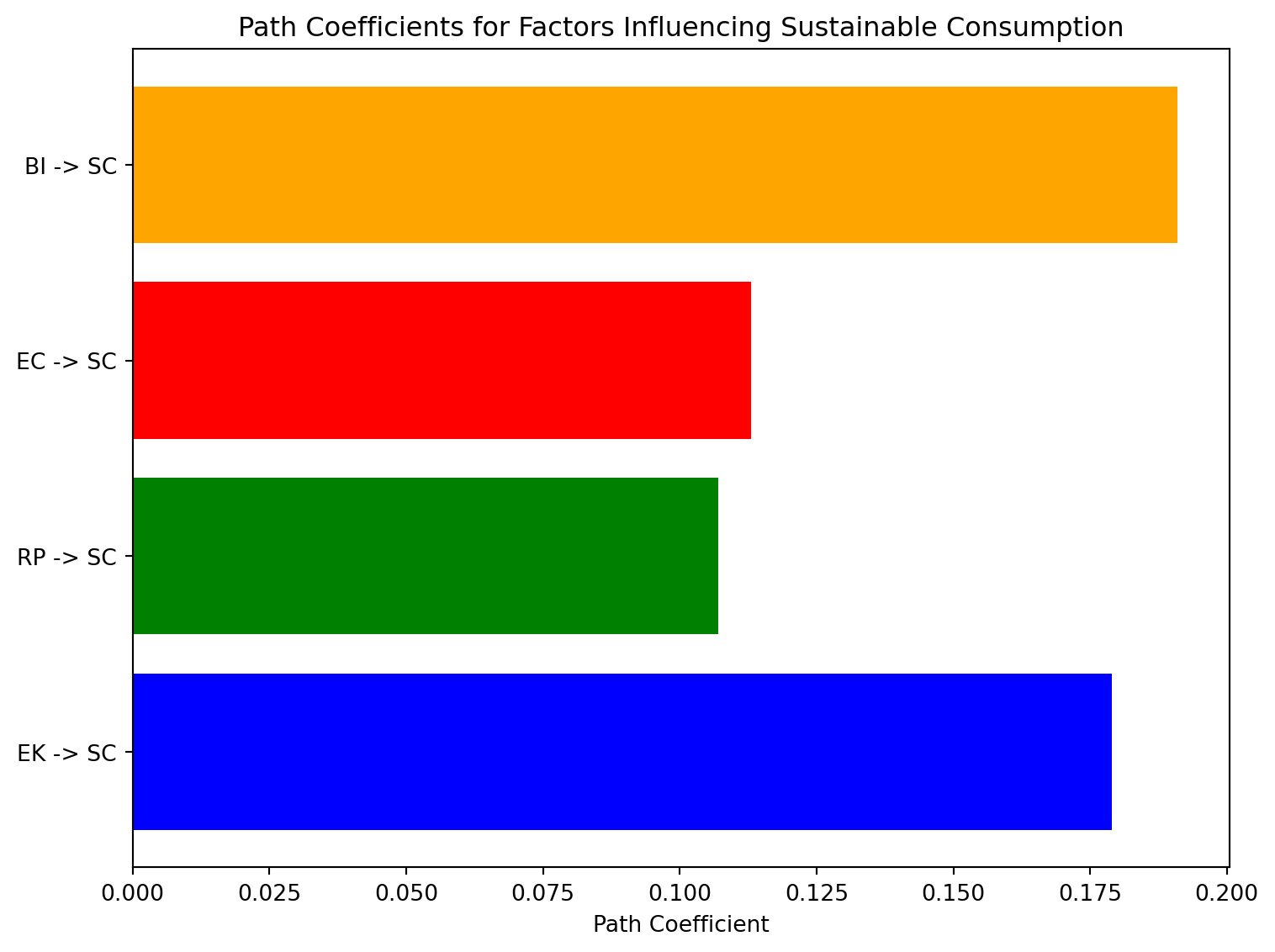
(a) Sustainable Consumption
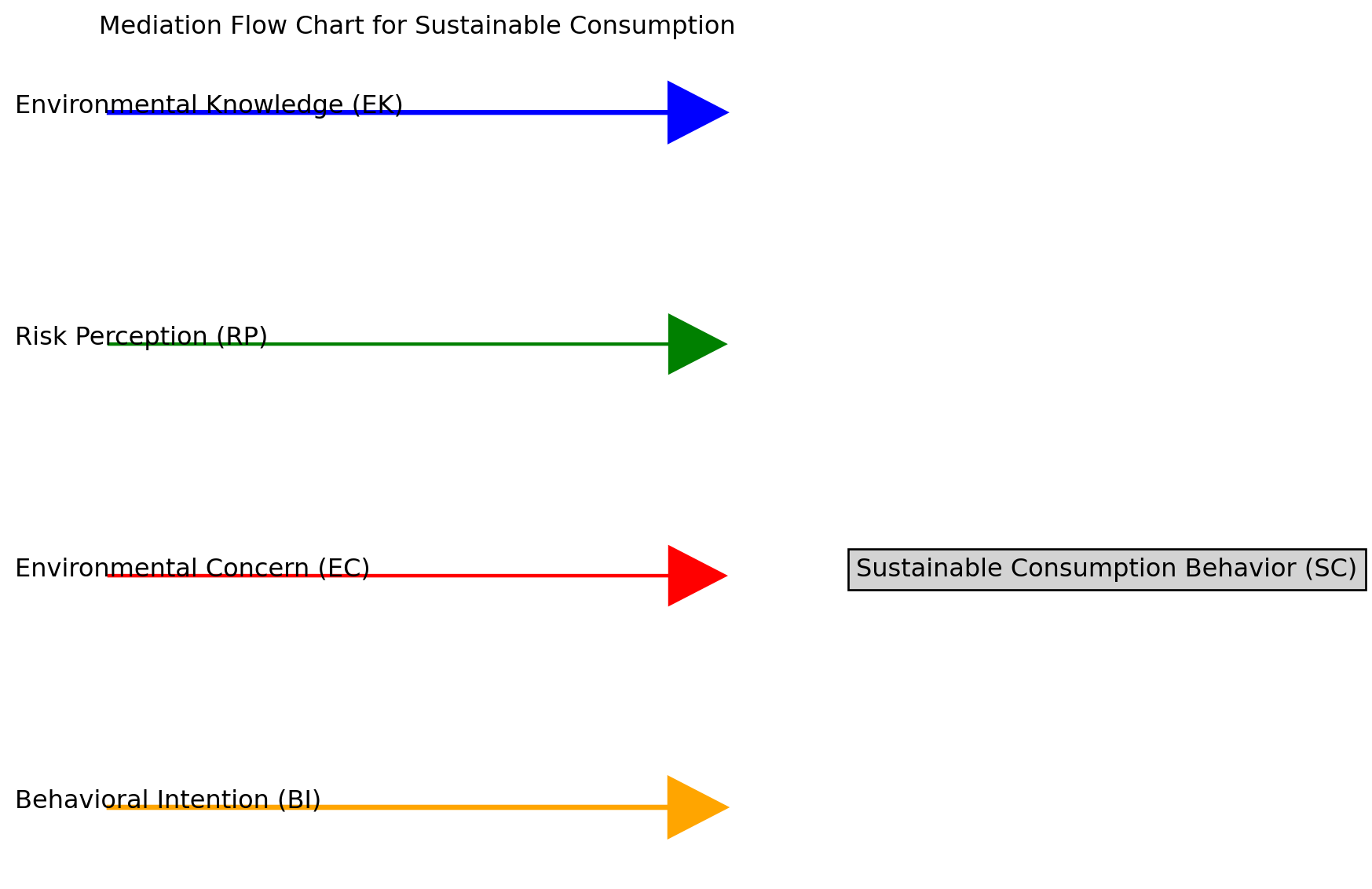
(b)
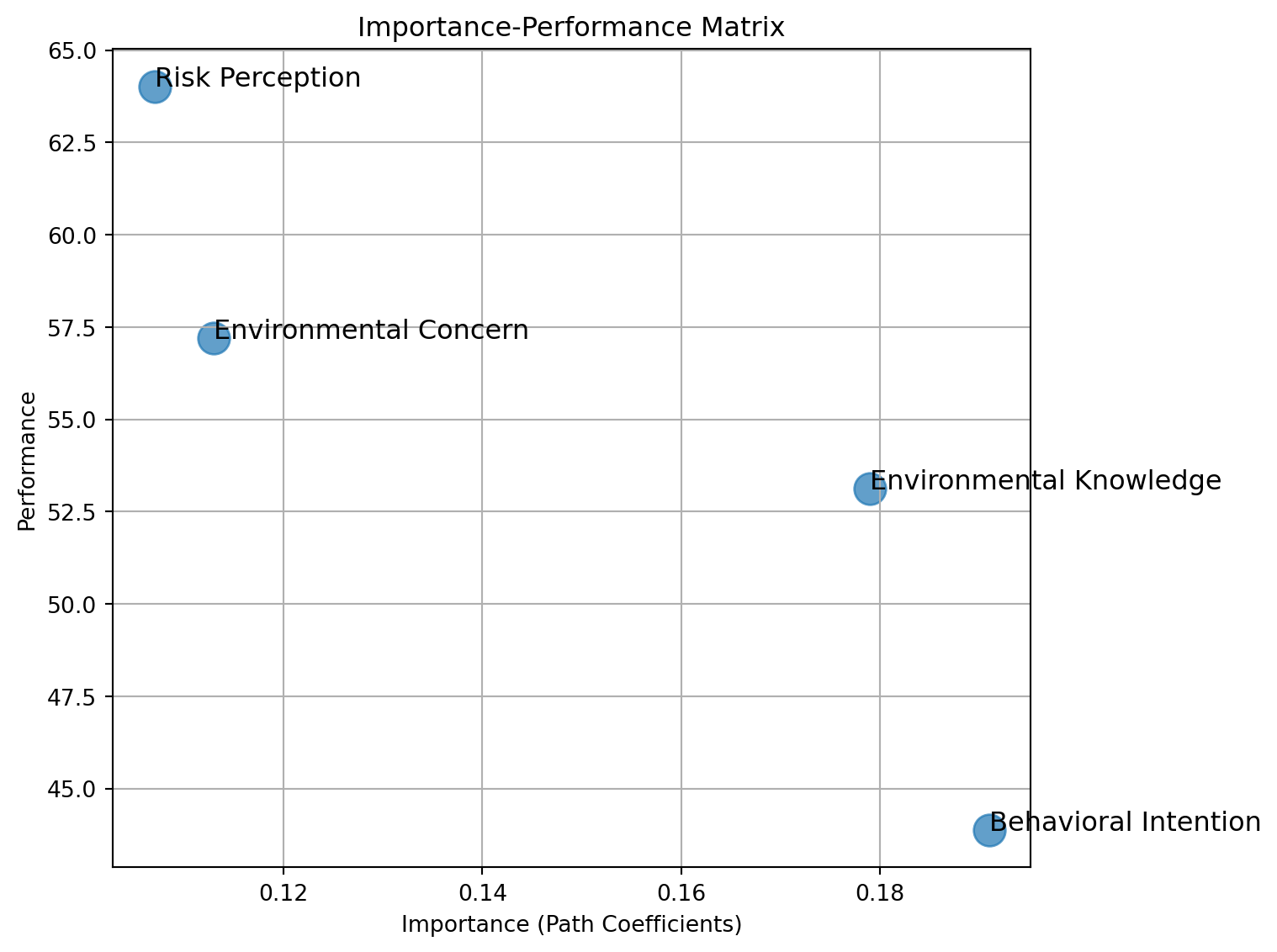
(c)
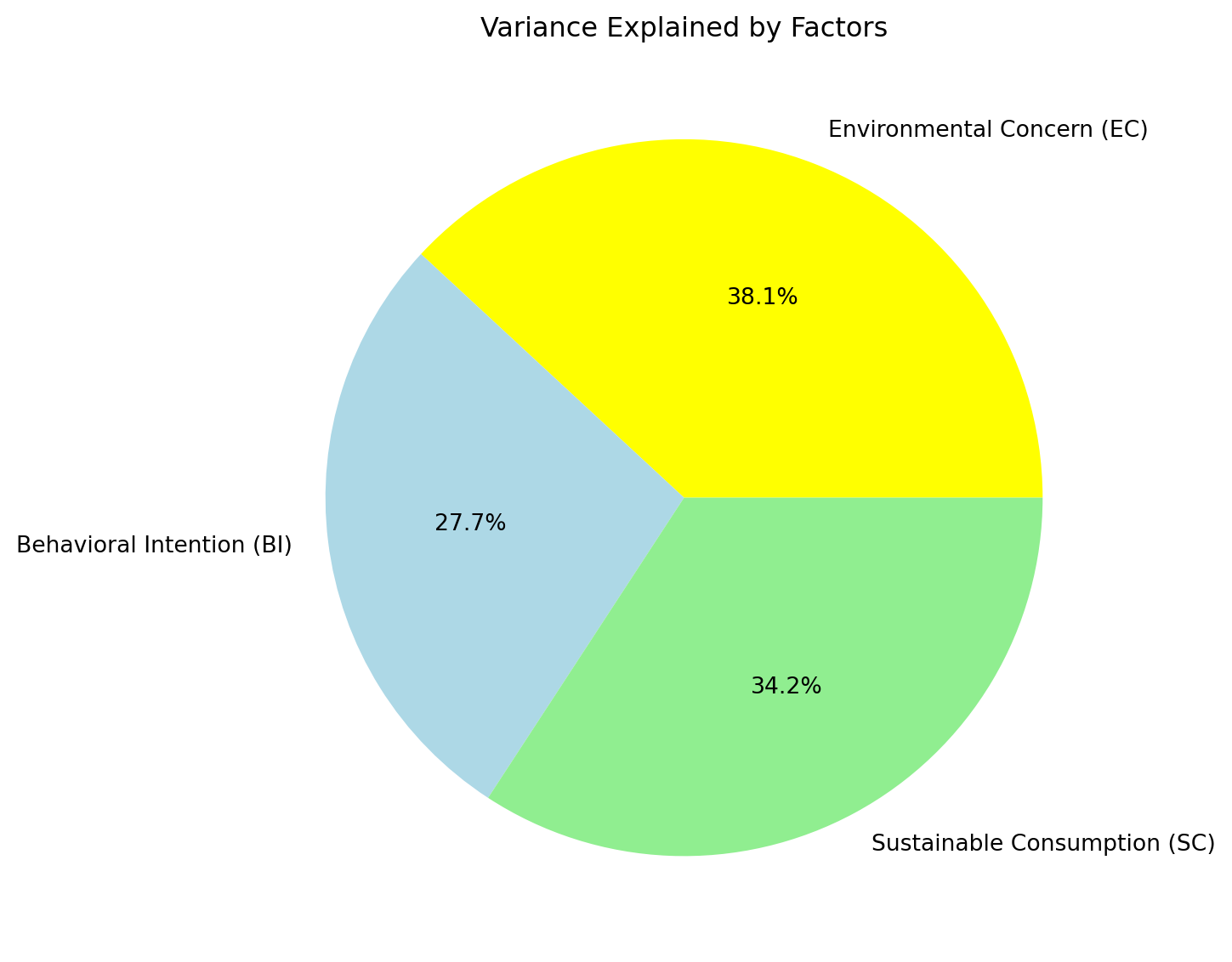
(d)
Figure 16
Make use of indexes to compare companies.
Shopping’s Environmental Footprint: Increasingly Driven by Digital Platforms, Social Commerce, AI Assistants
It may seem impossible to turn the tide of consumerism, given the projected growth in online shopping, Single’s day, etc. (Forrester, 2024). However, importantly - more and more consumers are using AI assistants to find alternative products, make shopping lists, which may have an effect on what type of products are bought (Neuron, 2025; Pandya, 2025; Pastore, 2025)
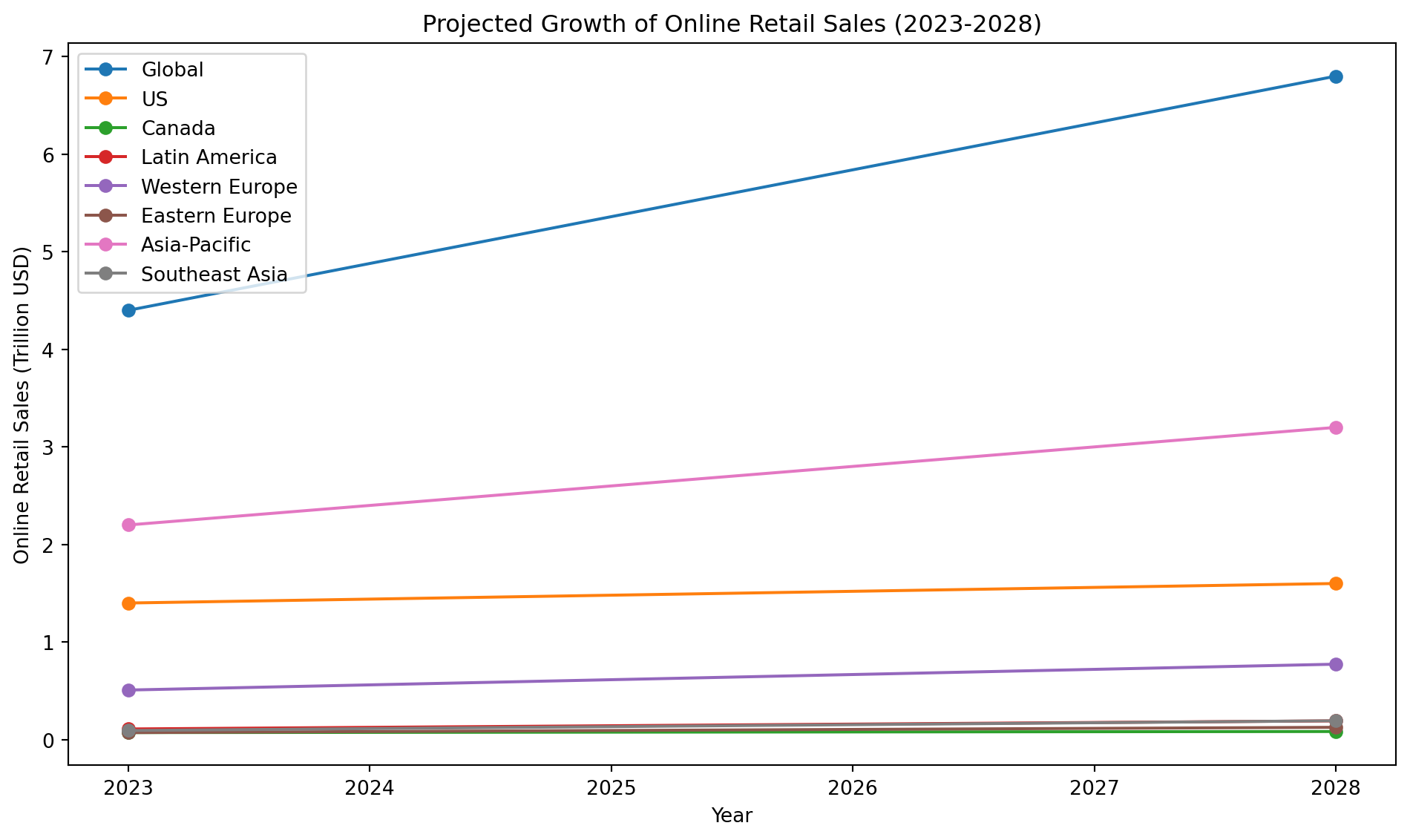
Figure 17: Growth of Consumerism
Double Eleven 11/11 celebrated on November 11 is the world’s largest shopping festival (時代財經, 2023). In June 2023, 526 million people watch e-commerce live-streams in China; online bargaining is a type of ritual (Liu et al., 2024). According to (Igini, 2024) “Asia is set to account for 50% of the world’s total online retail sales”. (The Influencer Factory, 2021) China is the furthest ahead in social shopping, the Chinese and U.S. market may be mature and growth will come from emerging markets (SEA, Latin-America).

Figure 18: Social Commerce
In the US, TikTok is the leader in social commerce (Loyst, 2024).
The Evolution of Payments: The Entry Point for Personal Finance from Mobile Wallets to Buy Now Pay Later (BNPL) Services - Globally, and In Taiwan
Payments is one way consumers can take individual climate action. In the words of a Canadian investment blogger, “every dollar you spend or invest is a vote for the companies and their ethical and sustainability practices” (Fotheringham, 2017). The combination of consumption and investment is an access point to get the consumer thinking about investing. Even if the amount is small, they are a starting point for a thought process.
| Payment App | Features | Users in Taiwan | Origin |
|---|---|---|---|
| LINE Pay | Most popular payment app accepted all over Taiwan. Works stand-alone and inside the LINE messenger. Supports both in-store and online shopping payments, also direct P2P transfers to contacts (requires LINE Bank). Displays a map of its merchant network with discounts and coupons; integrates iPASS MONEY. | > 12 Million | Japan / Korea |
| JKOPay (街口支付) | QR code payments and P2P transfers to contacts; paying for bills. | > 7 Million | Taiwan |
| Taiwan Pay (台灣Pay) | Official Taiwanese Government app in collaboration with Taiwanese banks. Supports payments directly from bank accounts (without the need for a card). Supports QR code payments, P2P transfers to contacts and paying bills. A unique feature is cash withdrawal from ATMs without the need for a bank card. | > 6 Million | Taiwan |
| Apple Pay | Requires an Apple iOS device; uses credit/debit cards via NFC, Secure, In-app & web payments | ? | USA |
| Google Pay | Supports NFC and credit/debit cards, in-app and online payments as well as public transport. | ? | USA |
| iPASS MONEY (一卡通MONEY) | Digital version of the iPASS card which can be used for QR code payments, P2P transfers to contacts, paying bills and public transport. | ? | Taiwan |
| E.Sun Wallet (玉山Wallet) | Requires the Taiwanese E.Sun Bank and allows QR payments, P2P transfers to contacts and paying bills as well as financial management tools. | ? | Taiwan |
| Pi Wallet (Pi 拍錢包) | Payment app by the PChome online shop supporting in-store QR and online payments, and paying for bills a parking. | ? | Taiwan |
| PXPay (全聯福利中心) | Payment app by PX Mart, the largest domestic Taiwanese supermarket chain, supporting QR code payments, offering rewards and discounts and loyalty plans. Recently expanded to Korea quoting the interest of Taiwanese young people in Korean culture. In early 2025, PXPay began offering a saving and investing service called “Digital Hen” in collaboration with J.P Morgan Asset Management. According to the press release, the service aims to be a beginner-friendly financial innovation helping shoppers get into micro-investing. | ? | Taiwan |
| Hami Pay (中華電信) | Payment app by the largest phone company Chunghwa Telecom supporting NFC payments, public transport, and paying bills. | ? | Taiwan |
| Samsung Pay (悠遊卡) | Requires a Samsung device; uses NFC; integrates EasyCard and credit/debit cards; supports public transport. | ? | Korea |
Banks and fintechs both are skilled at capturing user data and digital payments are an important entry point for financial services and a source of consumer action data, shopping data. Payments is the primary way consumers use money. Is there a funnel From Payments to Investing? ESG Shopping is about Changing our relationship with money. Make commerce more transparent. Current shopping is quite superficial. One barely knows the name of the company. You don’t know much about their background. Building consumer feeling of ownership, create meaningful connections between producers and consumers.
Digitalization of payments creates lots of Point of Sale (PoS) data that’s valuable to understand what people buy. Banks have access to each person’s financial habits which makes it possible to model sustainable behavior using big data analysis. Asian markets have shown the fastest growth in the use of digital payments (McKinsey, 2020). In Macao, contactless payments are becoming the most prevalent form of value exchange, growing rapidly, up 40% from the prior year (Contactless Payments Prevalent in Macau - City’s de Facto Central Bank, 2023). In Europe, fintech is also one of the fastest-growing sectors, with 35% of the fintech ecosystem is made up by giants like Klarna, Checkout.com and Revolut and 65% belonging to newcomers; in general describe equally strong consumer uptake and friendly regulators (The European Fintechs to Watch in 2022, 2022). With the increasing number of financial services available, open banking initiatives, which set standards for financial data sharing, have the potential to improve the user experience by allowing people to access their data across all the different banking apps they use, seamlessly and securely, which improves the flow of the entire customer journey.
(Green Finance Platform, 2020) report predicts the rise of personalizing sustainable finance, because of its potential to grow customer loyalty, through improving the user experience. Similarly to good design, interacting with sustainable finance for the ‘green-minded’ demographics, providing a reliable green product is a way to build customer loyalty. The UN has been handing out Global Climate Action Awards since 2011 for idea such as the Climate Credit Card in Switzerland, which automatically tracks emissions of purchases, creates emissions’ reports for the user which can then be offset with investments in climate projects around the world (UNFCCC, 2023).
Sustainability data is an important part of the customer journey which digitalization and digital transformation make increasingly accessible. Digital receipts are one data source for tracking one’s carbon footprint. In Taiwan, O Bank makes use of Mastercard’s data to calculate each transaction’s CO2 emissions and offer Taiwanese clients “Consumer Spending Carbon Calculator” and “Low-Carbon Lifestyle Debit Card” products (Taiwan’s O-Bank Launches ’Consumer Spending Carbon Calculator,’ Rewards Carbon Reduction, 2022). This is based on technology by Mastercard, which has developed a white-label service for sustainability reports that banks can in turn offer to their clients (Mastercard, 2021). Similarly, Commons, formerly known as Joro, an independent app, analyses one’s personal financial data to estimate their CO2 footprint (Chant, 2022). ReceiptHero’s digital-receipt platform records the CO2eq footprint for each purchase, turning every transaction into a data point for tracking individual emissions, promoting eco-awareness (Digital Receipts and Customer Loyalty in One Platform ReceiptHero, n.d.). Another example is the Dutch fintech company Bunq offers payment cards for sustainability, provided by MasterCard, which connects everyday payments to green projects, such as planting trees and donations to charities within the same user interface (Bunq, 2020). However, arguably this could be considered greenwashing as Bunq only plants 1 tree per every €1,000 spend with a Bunq card. The example marketed at students cites 8 trees planted this month while students scarcely would have €8,000 to spend every month.
Sharing a similar goal to Alibaba’s Ant Forest, Bunq’s approach creates a new interaction dynamic in a familiar context (card payments), enabling customers to effortlessly contribute to sustainability. However, it lacks the level of gamification which makes Alibaba’s offering so addictive, while also not differentiating between the types of purchases the consumer makes, in terms of the level of eco-friendliness.
In Nigeria, (Emele Onu & Anthony Osae-Brown, 2022) reports how in order to promote the eNaira digital currency use, the Nigerian government limited the amount of cash that can be withdrawn from ATMs “In Nigeria’s largely informal economy, cash outside banks represents 85% of currency in circulation and almost 40 million adults are without a bank account.” [E-Naira find papers]
In Kenya, M-Pesa started since 2007 for mobile payments, used by more than 80% of farmers (Parlasca et al., 2022; Tyce, 2020). Using digital payments instead of cash enables a new class of experiences, in terms of personalization, and potentially, for sustainability. Buy Now Pay Later (BNPL) is the biggest consumer payments / financing success story innovated by Klarna in Sweden in 2005 and Afterpay in Australia in 2015 but with roots in Layaway Programs created during the 1930’s US Great Depression (Kenton, 2023). By 2021, 44.1% of Gen-Z in the US had used BNPL according to (EMarketer, 2021). Users in the Gen-Z demographic mostly use BNPL to buy clothes (LHV, 2024).
People will be more likely to save and invest if it’s easy. In Sweden, point of sales (PoS) lending (BNPL, as introduced above) is a common practice, and one of the reasons for the success of Klarna, the Swedish banking startup, which has managed to lend money to more consumers than ever, through this improved user experience. Taking out loans for consumption is a questionable personal financial strategy at best. Yet, if people can loan money at the point of sales, why couldn’t there be 180 degrees opposite service - point of sales investing? And there is, called “round-up apps”. (Next Generation Customer Experience, n.d.) suggests “Targeted at millennials, Acorns is the investing app that rounds up purchases to the nearest dollar and invests the difference.” - and example of From Shopping to Investing. Likewise, many banks have started offering a service to automatically save and invest tiny amounts of money collected from shopping expenses. Every purchase one makes contributes a small percentage - usually rounded up to the nearest whole number - to one’s investment accounts. For example, (Swedbank, 2022), the leading bank in the Estonian market, offers a savings service where everyday payments made with one’s debit card are rounded up to the next Euro, and this amount is transferred to a separate savings account. Similarly, the Estonian bank (LHV, 2020) offers micro-investing and micro-savings services, with an interesting user experience innovation showing how for an average Estonian means additional savings of about 400€ per year. User experience innovation can improve accessibility and financial inclusion, while opening up a new market which used to be underserved. For example, (Y Combinator, 2023) launched a bank inside of Whatsapp for the underbanked gig workers in Latin America.
While the financial industry is highly digitized, plenty of banks are still paper-oriented, running digital and offline processes simultaneously, making them slower and less competitive, than startups. Indeed, the new baseline for customer-facing finance is set by fintech, taking cues from the successful mobile apps in a variety of sectors, foregoing physical offices, and focusing on offering the best possible online experience for a specific financial service, such as payments.
Traditional banks and fintechs are becoming more similar than ever. 39% of Millennials are willing to leave their bank for a better fintech (n = 4282); innovation in payments helps retention (PYMNTS, 2023). The European Central Bank describes fintech as improving the user experience across the board, making interactions more convenient, user-friendly, cheaper, and faster. “Fintech has had a more pronounced impact in the payments market […] where the incumbents have accumulated the most glaring shortcomings, often resulting in inefficient and overpriced products,” Yves Mersch, Member of the Executive Board of the ECB says in (European Central Bank, 2019).
There are also people who are concerned with digital payments. There are concerns digital currencies also help to “democratize financial surveillance”. China was a money innovator introducing paper money in the Tang Dynasty (618-907 AD) (First Paper Money, n.d.). Jeff Benson (2022) is troubled by the “use the e-CNY network to increase financial surveillance” (Central Bank Digital Currency (CBDC) Tracker, 2023) believes digital currencies make tracking easier. Economist Eswar Prasad argues that the era of “private” cryptocurrencies is coming to an end down as they’ll be supplanted by government-backed central bank-issued digital currencies that marry blockchain’s efficiency with legal oversight (MARISA ADÁN GIL, 2022). The same author compares WeChat, Alipay vs the digital yuan (Yahoo Finance, 2022).
There are many neobanks, or challenger banks, far too many to list. The table only includes a small sample of banks and the landscape is even larger if one includes the wider array of fintechs. Neo-banks often use sustainability marketing. Legendary investor Warren Buffett’s company Berkshire Hathaway invested $1 Billion USD in Nubank, Brazilian digital challenger Bank, while reducing its stakes in Mastercard and Visa, signaling growing faith in digital banking platforms over traditional card-issuers (Andrés Engler, 2022).
The following popular (totaling millions of users) robo-advisory apps combine sustainability, personalization, ethics, and investing however, they are mostly only available on the U.S. market.
| Service | Features | Availability |
| Goodments | Matching investment vehicles to user’s environmental, social, ethical values | USA |
| Wealthsimple | AI-assisted saving & investing for Millennials | USA, UK |
| Ellevest | AI-assisted robo-advisory focused on female investors and women-led business | USA |
| Betterment | AI-assisted cash management, savings, retirement, and investing | USA |
| Earthfolio | AI-assisted socially responsible investing | USA |
| Acorns | AI-assisted micro-investing | USA |
| Trine | Loans to eco-projects | USA |
| Single.Earth | Nature-back cryptocurrency | Global |
| Grünfin | Invest in funds | EU |
| M1 Finance | Finance Super App | US |
| Finimize | Investment research for anyone | US |
| NerdWallet | Financial clarity all in one place | US |
| Tomorrow Bank | Green Banking | EU |
| Marcus Invest | Robo-Advisor | US |
| Chipper | Digital cash app for African markets | Africa |
| Lightyear | Simple UI for Stocks, ETFs, interest from Estonia | EU |
| Ziglu | UK simple investing app | UK |
| Selma | Finnish investing app | EU |
| Monzo | Bank | UK |
| Nubank | Bank | Brazil |
| EToro | Investing and copy-investing | EU |
| Revolut | From payments to investing | UK, EU |
| Mos | Banking for students | US |
| Robinhood | Investing | US |
| Mintos | Buy bonds and loans | EU |
Becoming a major payments player requires navigating the maze of global directives, including legislation regarding finance, privacy, data protection, money laundering, localized licensing regimes, and more. For an example, Google Wallet’s privacy notice sheds some light on how a unified payments profile links services under one’s Google account while following its broader data‑use policies (Google, 2025).
Alipay is by far the largest payments super-app and provides two investment services within it’s payments platform, first launching Yu’e Bao (餘額寶) in 2013, which automatically invests small amounts on the users’ accounts for returns typically above those of traditional banks’ saving accounts, and later in 2015 Ant Fortune (螞蟻財富), offering access to thousands of investment products from partner companies (KraneShares, 2020). Alibaba owns over 30% of Alipay and both companies are pushing for increased use of AI within their services (“Chinese Billionaire Jack Ma Sees AI Future for Ant Group, in Rare Appearance,” 2024).
Similarly, both Line, through it’s Line Pay, Line Securities, and Line Bank, and Naver, though Naver Pay, have been on a path for several years evolving into comprehensive financial platforms (Anna J. Park, 2023; LINE Corporation, 2019). None of these payment apps have a specific focus on sustainability while Alipay does have a separate sustainability-focused service called Ant Forest for planting trees. Payment apps created by Apple and Google are less-feature rich focusing on payments only, and are being challenged by newcomers. An Australian fintech Douugh released it’s robo-advisor in 2024 (Paul, 2024). Douugh’s tagline explain the ethos of a unified financial app simply: “One app to spend and grow your money”. The newest generation of robo-advisors are integrating large-language modules, for example Reuters highlights the Chinese brokerage firm Tiger Brokers as one among 20 Chinese companies integrating DeepSeek deeply into asset management from simple chat functionality all the way to executing trades.
Established Consumer Payment Giants
| Service | Features | Users | Investing | Savings | Shopping (Payments) |
|---|---|---|---|---|---|
| Alipay | Payments, banking, Yu’e Bao, Ant Fortune investing | 1.3 billion | Yes | Yes | Yes |
| WeChat Pay | Payments, financial services, Licaitong investing | 900 million | Yes | No | Yes |
| Apple Pay | Contactless payments | 744 million | No | No | Yes |
| PhonePe | Payments, mutual funds, digital gold | 590 million | Yes | Yes | Yes |
| Paytm | Payments, banking, Paytm Money for stock & fund investing | 350 million | Yes | Yes | Yes |
| Google Pay | Payments, loyalty, transit | 150 million | No | No | Yes |
| Samsung Pay | Mobile payments | ? | No | No | Yes |
| Zelle | Bank-to-bank P2P payments | ? | No | Yes | Yes |
| Nubank | Full features of a traditional bank in a digital form | ? | No | Yes | Yes |
Growth Companies
For human psychology, the fact that money on a Wise account will accrue value while on Monese it’s just static, immediately makes Wise more attractive, even if the amounts are small.
| Service | Features | Availability | User Base | Investing | Savings | Shopping (Payments) |
|---|---|---|---|---|---|---|
| Venmo | P2P payments, crypto investing | USA | 70 million | Yes | No | Yes |
| Cash App | P2P payments, stock & Bitcoin investing | USA, UK | 57 million | Yes | No | Yes |
| Chime | Online banking services including spending accounts, savings accounts | USA | 22 million | No | Yes | Yes |
| MoneyLion | Banking, investing, credit-building loans, financial tracking tools | USA | 20 million | Yes | Yes | Yes |
| NerdWallet | Financial clarity all in one place | USA | 19 million | No | No | Yes |
| SoFi | Loans, banking, robo-investing, stock & crypto | USA | 10 million | Yes | Yes | Yes |
| Albert | Budgeting, saving, spending, investing, access to financial advisors | USA | 10 million | Yes | Yes | No |
| Acorns | AI-assisted micro-investing | USA | 5.7 million | Yes | No | No |
| Wealthsimple | AI-assisted saving & investing for Millennials | Canada, USA, UK | 2.6 million | Yes | Yes | No |
| Qapital | Saving and investing with gamification features | USA | 2 million | Yes | Yes | No |
| M1 Finance | Finance Super App | USA | 1 million | Yes | No | No |
| Finimize | Investment research for anyone | Global | 1 million | Yes | No | No |
| Robinhood | Investing | US | ? | Yes | No | No |
| Betterment | AI-assisted cash management, savings, retirement, and investing | USA | ? | Yes | Yes | No |
| Revolut | From payments to investing | UK, EU | ? | Yes | No | TRUE |
| Monzo | Bank | UK | ? | No | Yes | No |
| eToro | Investing and copy-investing | EU | ? | Yes | No | No |
| Marcus Invest | Robo-Advisor | USA | ? | Yes | No | No |
| Varo Bank | Online banking services including checking and high-yield savings | USA | ? | No | Yes | Yes |
| Stash | Micro-investing platform enabling small investments | USA | ? | Yes | No | No |
| Mint (Ceased operations) | Budgeting tools, bill tracking, free credit score monitoring | USA | ? | No | No | No |
Up-and-Coming Startups
| Service | Features | Availability | User Base | Investing | Savings | Shopping (Payments) | Sustainability Focus |
|---|---|---|---|---|---|---|---|
| Chipper Cash | Digital cash app for African markets | Ghana, Nigeria, Uganda, USA | ? | No | No | Yes | No |
| Douugh (Merged with Goodments) | AI financial wellness app, smart account, saving tools | USA, Australia | ? | Yes | Yes | Yes | No |
| DUB | Copy-trading, mirror trades of notable figures | USA | 1 million downloads | Yes | No | No | No |
| Earthfolio | AI-assisted socially responsible investing | USA | ? | Yes | No | No | Yes |
| Ellevest | AI-assisted robo-advisory focused on female investors and women-led business | USA | ? | Yes | No | No | No |
| Goodments (Merged with Douugh) | Matching investment vehicles to user’s environmental, social, ethical values | USA | ? | Yes | No | No | Yes |
| Grünfin (Ceased operations) | Invest in funds | EU | ? | Yes | Yes | No | No |
| Lightyear | Simple UI for Stocks, ETFs, interest from Estonia | EU | ? | Yes | No | No | No |
| Mintos | Buy bonds and loans | EU | ? | Yes | No | No | No |
| Mos | Banking for students | US | ? | No | Yes | Yes | No |
| Selma | Finnish investing app | EU | ? | Yes | No | No | No |
| Single.Earth | Nature-backed cryptocurrency | Global | ? | Yes | No | No | Yes |
| Tomorrow Bank | Green Banking | EU | 120,000 | No | Yes | Yes | Yes |
| Trine | Loans to eco-projects | USA | ? | Yes | No | No | Yes |
| Ziglu | UK simple investing app | UK | ? | Yes | No | No | No |
Considering AI assistant for ESG investing, (G. K. S. Tan, 2020) proposes “financial ecologies” to understand the dynamic relationships between various actors: investors, advisors, government, where the government plays an active role in growing financial inclusion and responsible financial management; however, the paper further suggests that current robo-advisors (available in Singapore) make the investor captive to the agency of AI, making the person lose agency over their financial decisions.
The Psychology Saving: Anthropomorphism and Loyalty Schemes
There are at least two ways to look at sustainable savings, however related. In general, people will save nature if it also saves money. This section looks at savings in the financial sense of the word. Savings in the sense of CO2e emission and environmental cost reductions have an entire separate chapter dedicated to them titled ‘sustainability’ however a short definition might be valuable here as well.
Environmental Savings means “the credit incurred by a community that invests in environmental protection now instead of paying more for corrective action in the future” (see Yale Center for Environmental Law & Policy, 2018) and (Yale, Princeton, Stanford, MIT and Vanderbilt Students Take Legal Action to Try to Force Fossil Fuel Divestment - The Washington Post, n.d., p. 33).
Savings in CO2e equivalent emissions: CO2e savings are the amount of CO2e reduction one manages to achieve by changing one’s behavior and influencing others (people, companies). While the individual footprint is so small, the largest reduction will come from influencing large groups of people, either by leadership, role-model, or other means.
In theory, ethical savings accounts only finance businesses aligned with the customers’ values: screening out problematic and potentially harmful industries such as fossil fuels, tobacco, weapons, etc.; in practice, one should carefully evaluate a bank’s investment principles, environmental policies and governance practices (Ethical Savings, 2023).
Pension funds are some of the largest asset holders and choosing where to invest one’s pension can be a sustainable financial action. College students might not have a pension fund yet, however their financial savvy will influence their choices in the future. Savings and investing are somewhat conflated because the large majority of savings that people have are invested by their banks. Thus, the question of sustainable savings comes one of where exactly are they invested and what is the impact of that investment of sustainability. Savings are the money one has in a pension fund or managed by themselves. For the majority of people, savings are invested by the bank and make up the largest proportion on investments for the people who are not active investors themselves. However, there are cases where people manage their pensions themselves; for example due to a law change Estonian could take out their entire accumulated pension and invest or spend them however they wanted (Raido Tõnisson, 2022b). While many Estonians used the money for consumption, some people invested their retirement funds in crypto(Marten Põllumees, 2022).
Saving precedes investing. From building loyalty to building ownership, the first step towards investing is to start saving money. How to encourage savings in daily life and make it a part of the everyday payments experience? Even starting with a small step, gathering a small target amount per month for savings, has the potential to shift the user’s way of thinking about money. The second step, choosing where to invest these savings, will help us begin thinking like an investor. To start noticing trends and looking into how finance shapes the world. One experimental study showed people think about putting money in a “safe” place and money anthropomorphism increased saving behavior by 18% (L. Wang et al., 2023). Mobile money users are better at saving (Naito et al., 2021). Nerdwallet’s (Tommy Tindall, 2023) suggests making financial commitments instead of resolutions, in order to successfully save money.
Help consumers save money and business increase repeat business. Building customer loyalty is a key part of repeat business and financial predictability for any company. Large consumer brands like Starbucks have for long ran successful rewards programs that encourage customers to come back (Steinhoff & Zondag, 2021). Could loyalty schemes create a pathway to investing in the company to strengthen the feeling of connection with the business even further? After all, I’m now a minority owner! Yet in practice, many consumers lack the financial literacy for investing and there are many legislative difficulties for turning loyalty points into investments. It’s easier instead to create a separate cryptocurrency or token program which users could collect and redeem for some benefit.
| Company | Scheme |
|---|---|
| Patagonia | “Worn Wear” program |
| H&M | Garment Collecting program |
| The Body Shop | Return, Recycle, Repeat |
Loyalty schemes can take a physical form. In Malaysia, Beebag shopping bags made of recycled plastic bottles with a NFC ship that works in conjunction with an app to provide rebates for customers (The Green Factor, 2022).
Sustainable Investing: Measuring the Eco-Investment Gap
By the latest estimates sustainability lacks several trillions of USD in investment. Even with massive financing already in the pipeline, the estimate for the global financing gap for low-carbon energy production was 5.2 trillion USD as of 2016 (Earth Day, 2023; Mapping the Gap, 2016). Ray Dalio puts the needed climate investment at $5T and believes these financial goals won’t be met (Ray Dalio, 2023). A newer United Nations Environmental Programme (UNEP) calculation lowered the world needs an additional 4.1 Trillion USD of financing in nature-based solutions by 2050 to meet climate change, biodiversity, and land degradation reduction targets (UNEP, 2022). According to (The Rockefeller Foundation, 2022) a slightly lower 2.5-3.2 Trillion USD would be sufficient.

Figure 19: Climate Finance Funding Gap
What if 10% of annual consumer spending – ten percent is about $2,8T - went towards protecting our climate. The theme for the 2023 Earth Day was “Invest In Our Planet”.
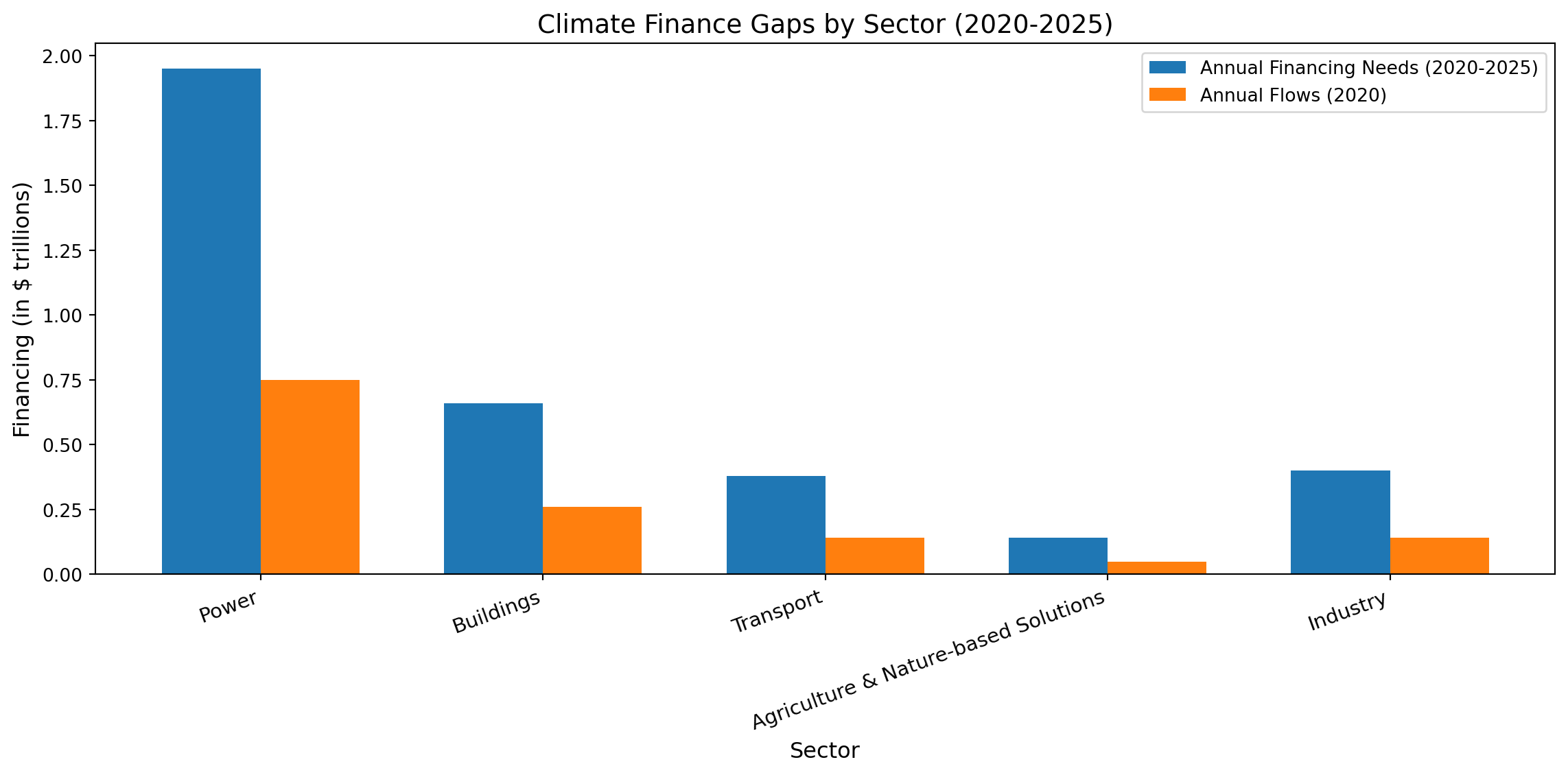
Figure 20: Climate Finance By Sector
The needed investment doesn’t seem so large, around 5% of the global GDP, if one compares it to the per year Global Gross Domestic Product (GDP) estimated at around 100 Trillion USD in 2022 and growing to 105 Trillion USD in 2023 (Aaron O’Neill, 2023; IMF, 2023). In essence, the estimated total investment gap in climate fits into the economic growth of 1–2 years of the global economy. (OECD, 2024) projects steady economic growth 3.1% in 2024 and 3.2% in 2025 while the (World Bank & World Bank, 2024) is more conservative projecting 2.6% and 2.7% respectively.
The lack of funding in green energy especially affects emerging economies (Mobilizing Capital Into Emerging Markets and Developing Economies, 2022). “We can and must channel private capital into nature-based solutions. This will require policy and regulatory support, catalytic capital and financial innovation” argued the CEO Green Finance Institute, Dr Rhian-Mari Thomas, ahead of COP27 in Egypt (Green Finance Institute, 2023). It’s not happening fast enough.
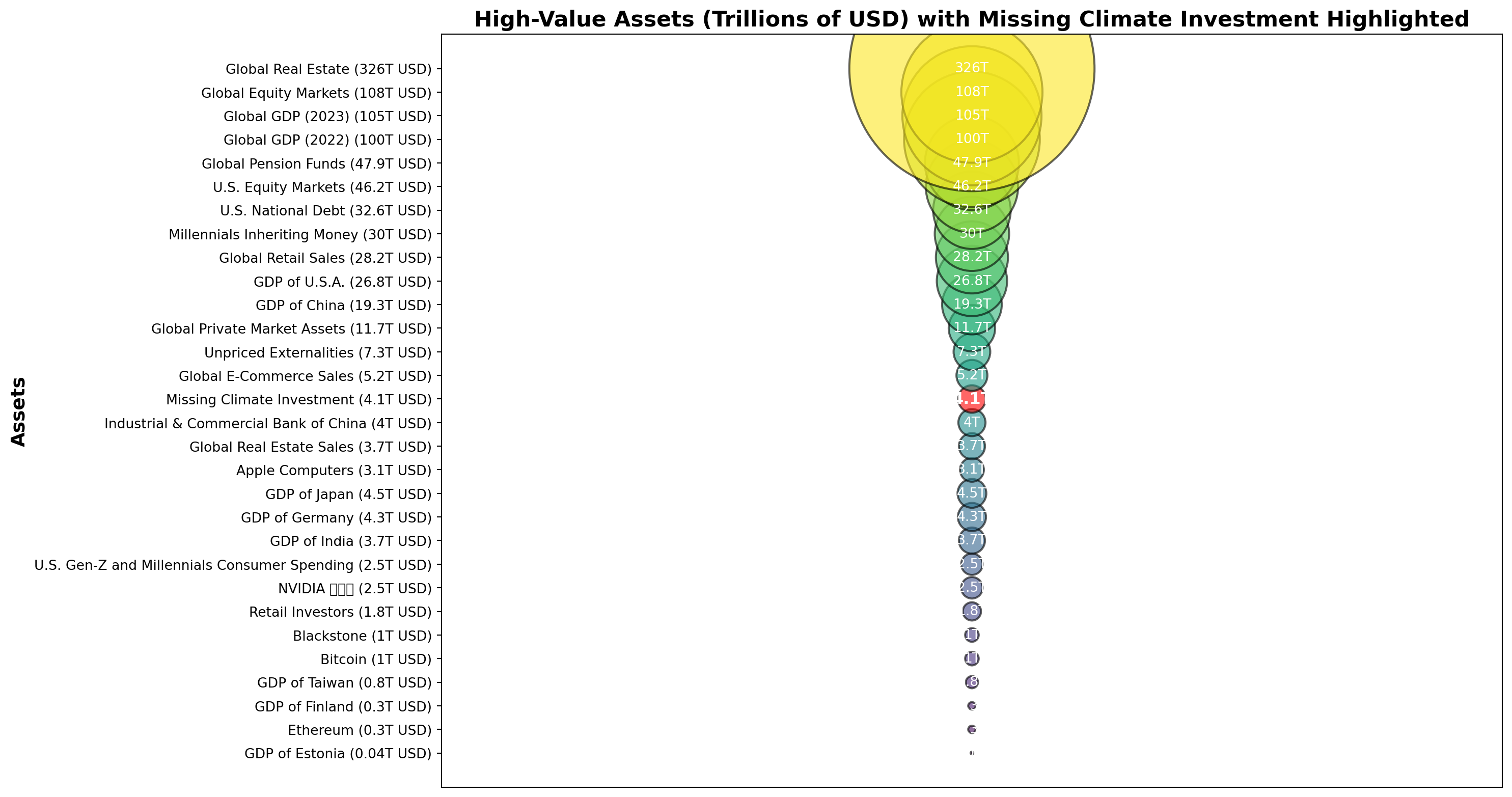
Figure 21: Climate Funding Gap vs High Value Assets
| High-Value Assets (Trillions of USD) | |
|---|---|
| Global Real Estate (2020, valuation) | $326T |
| Global Equity Markets (2023, valuation) | $108T |
| Global GDP (2024, estimated) | $110T |
| Global GDP (2023, per year) | $105T |
| Global GDP (2022, per year) | $100T |
| Global Pension Funds (2023, valuation) | $47.9T |
| U.S. Equity Markets (2023, valuation) | $46.2T |
| U.S. National Debt (2023, valuation) | $32.6T |
| Millennials Inheriting Money from Parents in the U.S., U.K. and Australia (2022-2032) | $30T |
| Global Retail Sales of Goods and Services to Consumers (2023, per year) | $28.2T |
| GDP of U.S.A. (2023, per year) | $26.8T |
| GDP of China (2023, per year) | $19.3T |
| Global Private Market Assets (2023, per year) | $11.7T |
| Unpriced Externalities (2023, per year) | $7.3T |
| Global E-Commerce Sales (2021, per year) | $5.2T |
| Missing Climate Investment (2022, estimate per year) | $4.1T |
| Industrial & Commercial Bank of China (2019, total assets) | $4T |
| Global Real Estate Sales (2021, per year) | $3.7T |
| Apple Computers (2024, market value) | $3.1T |
| GDP of Japan (2023, per year) | $4.5T |
| GDP of Germany (2023, per year) | $4.3T |
| GDP of India (2023, per year) | $3.7T |
| U.S. Gen-Z and Millennials Consumer Spending (2022, per year) | $2.5T |
| NVIDIA 英偉達 (2024, market value) | $2.5T |
| Retail Investors (2023, liquid assets) | $1.8T |
| Blackstone (2023, total assets) | $1T |
| Bitcoin (2024, market cap) | $1T |
| GDP of Taiwan (2023, per year) | $0.8T |
| GDP of Finland (2023) | $0.3T |
| Ethereum (2024, market cap) | $0.3T |
| Individual Climate Investors (2020, per year) | $0.1T |
| GDP of Estonia (2023, per year) | $0.04T |
While these assets and GDP values reflect different aspects of the global economy, the comparison illustrates that redirecting a relatively small fraction of global wealth and economic activity towards sustainable investments can close the investment gap. This perspective should inspire confidence that the goal is achievable with coordinated effort and policy support. Indeed, it would be easier for large institutional investors to move their money to sustainable assets than for retail investors to move their relatively small investments.
Retail Investing Enables Financial Inclusion and Growing Money Sustainably
Retail investing can be seen as a form of financial inclusion. Ant Group’s CEO Eric Jing remarked in (Turrin, 2021): “The financial system of the past 200 years was designed for the industrial era and served only 20% of the population and organizations. As we enter the digital age, we must better serve the remaining 80%”.
Many ecologically-focused funds with different approaches have been launched in recent years, with variations in asset mix and style of management; thematic asset management is expected to grow, with investors packaging opportunities based on consumer trends (van Doorn, 2020). Among retail investors, there’s some appetite for sustainability however investors are not sure how to separate sustainable assets from less sustainable ones (Ho, 2019). While literature has been debating if it’s possible to “do well while doing good”, latest research suggests it’s possible to make investments that both make an attractive financial return and adhere to sustainability goals (Y.-M. Tan et al., 2023). “Sustainable investing is now part of mainstream financial strategy” (Morgan Stanley, 2019).
(T. Smith, 2019) suggests 74% of Chinese youth are looking for “positive impact” and (Lingeswaran, 2019) philanthropy is on the rise in Asia in general. (M. Li et al., 2022) believes retail investors are important for innovation: “investor attention can significantly improve enterprises’ green innovation level”.
Sweden is a country with highly developed financial markets and active social campaigns demanding sustainability as well as the home for several green fintech companies, including Doconomy and Trine (Meet the Fintechs Leading Sweden’s Green Revolution, 2021). (Lagerkvist et al., 2020) undertook a choice experiment “Preferences for sustainable and responsible equity funds” with 559 Swedish private investors In Sweden, and found that sustainability strategies and an environmental focus carry more weight than fees, past performance or fund size.
(BlackRock, 2022) notes some ESG-oriented hedge funds can be “highly engaged with management teams” in order to influence management towards ESG practices in said companies. Barclays’ 2021 investor survey found hedge‑fund LPs (limited partners) adding screening for ESG data and willingness to start new “green alpha” funds if performance can be proven by robust data (ESG Hedge Funds Barclays Corporate & Investment Bank, 2021). High quality data is the key to unlocking this potential. ESG Analytics founder Qayyum Rajan introduces a sentiment‑driven, alternative‑data platform that maps real‑time ESG events to SASB topics for deeper, faster screening (Qayyum Rajan, 2021). In addition to finance being increasingly data-driven, it’s also increasingly personalized, for example Vise showcases its AI‑powered portfolio‑builder that lets RIAs customise, manage and explain client portfolios at scale, pitching itself as the “Copilot for wealth managers”, allowing creation of highly personalized portfolios (Vise, 2023). RavenPack provides an analysis tool tracking media and sentiment to gauge capital flows driven by ESG (RavenPack, 2021).
Companies themselves need to better understand their emissions, giving birth to the industry of climate accounting. The myclimate NGO is among the many providers or detailed calculate climate cost calculators, consulting and verified carbon‑offset projects aimed at helping firms net‑zero targets (Myclimate – Your Partner for Climate Protection, 2023).
Institutional finance is highly linked and constantly learning from each-other. For example, The Network for Greening the Financial System (NGFS) is a coalition of over 140 central banks that publishes scenarios, best‑practice guides and policy papers on climate‑related financial risk (NGFS, 2023). In Thailand, the Thai Fintech Association site lists its ecosystem map, events and membership tiers aimed at fostering fintech innovation and regulatory dialogue in Thailand (Thai Fintech Association (TFA), n.d.). Online news platforms such as (Green Central Banking, n.d.) aggregate research and daily news on how central banks integrate climate risk—scorecards, policy trackers and expert commentary.
Investable Asset Classes for Retail Investors: Increasing Exposure to Stocks, Bonds, Commodities, Real-Estate, Digital Tokens and Alternatives, Lending, Futures, Hedge Funds, Private Equity, and even Venture Capital
There are many asset classes with varying degree of access to a retail investors. The main categories of investment products are, based on the U.S. Securities and Exchange Commission categorization (U.S. Securities and Exchange Commission, 2025).
| Investment Product |
|---|
| Stocks |
| Bonds |
| Mutual Funds |
| ETFs |
| Insurance Products such as Variable Annuities |
There are also newer asset classes.
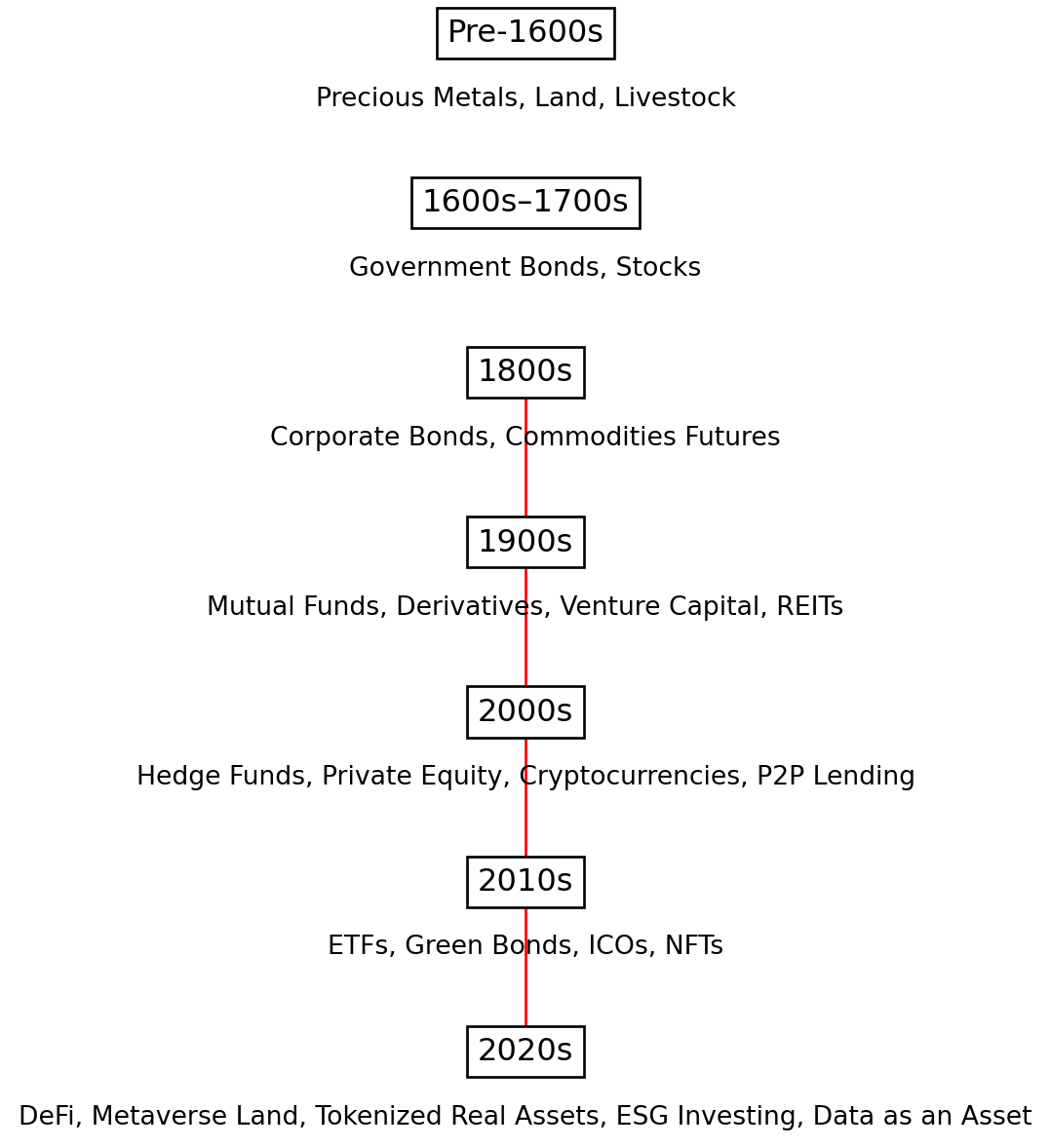
Figure 22: Asset Classes
Stocks are the most popular assets class with a long history and highly accessible to retail investor, albeit usually at the cost of a trading fee. Meme stocks are another aspect of the entertainmenization of investing. There are many groups of Twitter, Reddit, and elsewhere, where investing trends start, causing more volatility. Retail investing apps blend entertainment into the UX/UI of investing. For example stock-trading app Robinhood uses game-like features such as displaying a confetti animation to create a sense of excitement around trading investing. Retail investing UI/UX is simplified and gamified, which encourage impulsive short-term buying and selling with a focus on speculation over fundamentals and cause FOMO (fear of missing out).
Bonds are a form of debt investment also known as a fixed-income asset where the principal is repaid at the maturation date of the bond (usually in years) with an added premium. Individuals can’t emit bonds, but they can invest in them. It can be a way to invest locally in one’s own city - or globally. For individuals, there’s access to some green bond exposure through ETFs (exchange-traded funds) available on retail investing apps. Access is not universal and availability depends on the geography of the user and local legislation; for example Revolut, the most downloaded finance app in the EU, only enabled bond investing for European customers in summer 2024 (Revolut, 2024b, 2024a). Investing in bonds is a form of Passive Investing and allows investors focus on low-risk passive income instead of daily stock investing most popular on Robinhood and Revolut - albeit with much less potential for returns.
Lending is an attractive assets class with a significant social impacts providing opportunities to small farmers and other participants in the money markets while offering the lender a return, all possible through online apps and platforms. Retail investors can lend small amounts of money (also known as MicroLending) on peer-to-peer (P2P) lending platforms such as Twino. These loans and pooled and the risk is borne in aggregate as a form of risk-management.
Hedge funds generally are not accessible to retail investors, requiring a substantial minimum investment. However, some Hedge Fund based ETFs (exchange-traded funds) and Mutual Funds with Hedge Fund Strategies may try to mimic hedge funds, investing in the same underlying assets. While hedge funds used to be available for professional investors, online platforms such as (Hedge, 2023) aim to provide retail investors a social investing experience to “make a hedge fund with your friends”, where people can come together and pool their funds in “mini‑fund”, with social tools such as chat and voting on trades built-in, aiming to democratize the hedge‑fund model for small retail groups. It’s how many people in the world of venture capital invest, investing together, or after a lead investor, who they trust. An early entrant into the market, (Renato Capelj, February 16, 2021 6:47 PM) positions Titan as a “mobile hedge‑fund” app, which is actively managed, with transparent fees, and a competitor to automated robo‑advisors.
Commodities are increasingly investable, with retail investors can now buy cold and silver as well as rare metals on financial platforms such as Revolut. Democratization of commodity trading lowers the barriers and allows individuals to diversify their portfolios beyond equities and bonds.
Real-estate is increasingly available on co-investing platforms allowing retail investors access into this asset class with a relatively low starting price. Thus investing in sustainable architecture can be an attractive proposal both from an environmental as from a financial st andpoint, potentally providing a passive income stream in the form of rent. According to (Debnath et al., 2022) 39% of global CO2 emissions comes from the building sector. Construction is large emitter because of the use of concrete; super tall buildings are very CO2 intensive (Zhao & Qin, 2015). Building emissions can be reduced by using sustainable design and materials, digital twins of architecture enable pre-visualization of different designs (Panaro et al., 2024) as well modeling the usage of the building, for example the interior shop floors in commercial real-estate (Jia et al., 2023). In housing development, there’s evidence of ‘green’ buildings achieving a ‘higher financial return than conventional buildings, both in terms of rent and sale price’ (Oyedokun, 2017).
Venture capital largely remains inaccesible for retail investors, and not only for its high capital requirements; groups like the Investment Company Institute (ICI) pushing to increase retail access to private markets are criticized for exposing retail investors to increased risk (Langton, 2025). While value investors love rules-based screens such as the Piotroski F-score, used to identify stocks that have strong fundamentals, these measures break down for high-growth startups whose financials are distorted by deliberate burn (Gurung et al., 2025).
Thematic Capital refers to choosing a clear investing thesis around a topic and building a resilient strategy. For example, for ESG-themed investments might pick Green Bonds, Sustainable Equities, and ESG‑focused Mutual Funds and ETFs as the core, each screened through ESG metrics integration to ensure material impact rather than superficial marketing however although there is a wide range of investment products marketed as sustainable, many are fake, so rigorous due‑diligence is essential to weed out greenwashing and align holdings with authentic sustainability outcomes. Just like there are “green shops” for buy everyday products, there are also green investing platforms for purchasing various types of investment products that have been rated on some type of sustainability metric, for example green ETFs, green bonds, and the like. All of these are essentially forms of green branding, designed to make it easier for investors to find an investing product they trust.
There are many investment platforms self-describe as green, but the questions remains, who to trust.
| Name | Description | Link | Sources |
|---|---|---|---|
| Trine | trine.com | ||
| The Many | the-many.com | ||
| Sugi | sugi.earth | ||
| ClimateInvest | clim8invest.com | ||
| Circa5000 | circa5000.com | ||
| FairOwn | Aims to use product subscriptions to simplify circular economy, instead of buy-throw-away culture. | fairown.com | [@hankewitzEstonianFintechCompany2021] |
Beyond the core, a diversified sustainable portfolio might incorporate Impact Investing. I’ve listed a sample of existing platforms that channels capital into mission‑driven ventures, Renewable Energy Infrastructure (via ETFs or mutual funds) supporting wind, solar, and hydro assets, and Sustainable Real Estate accessed through REITs or ETFs that prioritize energy efficiency and low‑carbon construction. Social Bonds expand the opportunity set by financing healthcare, education, and affordable housing, while Carbon Credits (via ETFs or specialized funds) and Sustainable Commodities (via ETFs or funds) offer exposure to emissions‑reduction markets and responsibly sourced raw materials, respectively. For deeper community impact, one might allocate some funds to crowdfunding and crowd-loan platforms and to Sustainable Infrastructure Funds (available as ETFs, bonds, and mutual funds) that upgrade transport, water, and grid systems for a low‑carbon future. In short, disciplined selection across various investment vehicles increasingly available to retail investors, guided by a robust investing thesis and aide by monitoring tools, in theory, would enable one to align financial performance with genuine social and environmental progress while avoiding the pitfalls of superficially labeled products.
Green and Sustainability-Linked Bonds
Green bonds are released by companies, international organizations, and cities to raise money for green transformation, usually for building something to improve sustainability, tied to specific projects. There’s a growing global trend in green bond emission, with 257 Billion USD worth of green bonds issued in 2019, expected to reach 1 Trillion USD annually by 2030 (MacAskill et al., 2021). That prediction was too low with 870 Billion USD green bond emissions reached already in 2023; currently Europe is the largest emitter of green bonds (Climate Bonds, 2023). China has the 2nd largest green bond market in the world, and it’s growing fast; buyers are looking for green bond certification to reduce yield spread, meaning the price of the green bond is becoming more similar to the price of a ‘regular’ bond (Q. Li et al., 2022; W. Peng & Xiong, 2022). The Climate Bonds Initiative, which is working on greening the entire short-term debt (bond) market, puts the size of the entire market at $55 trillion, underlining the relative percentage of green bonds is tiny (Climate Bonds Initiative Calls for Greening of $55trn Short-Term Debt Market, 2022).
In 2017 the Malmö city in Sweden released green bonds to finance a sustainable transition of the city (City of Malmö, 2017). An independent analysis found bonds may not be emitted for financial reasons but to improve the reputation and city image, lower interest rate (aptly named greenium) with a similar in returns to traditional bonds - and have their share of challenges, namely being difficult to certify, monitor, report and measure impact of (Sjöström et al., 2020).
Making sure a green bond is truly supporting sustainability is a challenge. For example, Aramco, the Saudi Arabian public petroleum and natural gas company faced scrutiny for what critics deemed as ‘Fake green bonds’ (Anthropocene Fixed Income Institute (AFII), 2022). Green bonds can also be emitted on blockchains with the stated goal of improving transparency. Hong Kong multi-currency green bond on the blockchain. The issuer (Hong Kong government) hopes to reduce greenwashing (Hall, 2024; Kitano, 2024). In the EU as well, there are emerging tools for monitoring green bonds on blockchain (Christodoulou et al., 2023). (Qin et al., 2023) finds evidence that the combination of green bonds and blockchains are an enabler carbon neutrality in China. The World Bank successfully raised 110 Million USD in Australia in 2018-19 and has since doubled the amount in a new 220 Million USD emission in Switzerland using bonds on a blockchain ledger for SDG-related projects (World Bank, 2018, 2019, 2024).
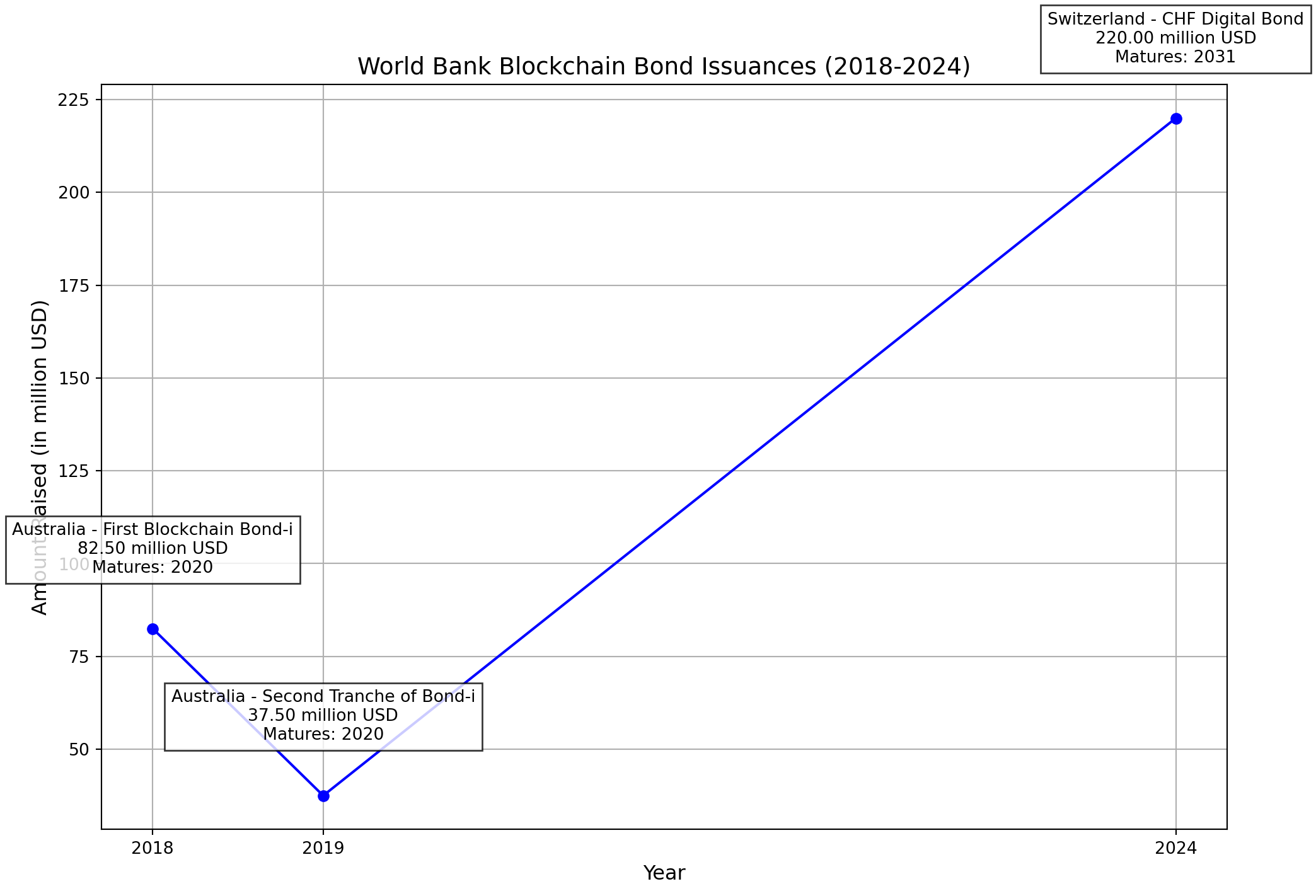
Figure 23: World Bank Bonds
Sustainability-Linked Bonds are less stringent than green bonds; they are not tied to specific projects but more broad sustainability targets (Priscila Azevedo Rocha et al., 2022): “Sustainability-linked bonds let companies borrow cheaply if they meet environmental, social, and governance targets. A Bloomberg News analysis found those goals are weak”. (Priscila Azevedo Rocha et al., 2022) suggests “So far, most ESG investing is in the stock market. But the $22 trillion corporate bond market, where mature global companies such as Chanel go to borrow money from investors, has a particularly powerful role to play. Companies rely on debt much more than they do on stocks.”
Fusion of Traditional Finance and Decentralized Finance (DeFi)
Crypto-assets and digital tokens (known as decentralized finance or DeFi) are a highly accessible yet risky asset class, offering investment opportunities to anyone with a mobile phone and internet access. The low entry barrier makes crypto among the most potentially inclusive forms of investment, though bearing significant risks, as well as regulatory challenges. Cryptocurrencies are popular among young people yet in many ways crypto needs even more financial literacy than traditional financial assets. Crypto investing removes most entry barriers while having high risk.
(Statista, 2024) estimates over 860 million cryptocurrency users worldwide by 2025, just shying away from 1 Billion users. A Brazilian study (n = 573) found that crypto investors in Brazil are young, male, and have a high risk tolerance, when compared to non-crypto investors (Colombo & Yarovaya, 2024). “Brazil’s planned adoption of CBDC (Central Bank Digital Currency).” “It finds that risk tolerance, economic pessimism, and a belief in better investment acumen are significant predictors of crypto investment.”
The large number of crypto users begs the question: what would investing look like at the scale of 1 Billion people? The most popular use cases for crypto have been NFTs, online smart contracts attached to some type of asset, typically a picture. Social media is even bigger, with over 2 Billion users, so it’s not difficult to image the combination of Social + Crypto (NFTs?) to become the largest retails investing revolution, albeit a risky one, with many users losing their assets. This is the vision behind Sandbox, a Metaverse cryptocurrency sold by banks such as LHV in Estonia (Raido Tõnisson, 2022a).
Taiwan has an active market for crypto-assets while with some limitations. In 2022, the Taiwan government banned buying cryptocurrencies with credit card quoting the volatility makes it similar to gambling (David Attlee, 2022; 廣編企劃, 2022). In January 2022, BlockTempo and OpenSea teamed up to mint the “Top Taiwan Influencers” collection—21 unique, limited-edition Taiwanese digital influencers as NFTs, depicting Taiwan’s leading blockchain figures, designed to honor their industry contributions in digital art (OpenSea, 2022).
In general, crypto ownership can be divided into self-custody (you own the keys to your wallet) and custodial ownership, where you trust someone else (i.e. a centralized exchange or a bank) to hold the cryptocurrency for you. Both have their risks (self-custody, losing your keys; custodial: the exchange steals your tokens or goes bankrupt). Centralized crypto exchanges are in essence loaning assets from the user. “The piece of the settlement aimed at getting important information to customers is more understandable from a retail protection standpoint. Customers who lend crypto assets to a company in exchange for a promised return should get the information they need to assess the risks against the rewards” (Hester M. Peirce, 2022).
There’s also a large trend of fusion of decentralized finance (DeFi) and traditional finance (TradFi), with the largest established investors, such as BlackRock, launching tokenized funds (Matos, 2024; Sandor, 2024; Securitize, 2024). Tokenization is similar financial securitization which has been happening for a long time, with blockchains creating new tools for securitization: for example art can be securitized and tokenized (Masterworks, 2023). Blockchains makes this kind of financial engineering easier as any developer can do it; one does not need to be a bank.
In Switzerland, institutional funds entered crypto early. Licensed already in 2019 by the Swiss Financial Market Supervisory Authority (FINMA), AMINA, formerly known as SEBA Bank, was among the first regulated cryptocurrency banks (AMINA Bank AG, 2023). The first crypto fund was launched in September 2021, when FINMA approved Switzerland’s first regulated crypto-asset fund—the “Crypto Market Index Fund” from the same AMINA bank, giving investors access to a FINMA-supervised vehicle that tracks a diversified basket of blockchain-based assets with the AMINA Bank’s custody (FINMA, 2021). AMINA of course was not the only bank interested in crypto, with “[m]ore than half” of Swiss banks planning to offer digital assets services in the near future (swissinfo.ch/urs, 2022). Banks launching Crypto ETFs (Exchange Traded Funds) enable their clients to have exposure to crypto without ever buying cryptocurrencies directly themselves. However, while owning cryptocurrency directly allows one to use crypto tools to look at any wallet balance, ETFs hide that transparency.
To put it very simply (knowingly oversimplifying), in traditional finance legislation is an enabler of corruption as in the case of Swiss privacy laws, where illegal funds can be hidden, while in cryptocurrencies, the lack of clear and comprehensive regulation is an enabler of corruption.
Pricing crypto is not based on any single fundamental metric, but comes from tokenomics: a catch-all word for token design and internal economics, such as supply schedules, emissions cuts, burns and staking yields to frame the basic scarcity curve as well as demand side narratives, and real world utility and user sentiment. Crypto enables significant potential for financial engineering and innovation by anyone with enough programming skills.
Bitcoin is by far the most popular cryptocurrency with its high price volatility creating opportunities for high gains and high losses. While bitcoin has been called a “digital gold” for store of value, its volatility characteristics are very different from gold, as seen on this chart.
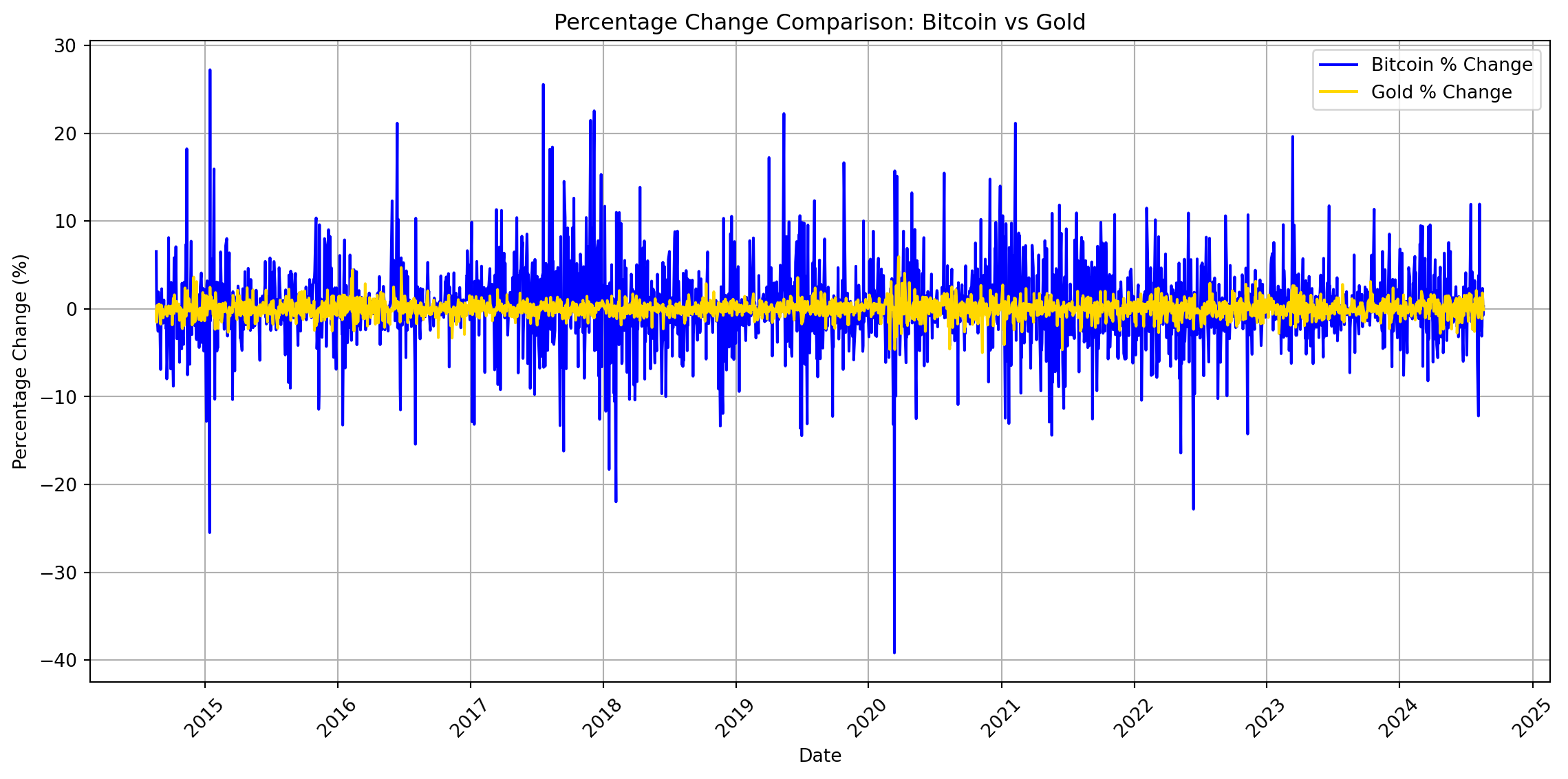
Figure 24: Bitcoin vs Gold Futures
The volatility of the markets has notably shifted crypto research towards pricing theories (S. Peng et al., 2024). However volatility is relative. Volatile national currencies lead people to find other assets to hold. If one’s national currency is collapsing, one might find crypto has a relative safe haven to keep one’s funds. People in Turkey losing 75% of the value of their assets when currency collapses, is one of the reasons why people might buy crypto (Saba & Saba, 2022; T. R. Wilkes et al., 2021).
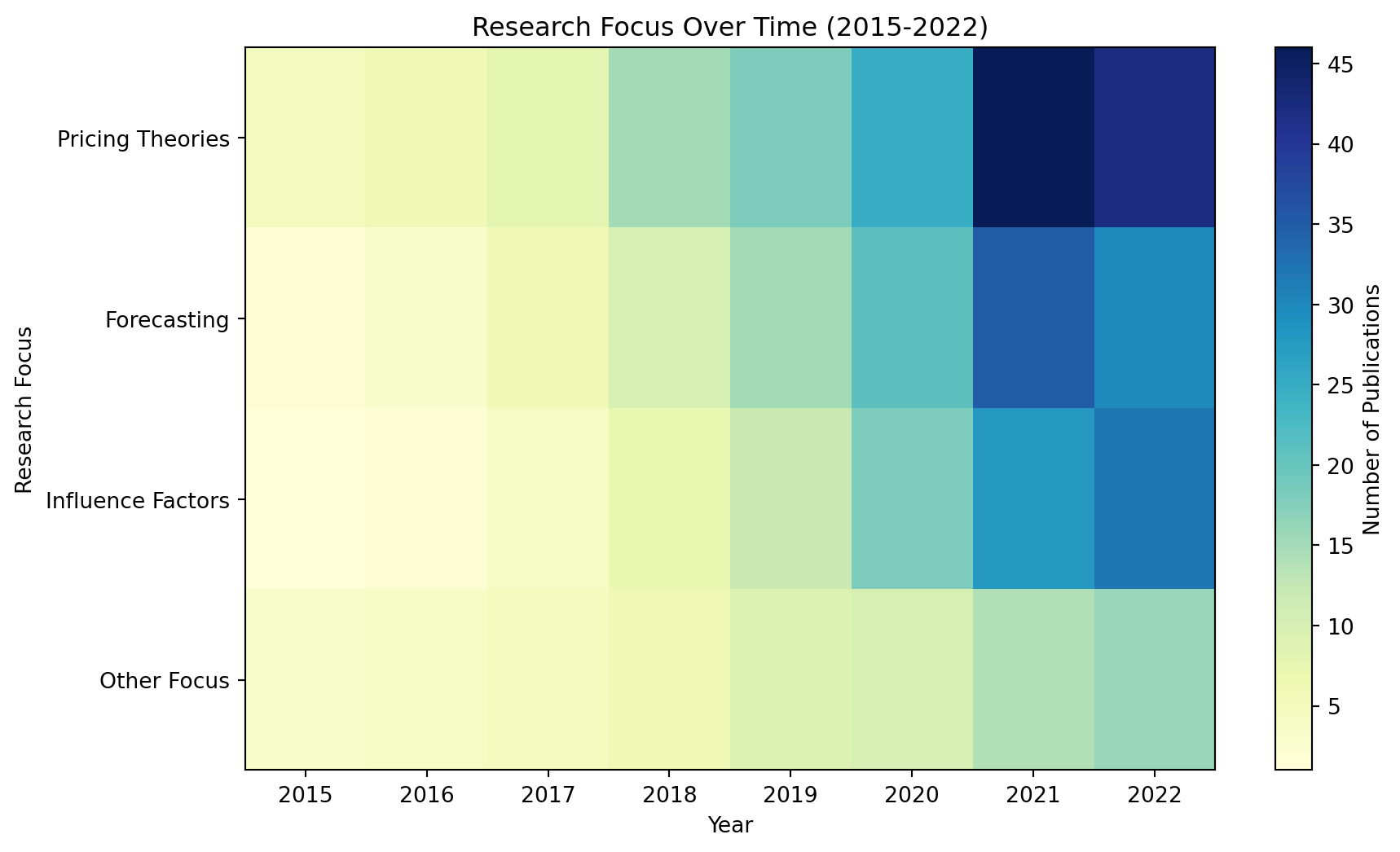
Figure 25: Crypto Pricing Theories
For example, an index of major sustainability news can be compared with crypto prices, which may have negative, positive, or no correlation with the listed cryptocurrencies.
Regenerative Finance (ReFi) and DAOs
“Would you rather buy a DogeCoin or a regenerative food forest token?” Curve Labs founder Pat Rawson quotes Shiller (2019) in ReFi podcast about Kolektivo (ReFi DAO, 2022).
(Caio Jobim, 2022) believes Bitcoin has failed as a mainstream money but blockchain technology in general will underpin the next-generation digital-currency systems, ultimately replacing both cryptocurrencies and cash. While Bitcoin uses proof-of-work, and protocol which is highly energy intensive (and thus, unsustainable), later innovations such as proof-of-stake enabled the creation of blockchains, which are energy-efficient; an overview from 2023 details 23 low-carbon blockchains (Alzoubi & Mishra, 2023). (Sepandar Kamvar, 2022) Sepandar Kamvar, co-founder of Celo, famously calls “[a] blockchain is a database without a database admin”. (dGen & PositiveBlockchain, 2021) built a positive blockchain database of blockchain for good projects. Some traditional green investors have started to take note. (Marquis, 2021) reports on RSF Social Finance’s shifting from impact investing to regenerative finance, detailing its $230 million under management and community-pricing innovations. Blockchains are proliferating, with newer blockchains being more energy efficient (and thus having better sustainability properties); as of early 2025, there are nearly 2000 unique public blockchains in existence (Routescan Research Team, 2025; Schwartz, n.d.).
Inspired by the decentralized finance (DeFi) Summer of 2020, when projects like Compound, Yearn, and Uniswap demonstrated blockchain-based financial tools could go viral, followed by COVID-19, which exposed systemic fragility and served as a wake-up call about global interconnectedness and ecological risk, crypto pioneers attempted to use their native tools for public good, instead of only financial goals, giving birth to the regenerative Finance (ReFi) movement, applying technology to carbon accounting, market development, and governance (B. Smith, 2021). Innovating on the intersection of blockchains, tokenization, nature-backed assets, and cryptocurrencies, ReFi leveraged DeFi to create financial systems that aimed to restore ecosystems and empower communities by prioritizing positive environmental and social impact (What Is ReFi Regenerative Finance Explained, 2023).
Founded already in 2018, Regen Network built a blockchain for ecological data and carbon credits, using the Cosmos blockchain SDK (Regen Network, 22-01, 2023). Another early example is the Celo proof-of-stake blockchain, founded in 2020, which offsets carbon emissions at the protocol level, automatically investing a small percentage of each transaction into a reserve, which buys green assets, such as tokenized carbon credits (e.g. Moss MCO2), laying the groundwork for a regenerative financial system (Celo and Regenerative Finance - Climate and ReFi, 2021). (Planet of the Klimates - Luis Adaime - Founder & CEO of MOSS.Earth, n.d.) details the issuance and tokenization of tropical-forest carbon credits (Moss.Earth MCO2) and biodiversity tokens within the Celo ecosystem. Similarly, the (KlimaDAO, 2023) KlimaDAO protocol, founded in 2021, tokenizes real-world carbon assets into liquid Klima tokens, establishing a DAO-governed, transparent market for carbon neutrality, which has $4 billion in total transaction volume.
Social features has always been a weakness of Web3, and (Syndicate, 2022) contends that it’s not enough to build decentralized financial rails to democratize wealth creation; crypto investing must also redesign the social networks around capital. The Web3-based attempt to achieve these goals is called DAO or Decentralised Autonomous Organizations, which allow wallet holders to collaborate and vote on issues. (BlockChannel, 2017) defines a DAO as a Decentralized Autonomous Organization on blockchain, using smart contracts and token-weighted voting to enable permissionless, community-driven governance. In the world of Web3 and cryptocurrencies, smart contracts make it possible for DAOs to also pool member resources for investing. Because of the on-chain nature where transactions are visible to anyone, they may be seen as more transparent. DAOs an be used in a similar way to Hedge funds; a DAO can have a treasury, with a shared multi-sign wallet (similar to a bank account) from which investments can be made together. Typically DAOs have a voting system to make decision while Hedge Funds may be more centrally controlled. A notable example, (Carra Wu & Chris Dixon, 2021) details how the Friends With Benefits (FWB) DAO transformed consumers into investors by requiring an application review and token buy-in, granting members governance rights and meaningful ownership in a token-gated community. With a specific sustainability focus, (Trees for the Future, 2023) DAOs to enable concerted action towards climate goals using the pooled resources in a treasury, a blockchain (on-chain), similar to how hedge funds work.
(Ian Bezek, 2021) argues that DAOs and governance tokens could replace stock exchanges and corporations by using programmable blockchains for digital ownership and control of assets registered in on-chain distributed databases. (Nathan Reiff, 2023) explains how DAOs use smart contracts and cryptographic voting to manage organizations without a central authority; some advantages include transparency and community ownership, while existing challenges of being in a legal gray zones (one still needs to register a legal entity) and risks of security hacks, are real. (Rehash: A Web3 Podcast, 2022) insists that people and not just code must be the north star in Web3 design frameworks to achieve a truly human-centered Web3. Yet, the first wave of Web3 users were privacy-conscious and wouldn’t answer questions, making it challenging to create good personas, making design difficult (Crabb, 2023). While somewhat out of date, (Ray, 2023) offers a comprehensive review mapping the Web3 technology landscape which serves as a good introduction. Finally, (Empowering Digital Asset Banking, n.d.) notes it’s not only retail investor entering the crypto world, large institutions are doing the same, with tokenization, crypto custody and asset‑management increasingly becoming a part of mainstream finance.
(Aikman, 2022) proposes using a DAO called OpenESG to cut opacity and greenwashing, with a Decentralized Expert Council and Community Voting to build transparent rating methodologies, while validator bounties would incentivize crowdsourcing and verification of data, making every scoring step is auditable; high scorers could gain direct access to sustainable financing, turning ESG excellence into tangible regenerative outcomes. While the ideas remain, the OpenESG organization itself has defunct for unknown reasons, leaving one to wonder if these ideas are workable.
A lot of financial tooling from traditional finance (called trad-fi in crypto circles) has been replicated using blockchains and related technologies. However, the legislation affecting Hedge Funds and DAOs would be different as hedge funds are an older and more established financial tool whereas DAOs still fall in somewhat of a gray area. For example, in the U.S.A. federal judge ruled that crypto collectives (crypto investment clubs) like Lido DAO are general partnerships liable for unregistered securities offerings (Investment Clubs and Collectives Deprecation FAQ, n.d.). In order to overcome these legal hurdles, VC-backed startups have launched platforms to support a new generation of DAOs, providing regulatory navigation and smart-contract tooling that broaden blockchain dependencies beyond DeFi protocols (Lucas Matney, 2022).
Oracles provide the intersection between finance and real world sustainability data. A data oracle is the concept of a source of real-world data which can be ingested through an application programming interface (API) to a blockchain system. There are many databases of sustainability information which could serve as an oracle for carbon labeling, packaging, transportation, consumption, and waste. For example, crypto crop insurance provided by IBISA Network uses blockchain triggers and satellite data to offer transparent, automated payouts for farmers facing weather-related risks (IBISA Network – Enabling the Next Generation of Insurance for Agriculture, n.d.). While (Caldarelli et al., 2020) notes it’s a challenge to ensure the accuracy and trustworthiness of real-world data from Oracles, the largest Oracle provider ChainLink founder Sergey Nazarov believes the collaboration of oracles and blockchains can make carbon credits more trustworthy. (Brady Dale, 2021; Chainlink, 2022).
Divestment: Supporting Sustainability by Avoiding the Worst Polluting Companies
Divesting is the inverse of investing. If no sustainable alternative can be found, at least taking one’s money out from polluting companies signals one’s green preferences. “Sustainable development requires more investment in sustainable companies and less in unsustainable firms.” (Van Zanten & Rein, 2023). In institutional finance, the Norwegian $1.3T USD sovereign wealth fund (the world’s largest) started a divestment trend in 2016 by divesting first from coal following by divesting from oil, gas and coal extracting companies (Ben Martin, 2017; Holger, 2019). Their plan to reach net-zero CO2eq nonetheless only targets 2050. Furthermore, who would be the counterpart for such large transactions. The fund also announced divesting from Russia after its invasion of Ukraine, however has yet to sell any shares citing lack of buyers on the Moscow stock market. Even with divesting from oil and has, Norway Government Pension Fund Global (GPFG) still adheres to the Markowitz’s Modern Portfolio Theory (MPT), with enough diversification between assets (Papaioannou & Rentsendorj, 2015).
University of California also followed suit with divestment of its $126B USD portfolio from oil and gas. Other large university endowments, such as managed by Yale, Stanford and MIT are in decision gridlock.
While divesting makes news headlines, even divestment by large institutional investors, such as the Norwegian National Pension Fund (GPFG), has a negligible effect on the heavy polluters’ business; by the same logic, it can be deducted, the financial effect of retail investors divesting, is meaningless. If retail investors act in aggregate, the reputational effect needs further research. “To halt climate change, some investors have decided to divest from fossil fuel companies. Reviewing the literature suggests that divestment from fossil fuel has limited financial consequences; it slightly increases divested firms’ risk and their cost of capital, while reducing divested firms’ market value,” is the pessimistic conclusion by (Plantinga & Scholtens, 2024).
By extension, it may sound feasible that divesting could have a meaningful impact on companies if a large number of retail investors collaborate on ‘banning’ the company to send a message to the board, yet in practice small individual divestments may be negligible to governance decisions.
The Economics of Decoupling: Attempts to Disconnect Economic Growth from Eco-Degradation
Is the “eco” in ecology and economy the same? Oîkos, the Greek word for “household”, seeds two modern disciplines: ecology studies how the home works; economy sets the rules for managing it. The two have drifted apart: one guarding planetary health, the other chasing growth. This chapter reunites them by asking: how do we measure prosperity without wrecking our home?
Post-AI Economics
People around the world are discussing how traditional economics can adjust to the abundance provided by AI, known as Post-AI, Post-Labor, or even Post-Scarcity economics. Last year, the Seoul AI Summit pushed for voluntary safety standards to manage systemic risks while the French AI Summit tackled energy consumption and environmental costs, highlighting the need to embed AI sustainability into economic planning, regulatory frameworks, and corporate accountability (Hern, 2024; Milmo, 2024). More recently, the Anthropic Economic Index tried to capture how AI impacts human work and economics in general, noting that among millions of work tasks submitted to Claude - studied as anonymized conversations using a privacy-preserving clustering tool Clio, separately described in (Tamkin et al., 2024) -, that 43% of the work could be categorized as automation and 57% as augmentation of human economic activities (Handa et al., 2025). At the same time, economists’ predictions of the future impact of AI are far from uniform, for instance MIT economist Daron Acemoglu estimating that in the U.S. only 5% of the tasks can be profitably automated and AI will only contribute a modest 1.1% to the GDP until 2035 (Acemoglu, 2024).
Econometrics: The Many Ways to Measure an Economy
Econometrics is the science of measuring the economy.
The creator of the Gross Domestic Product (GDP) metric in 1934 Simon Kuznets said: “The welfare of a nation can scarcely be inferred from a measurement of national income as defined by GDP…Goals for ‘more’ growth should specify of what and for what” (United States. Bureau of Foreign and Domestic Commerce et al., 1934).
GDP was the culmination of previous work by many authors, beginning with William Petty in the 17th century (Rockoff, 2020). This long journey underlines how a metric about a complex system such as the economy is continuous work in progress. There has been ongoing work to create improved metrics such as the the Sustainable Development Goals (SDGs), Human Development Index (HDI), Genuine Progress Indicator (GPI), Green GDP, Inclusive Wealth Index, and others (Anielski, 2001; Bleys & Whitby, 2015; Kovacic & Giampietro, 2015).
Measuring wellbeing in addition to GDP and the metric should include resiliency dashboards, to visualize metrics beyond GDP, and they are an integral part of country reports (GreensEFA, 2023). Similarly, the doughnut (donut) economics (more below) model calls for a “dashboard of indicators” (TED, 2018).
The National Academies links public health outcomes (air quality, water safety, and food systems) with sustainability actions, calling for an integrated cross‐sector strategy to protect community well‐being (Public Health Linkages with Sustainability, 2013).(Guidotti, 2015) argues environmental quality foundational to public health and urges embedding sustainability principles across healthcare systems and policies; in order to have healthy communities, we need clean air, pure water, and toxin‐free surroundings.
The Evolution of Economic Metrics
Traditionally, the true cost of products is hidden. The work is hidden. The first two decades of the 21st century have seen increasing economic thinking, looking to challenge, improve and upgrade capitalism to match our current environmental, social, and technological situation, often called New Economics. Some of these include behavioral economics, sustainable capitalism, regenerative capitalism, doughnut economics, ecological economics, blue economy, degrowth, attention economy, gift economy, intent economy, among others. There’s no lack of published books on changing capitalism, which goes to show there’s readership for these ideas. Build a new economic theory is out of scope for my thesis design, however I’ll focus on the parts of economic theory I believe are relevant for interaction design-ing for sustainability.
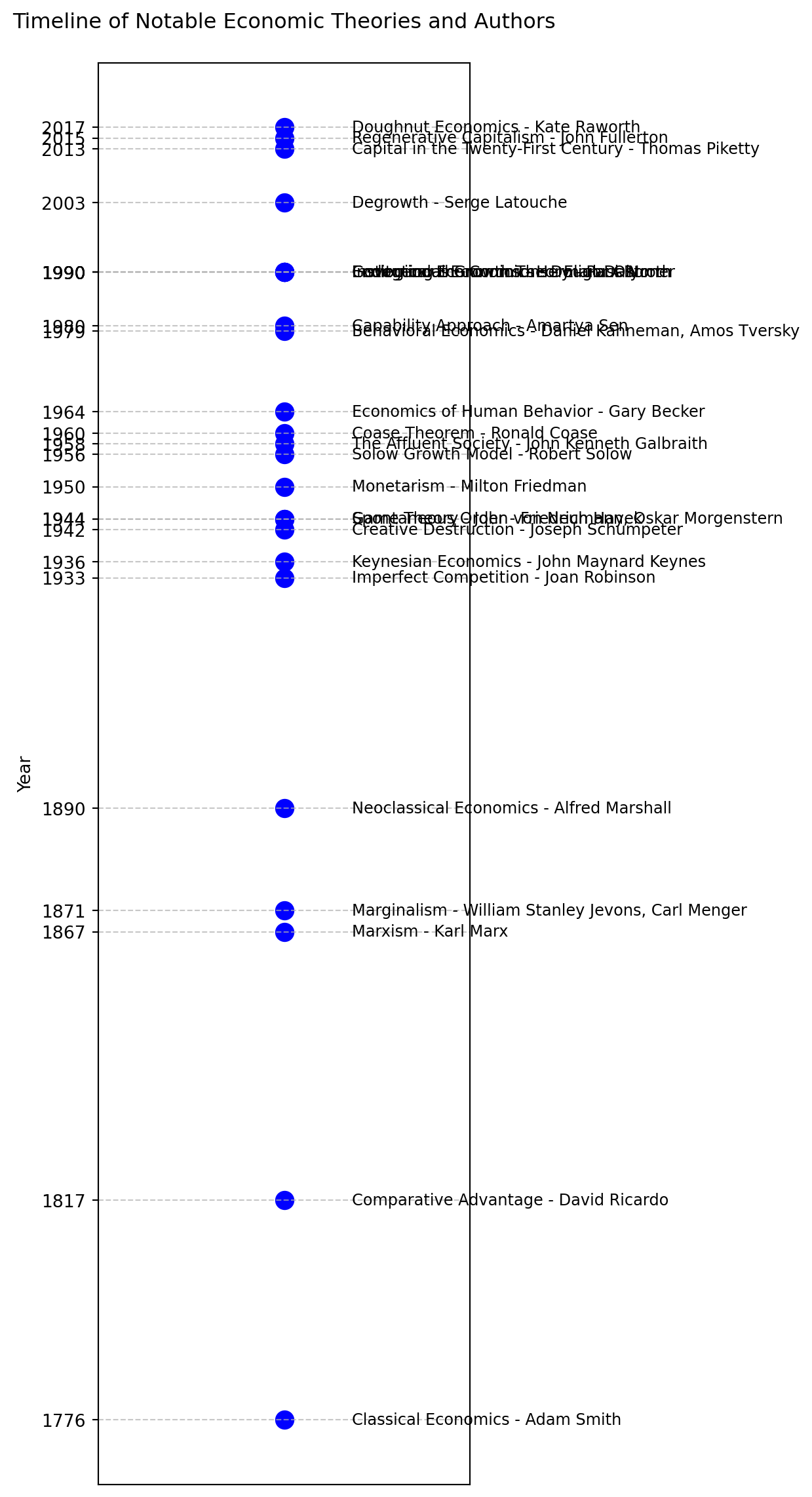
Figure 26: Economic History
There are those looking for new metrics. One of the first innovators, already in 1972, was Buthan, with the Gross National Happiness Index (GNH), which in turn inspired the UN, decades later, in 2012, to create the International Wellbeing and Happiness Conference and the International Happiness Day(Kamei et al., 2021; Ribeiro & Lemos Marinho, 2017). The World Bank talks about the comprehensive GDD+ metrics in its Changing the Wealth of Nations report (World Bank, 2021).
The Wellbeing Economy Alliance (WEAll) countries (New Zealand, Iceland, Finland, Scotland, Wales) as well as the EU and Canada, started the coalition in 2018 looking to involve more broad-based metrics in developing their societies (CEPR, 2022; David Suzuki Foundation, 2021; Ellsmoor, 2019; Scottish Government, 2022; Wellbeing Economy Alliance, 2022). (Giacalone et al., 2022) looks at wellbeing of Italian communities and proposes a new composite index. There’s also work ongoing on macroeconomic modeling, aiming to create a digital twin of the economy. Some of the most complex computer models of the economy include the Global Integrated Monetary and Fiscal Model (GIMF) (Laxton et al., 2010) and DSGE (Dynamic stochastic general equilibrium).
Hidden Costs: Pricing Externalities
Markets mis price “home maintenance.”
Co-founder of Generation Capital with 50 Billion under management David Blood “the most significant thing we can do as capital allocators is to price in those difficult to price externalities” Liebreich (2025)
In the simplest sense, prices do not capture all costs. “Consumption, production, and investment decisions of individuals, households, and firms often affect people not directly involved in the transactions” (Helbling, 2012). Externalities as an economic concept was implied by Alfred Marshall, one of the founders of neoclassical economics, in his 1890 treatise “Principles of Economics,” and further developed by Arthur Cecil Pigou in his 1920 book “The Economics of Welfare” (Marshall, 1997; Pigou, 2002). As of 2023, the value of unpriced externalities which are not included in the GDP is 7.3 trillion USD per year (Trucost & TEEB for Business Coalition, 2023). The award-winning economist Mariana Mazzucato argues in (Gupta, 2020) we should include more into how we value unpaid labor, relating to the social (S in ESG) (Mazzucato, 2018) as part of our metrics.
Ecological Economics Builds Upon Classical Economics
While Adam Smith is most famous for his concept of the invisible hand first appearing in The Theory of Moral Sentiments (1759) and further developed in his seminal work The Wealth of Nations, published in 1776, his writings also highlight the interdependence of economic actors, who through specialization increase productivity, but also increasingly dependent on each another as well as the role of empathy in individual actions (Atal et al., 2024).
Ecological economics doesn’t necessarily argue with the foundation of classical economics, rather ecological economics finds the classical economics model and by extension neoclassical economics are incomplete, ignoring the physical limits of natural resources. Ecological economics draws attention to the interdependence of economy and the ecosystem; there are physical limits to economic growth on a planet with finite resources.
The biggest point of contention is the necessity of economic growth. The founder of ecological economics Herman Daly was talking about prosperity without growth more than two decades ago, focusing on the diminishing natural resources (Daly, 1997). Daly was teaching economics to undergraduates at Louisina State University when he grew dissatisfied with the standard model of the market, which didn’t include any inputs (resources) or outputs (pollution), and later modeled his work by placing the economy within the larger system of the ecosphere (Ketcham, 2023). More recently.(Jackson, 2009, 2017) have expanded on these ideas with recipes for a post-growth world, making the ideas seem more tangible and precise, yet mostly untested in the real world.
Writing in 1973, E. F. Schumacher argued economics overlooks both natural resource depletion and environmental degradation and draws on religion (particularly Buddhism) to suggest a simpler way of life:
“Simplicity and non-violence are obviously closely related. The optimal pattern of consumption, producing a high degree of human satisfaction by means of a relatively low rate of consumption, allows people to live without great pressure and strain and to fulfil the primary injunction of Buddhist teaching: ‘Cease to do evil; try to do good.’” (Schumacher, 1985)
New economic thinkers are asking how can economic growth and sustainability be compatible. Some even ask if economic growth itself is the wrong goal? (Diduch, 2020). Lewis Hyde’s book “The Gift” argues creativity thrives in “gift economies”; reciprocity is more important for creativity than market exchanges (Hyde, 2006).
(Yüksel et al., 2023) criticizes excessive financialization where the real economy and financial markets disconnected, blaming it for the 2008 economic crisis, proposing a new index for participation finance aiming to ground the financial economy in the real economy; rooted in Islamic banking, participation finance avoids highly speculative activities, which are seen as exploitative, looking to promote stability, transparency, and fairness.
Degrowth is the most famous contender in that branch of economics. Is Decoupling Economic Growth and CO2eq Emissions Possible? Is Green Growth an oxymoron? No-one knows as it hasn’t been done before. Degrowth proponents are pessimistic it’s possible to decouple greenhouse gas emissions from economic growth; historical data shows does not show any decoupling (Vadén et al., 2020).
The original Ramsey model introduced by Frank P. Ramsey in 1928, becoming foundational for traditional economic growth theory, does not assume infinite economic growth (Attanasio, 2015). (Marc Germain, 2016) has adopted the Ramsey Model and introduced constraints such as pollution, distinguishing renewable and non-renewable capital.
(Jackson, 2017) limits to growth update shows that absolute decoupling of GDP growth from environmental impact at the speed needed for climate targets is effectively impossible; prosperity should be redefined around wellbeing, sufficiency and resilience rather than perpetual economic expansion.
Doughnut Economics and Regenerative Capitalism
Doughnut Economics, introduced in the eponymous book uses a simple visualization of a doughnut (donut in American English) to help us grasp the big picture of the economy embedded inside the physical and social worlds (Raworth, 2017). Raworth calls to move beyond GDP growth, building economies that are regenerative and distributive by design, fitting human needs within planetary limits (De Balie, 2018). The Doughnut Economics model allows one to see the social shortfall and ecological overshoot of nations at the same time (Fanning et al., 2021). The doughnut concept is simple and deep at the same time, a useful as social object to enable starting conversations with people from all walks of life, independent of their politics leanings. As Raworth calls it, it’s a “self-portrait of humanity in the beginning of the 21st century”. Combining the SDGs (Sustainable Development Goals) inside the doughnut and the Planetary Boundaries (Earth’s ecological ceiling) outside the doughnut, leaves a space inside the donut represents a state of equilibrium and balance on spaceship Earth.
In some ways this Doughnut Economics can be described as a movement. Doughnut Action Labs enable local communities to build local doughnuts customised to local problems. While the ideas have not yet been implemented on a country-level, smaller scale doughnut economics’ success stories have inspired cities to take a comprehensive view of the doughnut of their own city with several EU cities adopting the vision (Jordan G. Teicher, 2021). While critics say doughnut economics would expand the role of the government (Horwitz, 2017), doughnut practitioners in Brussels believe everything can be adapted to the place and context (BrusselsDonut, 2022; Oikos Denktank, 2021).
The city of Amsterdam is developing shorter food chains (which save CO2e) and linking residents with food production and reconnecting people to the food which foster collaboration in the community (Circle Economy, 2021). Amsterdam has also built comprehensive dashboards called the Circular Economy Monitor which makes it easy for anyone to see the progress being made towards the Dutch goal to be a circular economy by 2050 (Gemeente Amsterdam, 2022; Ministerie van Infrastructuur en Waterstaat, 2019).
| Shortening Food Chains in Amsterdam |
|---|
| Spatial planning for food place-making in the city |
| Circular agriculture |
| Regionally produced food |
| Collaboration between chain members |
| Food education |
In his 2015 paper Regenerative Capitalism, John Fullerton, an investor and a capital markets and derivatives expert, builds his economic theory on the ideas of Club of Rome and the Limits to Growth (Meadows & Club of Rome, 1972) as well as taking inspiration from R. Buckminster Fuller.
“Nature is a totally efficient, self-regenerating system. If we discover the laws that govern this system and live synergistically within them, sustainability will follow and humankind will be a success.” (Fuller, 1983)
“[H]uman civilization is embedded in the biosphere,” Fullerton’s ideas aim to balance efficiency with resiliency, so the whole system doesn’t become brittle and break (Confino, 2015; John Fullerton, 2011, 2022). While regenerative capitalism recognizes the need for economic growth it also deems “[t]he quality of growth matters” (Regenerative Capitalism, 2023). For example, he cites the example of Triodos Bank which already in the 1980s focused on sustainable banking championing responsibility, transparency, and business ethics. A member of the Global Alliance for Banking on Values, Triodos finances projects in nature preservation and restoration (GABV, 2023).
Decarbonization Scenarios
The possibility of decoupling economic growth from CO2e emissions (also known as decarbonizing the economy or eco-economic decoupling) or is hotly debated (pun intended) among scientists. (Keyßer & Lenzen, 2021) provides several scenarios for low, medium, and high levels of decoupling titled Degrowth, IPCC, and Dec-Extreme.
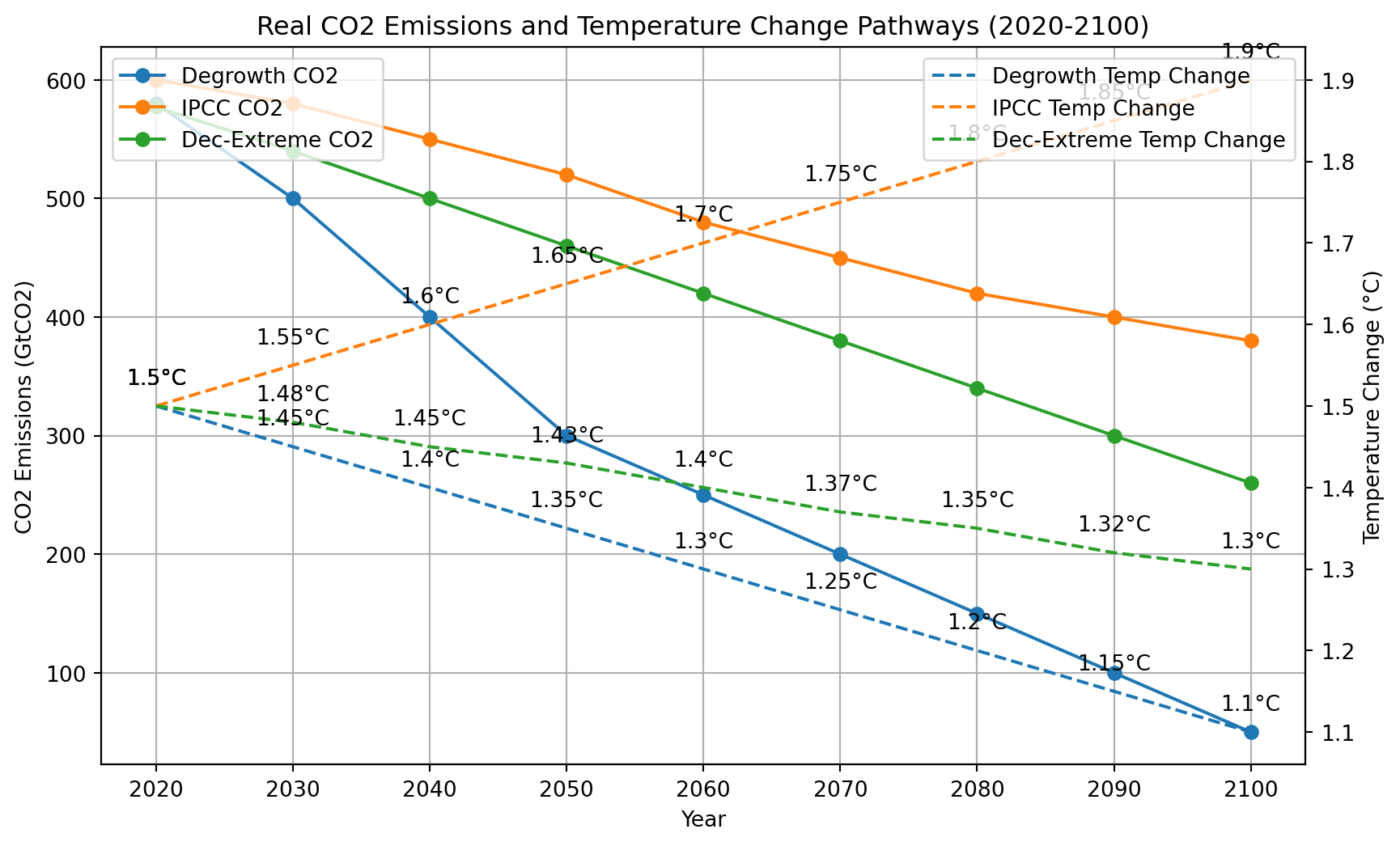
Figure 27: Climate Scenarios
Looking a the United Kingdom, (harrisson, 2019) concludes UK’s CO2e emissions have fallen 43% from 1990 to 2017 through the use of less carbon-intensive energy sources and argues for moderate policies in (Hausfather & Peters, 2020).
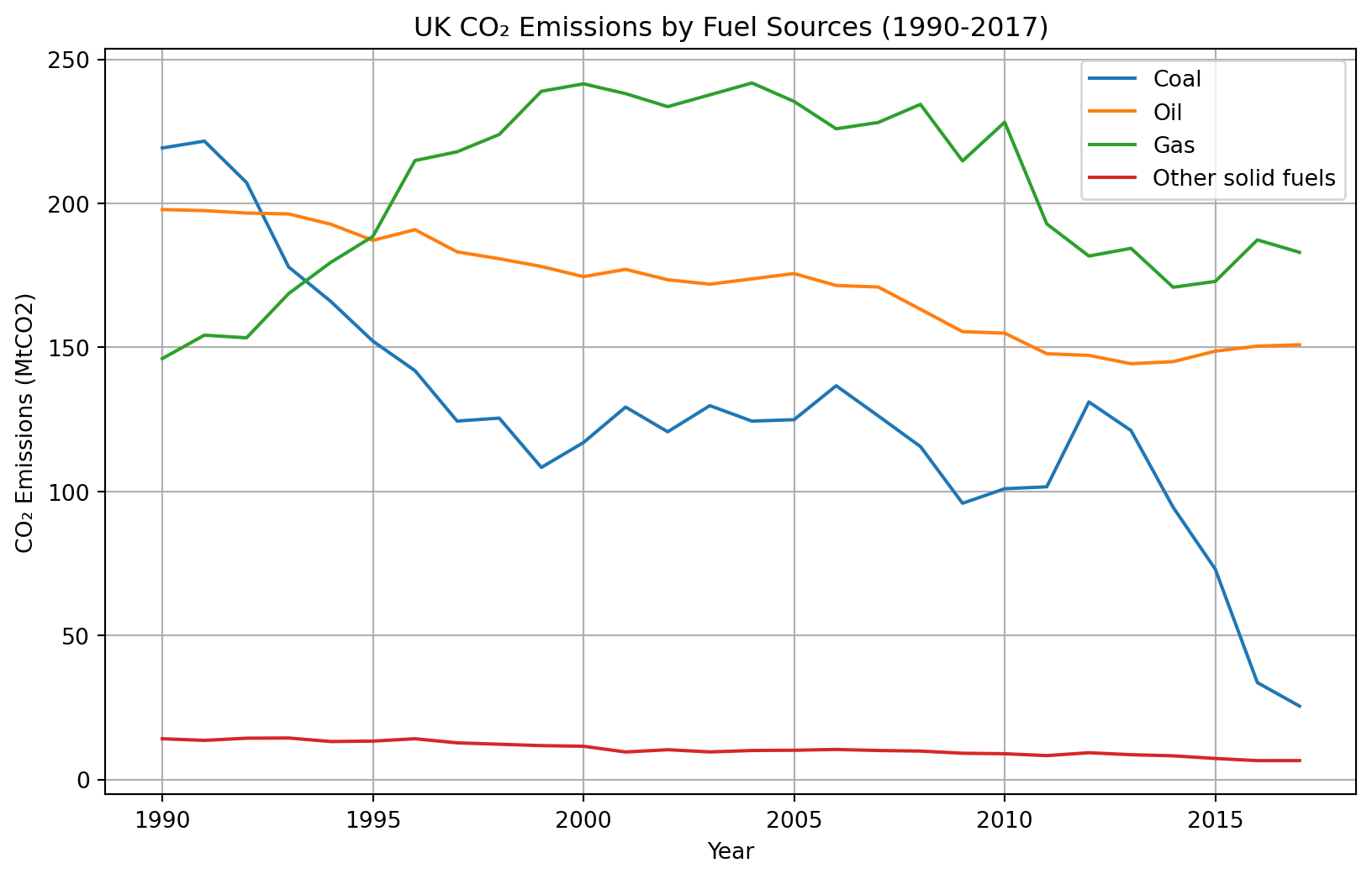
Figure 28: UK Energy Emissions’ Trends
Meanwhile the cumulative CO2e emissions trend in the UK in the same time-frame show the historic responsibility of UK (Global Carbon Budget, 2023).
CO2e emissions and GDP growth per capita follow a similar path in the BRICS countries (Brazil, Russia, India, China, South Africa) as well as in Vietnam and Somalia (Raihan et al., 2024; Viana Espinosa De Oliveira & Moutinho, 2022; Warsame et al., 2024).
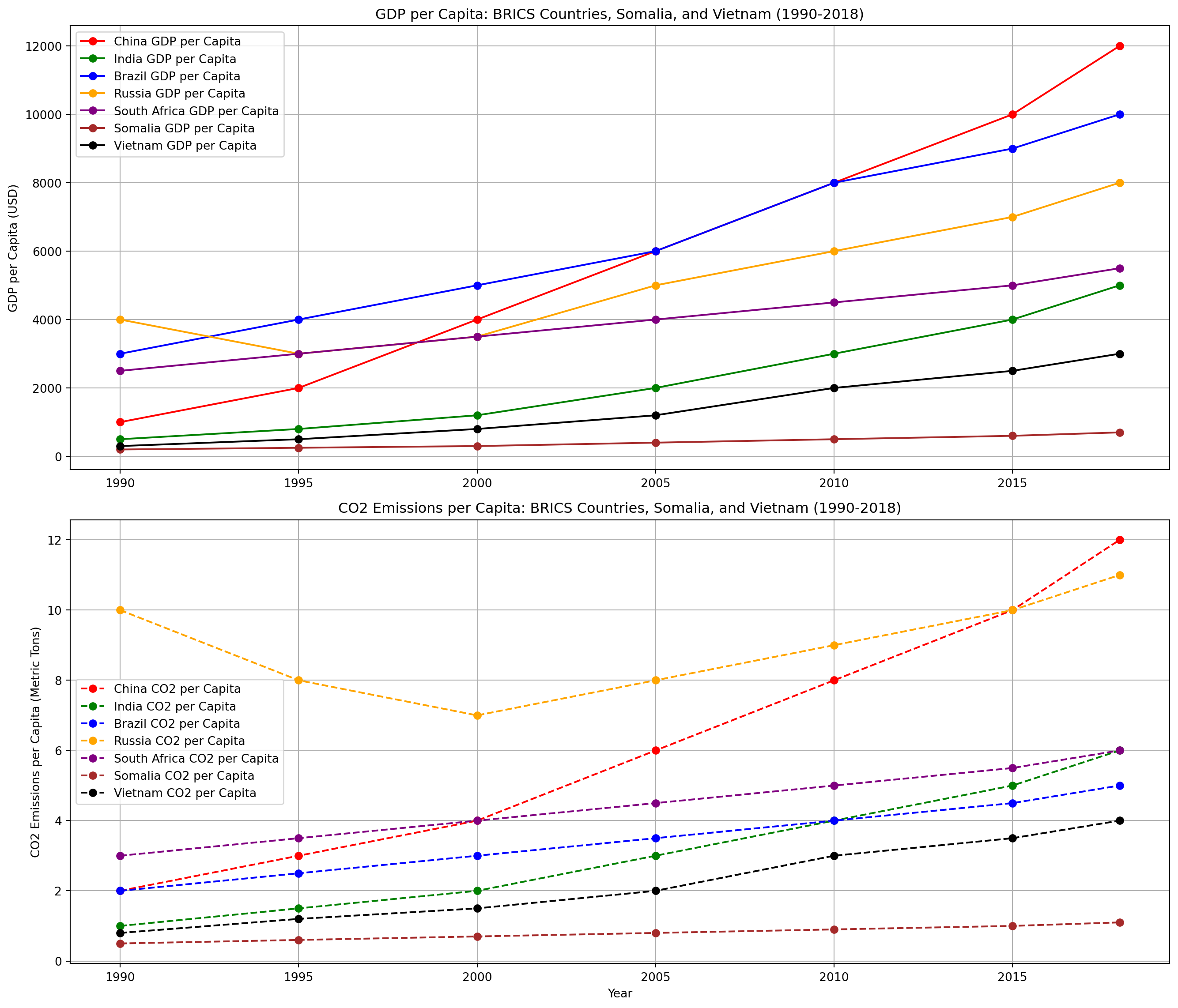
Figure 29: BRICS Emissions’ vs GDP Growth Trends
In practice, there’s ample evidence from several countries suggesting moving to renewal energy brings environmental benefits. In Bangladesh, (Amin et al., 2022) suggests “removing fossil fuel subsidies and intra-sectoral electricity price distortions coupled with carbon taxes provides the highest benefits” for both the economy and the environment. In other words, green energy is a win-win solution, for both the environmental health and financial wealth.
There are still low-hanging fruits to be picked in terms of energy efficiency. (Devlin & Yang, 2022) analysed regional steel supply chains between Australia and Japan, finding that co-locating steel manufacturing with renewable energy sources would provide the highest energy efficiency, reducing energy consumption by up to 45%; moreover, a carbon tax of 43-123 USD per tonne of CO2eq would mitigate the “green premium”. (Stefan Klebert, 2022) CEO of GEA, a large producer of machinery and heat pumps, highlights that heating and cooling account for between 50-90% of energy use in processing plants; deploying state-of-the-art heat pump technology can half CO2eq emissions; large-scale carbon-neutral manufacturing is already possible with existing technologies.
One example is Innocent’s Rotterdam juice plant, which operates a carbon-neutral facility (in terms or energy use for processing) by integrating heat pumps to capture and reuse waste heat across the production process; the article does not cover emissions from the juice source materials (Innocent Opens £200m Carbon-Neutral Factory in Rotterdam - Investment Monitor, n.d.). Palsgaard, a large producer of emulsifiers and stabilisers for food industries, reports similar results of carbon-neutral production, through using advanced heat-management and green energy (hydro-power in Denmark) sources (CO2-neutral Factories, n.d.). The Green Transition Denmark think-thank has published a report calculating that the complete decarbonization of Denmark by 2040 would cost about 6.2 billion Danish krone (close to $1 Billion USD) per year, achieving full net-zero emissions, full electrification of road transport, electrification of 75% of industry and 30% of heating, capping biomass use at 10.5 PJ (petajoules) to boost forest carbon storage by 1.6 Mt CO2, expand forests by 290 000 ha, and reduce farmland by 34%, while producing 90 PJ of green fuels (Møller & Tang, 2024).
Already in 2019, Alois Müller built an example “Green Factory” in Ungerhausen, where a 1.1 MW rooftop photovoltaic system supplies 2/3 of the electricity (feeding excess power to the grid), combined with a heat and power boiler powered by biogas and pellets (note: pellets have become very controversial as their sustainability highly depends on the source material), a 100000 liter buffer tank for waste heat, and a 230 kWh lithium battery (VDI Zentrum Ressourceneffizienz, 2020).
Advances in sensors, AI, and robotics, increasingly enable lights-out manufacturing, which leverages full automation, producing 24/7, with minimal to no human interaction, while increasing productivity and efficiency (Eric fogg, 2020).
Reducing the Gap Between Climate Science and Climate Economics
William Nordhaus won a Nobel Prize in 2018 for attempting to combine climate change and economics in a single, integrated assessment model, named Dynamic Integrated Climate-Economy (DICE), however his predictions are considered inaccurate by climate scientists, underestimating the risk of catastrophic warming, tippings points, and the probability of higher temperatures leading to mass death (Jones & Steffen, 2019; Kemp et al., 2022; Ketcham, 2023; Stern et al., 2022; Stern, 2022; Xu & Ramanathan, 2017).
Energy and climate change economist Noah Kaufman says economists don’t understand climate and climate scientists don’t understand economics; and calls out economic calculations which try to estimate climate damages over hundreds of years or find a price for climate equilibrium, as nonsensical (dessler2, 2024). Instead, in a recent paper, co-written with another Nobel prize-winning economist, Joseph Stiglitz, they argue economics can solve climate change though a risk-management approach for policy support, focusing on lowering climate risk by achieving net-zero carbon emissions (Stiglitz et al., 2024).
While Nordhaus has been criticized for his numbers, the general idea of his early book titled “The Climate Casino” doesn’t disagree. Nordhaus himself likens the current trajectory of climate change to humanity entering a “climate casino,” where we’re is gambling with the planet’s future (Nordhaus, 2013). Written a decade later, Nordhaus asks if we can still exit the casino, and is much more pessimistic than in his early work (Institute of International and European Affairs (IIEA), 2023).
Although over 100 different scientific journals now publish work on sustainability economics, the field remains highly fragmented, with little interaction between research clusters. A bibliometric study of 1987–2013 publications found 11 largely self‑contained research clusters, with minimal cross‑citation; for example the Nordhaus‑style integrated‑assessment‑modeling literature had almost no overlap with another prominent researcher, Elinor Ostrom, whose work focuses on commons governance within sustainability economics (Drupp et al., 2020).
Kaufman decries the lack of real-world data in the economic-climate models, and believes the simple assumptions should be replaced with much more complex scientific analysis (dessler2, 2024).
(T.-P. Wang & Teng, 2022) conducted a systematic comparison of 3 leading integrated assessment models (IAMs) to quantify climate change damages globally and for China specifically, valued as percentage of GDP; the models are as follows FUND (Framework for Uncertainty, Negotiation and Distribution), RICE (Regional Integrated model of Climate and the Economy) and PAGE (Policy Analysis of the Greenhouse Effect)
| Climage Damage | Value | Context |
|---|---|---|
| Climate damage per 1 °C warming (China) | ≈ 1.5 % of China’s GDP | Average estimate across FUND, RICE and PAGE |
| Climate damage per 1 °C warming (global) | ≈ 0.7 % of world GDP | Average estimate across FUND, RICE and PAGE |
| Average reduction in climate damage: 2 °C target (China) | 93 % reduction | vs business-as-usual in average-case scenario |
| Average reduction in climate damage: 2 °C target (global) | 87 % reduction | vs business-as-usual in average-case scenario |
| Worst-case reduction in climate damage: 2 °C target (China) | 80 % reduction | vs business-as-usual in the worst-case damage scenario |
| Worst-case reduction in climate damage: 2 °C target (global) | 84 % reduction | vs business-as-usual in the worst-case damage scenario |
Efforts to Curb Greenwashing: Data-Driven Benchmarks and the Fight for Transparency
Because corporate hypocrisy is a blocker of sustainable action, both the European Commission and the Chair of U.S. Securities and Exchange Commission (SEC) Gary Gensler have called for more legislation to curb business greenwashing practices. “If it’s easy to tell if milk is fat-free by just looking at the nutrition label, it might be time to make it easier to tell if”green” or “sustainable” funds are really what they say they are” says Gensler (US Securities and Exchange Commission, 2022).
Upcoming EU greenwashing legislation hopes to curb misleading communications by companies. The EU regulation for standardizing sustainability reporting, called the Corporate Sustainability Reporting Directive (CSRD) entered into force on 5 January 2023 and will be phased in across fiscal years 2024 to 2026 (with reports due in 2025 through 2027), requiring companies to comply with the new European Sustainability Reporting Standards for detailed environmental, social and governance disclosures (Normative, 2025). Environmental information legislation generally entitles all individuals to access environmental data through environmental information disclosure (EID), and the notion of “environmental information” spans a wide variety of topics (Oelkers, 2020).
EU’s Ecodesign Regulation for Sustainable Products (ESPR) requires mandatory documentation of environmental impacts for all product categories, bans self-declared green claims by, and sets out specific design criteria, including durability, repairability, recycled content, remanufacturing, lifecycle impacts, and waste prevention (Nastaraan Vadoodi, 2022). Until new legislation is ramped up to shift from linear to circular product development, building consumer awareness is crucial as currently most emission-reduction programs are voluntary and thus affected only by consumer demand (André & Valenciano-Salazar, 2022). Greenwashing is widespread in company social media communications (Geoffrey Supran, 2022). A number of new AI-based tools aim to find instances of greenwashing. ClimateBert AI finds rampant greenwashing (Bingler et al., 2021; Sahota, 2021).
“Make benchmark methodologies more transparent when it comes to ESG & put forward standards for the methodology of low-carbon and ESG benchmarks in EU” (European Commission, 2019).
While the EU has proposed legislation to curb greenwashing, EU climate policy itself has been criticized for greenwashing. Sometimes greenwashing comes under legislative protection, due to oversight or private business interests and lobbyists (Frédéric Simon, 2020; Kira Taylor, 2021). (Booth, 2022) describes how wood pellets may be counted as a sustainable energy source, even though they cause deforestation:
“A recent investigation shows illegal logging of protected areas in eastern European countries that supplies residential wood pellets in Italy. Belgium, Denmark, and the Netherlands are importing pellets from Estonia, where protected areas are logged for pellets and the country has lost its forest carbon sink, despite large-scale wood pellet plants being certified ‘sustainable’ by the Sustainable Biomass Program” - (Booth, 2022).
While new EU legislation for deforestation-free products may eventually solve this issue (or at least mitigate the worst outcomes), the application of these laws is delayed as of writing (European Commission, 2024; Parrish, 2025). In the US, a large wood pellet producer Enviva filed for bankruptcy protection after being sued for misleading the public about the sustainability of its products, yet managed to survive and is now again expanding its biomass business; likewise, Drax Group, another large pellet producer managed continues business after a public backlash (Catanoso, 2024; Diver, 2025; Millard, 2025).
In recycling systems,(Purkiss et al., 2022) highlights the confusion between compostable and biodegradable plastics and public misunderstanding what happens to these plastics when they reach the landfill: “[m]ost plastics marketed as home compostable don’t actually work, with as much as 60% failing to disintegrate after six months”. Shopping bags marketed as biodegradable don’t show deterioration after 3 years in salt-water sea environment (Napper & Thompson, 2019).
Green investing only makes sense if it’s possible to distinguish sustainable investments from not sustainable ones. If humans feel as if choosing green is useless, they easily give up. Sustainable investing is firstly about changes in legislation which set stricter sustainability standards on companies (as discussed above). Secondly, increased transparency, new metrics, and new tools make it feasible to differentiate more sustainable companies from less sustainable ones.
If I may conclude with a list:
- Sustainable investing is based on data.
- Greenwashing is a large detractor from environmental action as it’s difficult to know what is sustainable and what is not.
- Greenwashing disturbs sustainable capital allocation.
- Greenwashing erodes trust.
- Greenwashing has a negative impact on credibility.
The promise of ESG is to counter misinformation with transparency.
Anti-Greenwashing Efforts in Taiwan
The Taiwanese Financial Supervisory Commission, the Ministry of Environment, the Ministry of Economic Affairs, the Ministry of Transportation and Communications, and the Ministry of the Interior collaborated on the “Reference Guidelines for the Identification of Sustainable Economic Activities” to encourage the financial industry to assist enterprises in their transition to sustainable carbon reduction” (金管會 & Financial Supervisory Commission, 2022)
The Taiwanese Corporate Governance Sustainable Development Roadmap published by the Corporate Governance Reform Task Force established by the Executive Yuan (Taiwanese Government), identifies lack of diversity and independence in boards and insufficient ESG and financial information transparency as key issues (Taiwan Stock Exchange Corporation, 2023).
The Taiwanese Green Citizens Action Alliance published a comprehensive report in 2024 tracking Taiwanese Corporate Sustainability Reporting focused directly at fighting corporate greenwashing (綠色公民行動聯盟, 2024).
Product Databases as a Precursor for Traceability and Supply Chain Mapping
In order to consider the sustainability on a product level, there should be a directory of all the world’s products - a world product database. GS1 is the organization responsible for issuing EAN/UPC barcodes found on most consumer products worldwide (GS1, n.d.). However, while the UPC stands for Universal Product Code, there is no truly centralized, authoritative database of all UPCs, which has led to duplication and inconsistency across products sharing the same codes, especially with the rise of e-commerce marketplaces (Semantics3, 2017). As early as 2016, (Håkon Bogen, 2016) raised questions whether a global database of all EAN (European Article Number) barcoded products could be created. Barcodes help identify products within supply chains and retail systems, but they do not alone create a central product registry. On a basic level, standardized product codes ensures product inventory, traceability, automated checkout, and support global trade. All the world’s products already are subject to one or another standard, and although they are not uniform, some documentation does exist about every product.
A number of specialized product databases have been created to fill specific needs. The Open Product Database maintained by Datakick (Datakick, n.d.) aimed to crowdsource product information but faced limitations and is no longer widely active. WIPO GREEN, the global green technology database, catalogs environmentally sustainable innovations (WIPO GREEN, n.d.). The World Packaging Database provides detailed information about product packaging worldwide, important for understanding material impacts (Packaging World, n.d.).
In a similar vein, (Konrad, n.d.) imagines the possibility of an internet-wide directory of purchasable products, akin to how platforms like Spotify have made nearly all the world’s music easily searchable and accessible. However, despite the obvious need, attempts to build such directories have faced significant challenges. For example, the Open Knowledge Foundation’s Open Product Data initiative (Open Product Data, n.d.) was eventually shut down, highlighting how difficult it is to maintain open, comprehensive, and up-to-date product information at a global scale.
While some infrastructure exists, including bar and QR-codes, standards, and partial databases, the world still lacks a unified, reliable, open-access product database. Building such a system could be improved sustainability assessments, supply chain transparency, and informed consumer choices at the global scale.
Indices, Certifications and Sustainability Standards Enable Product Comparisons
Research shows certification does matter. In Europe, consumers are willing to pay more for bio-based products: “72% of Europeans are willing to pay more for environmentally friendly products. The study identifies a ‘green premium’ and a ‘certified green premium,’’ indicating increased WTP for bio-based and certified bio-based products”(Morone et al., 2021). Particularly in Italy, a study of consumer awareness of sustainable supply chains shows Italian consumers have a strong preference for antibiotic-free meat (Mazzocchi et al., 2022).
Open ESG data platform WikiRate currently lists 4316 different metrics, essentially questions which companies should answer (Wikirate, 2025).
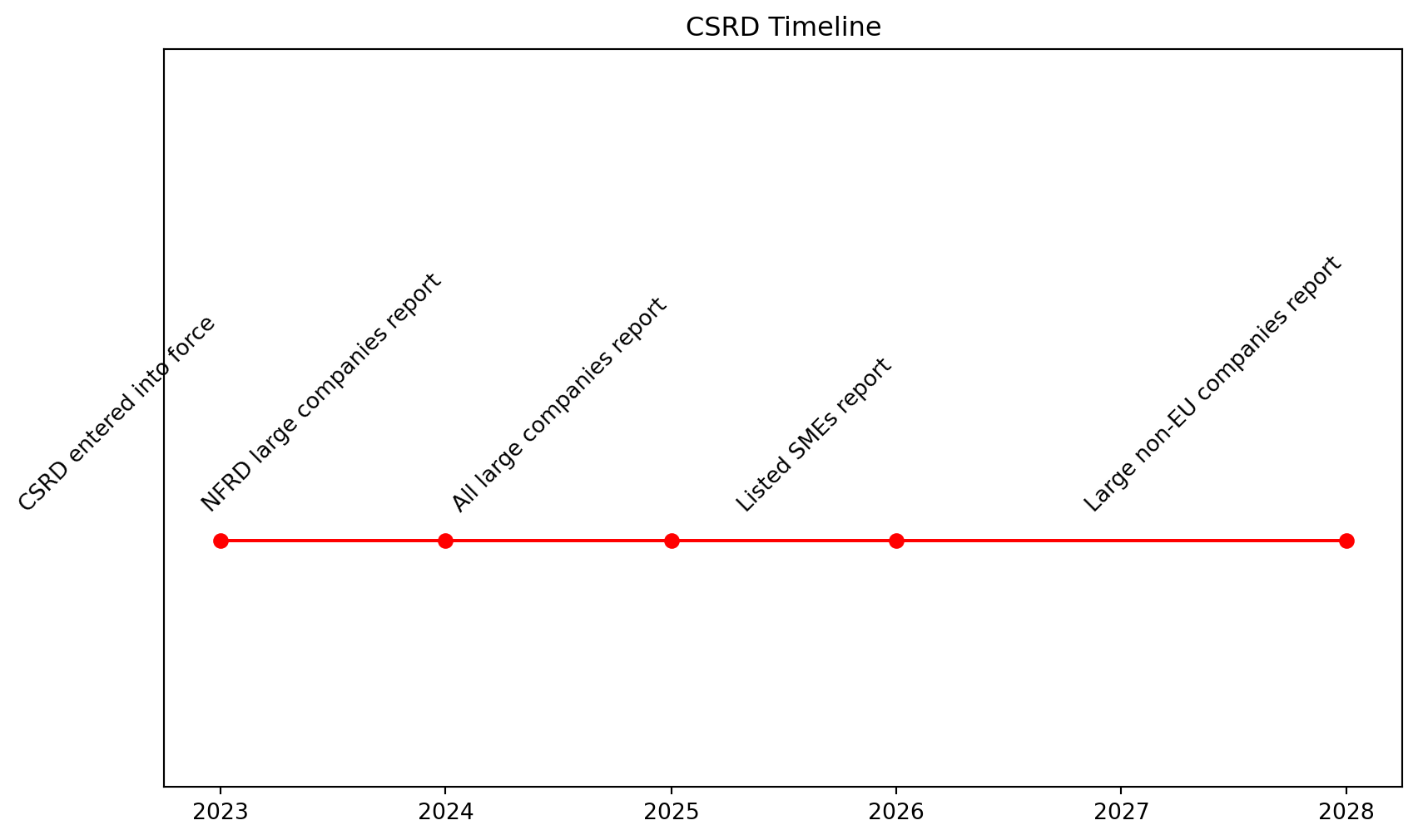
Figure 30: Corporate Sustainability Reporting Directive (CSRD) Timeline
Companies assess customer’s credit score to decide credit-worthiness, however inversely, how can customers rate companies? Indices make comparing companies possible. There are many-many indexes, scoring systems, ratings, certifications, etc. Most sustainable companies. Make a database?
Sustainability indices need transparency and standardization (Bolognesi et al., 2024).
Based on Corporate Knights data (Corporate Knights, 2024)
Energy productivity and carbon productivity are measures of how energy intensive a product is per unit of productivity. There are people working on improving efficiency; for example (J. Luo et al., 2022) suggests using reinforcement learning to reduce energy use in cooling systems.
Energy productivity
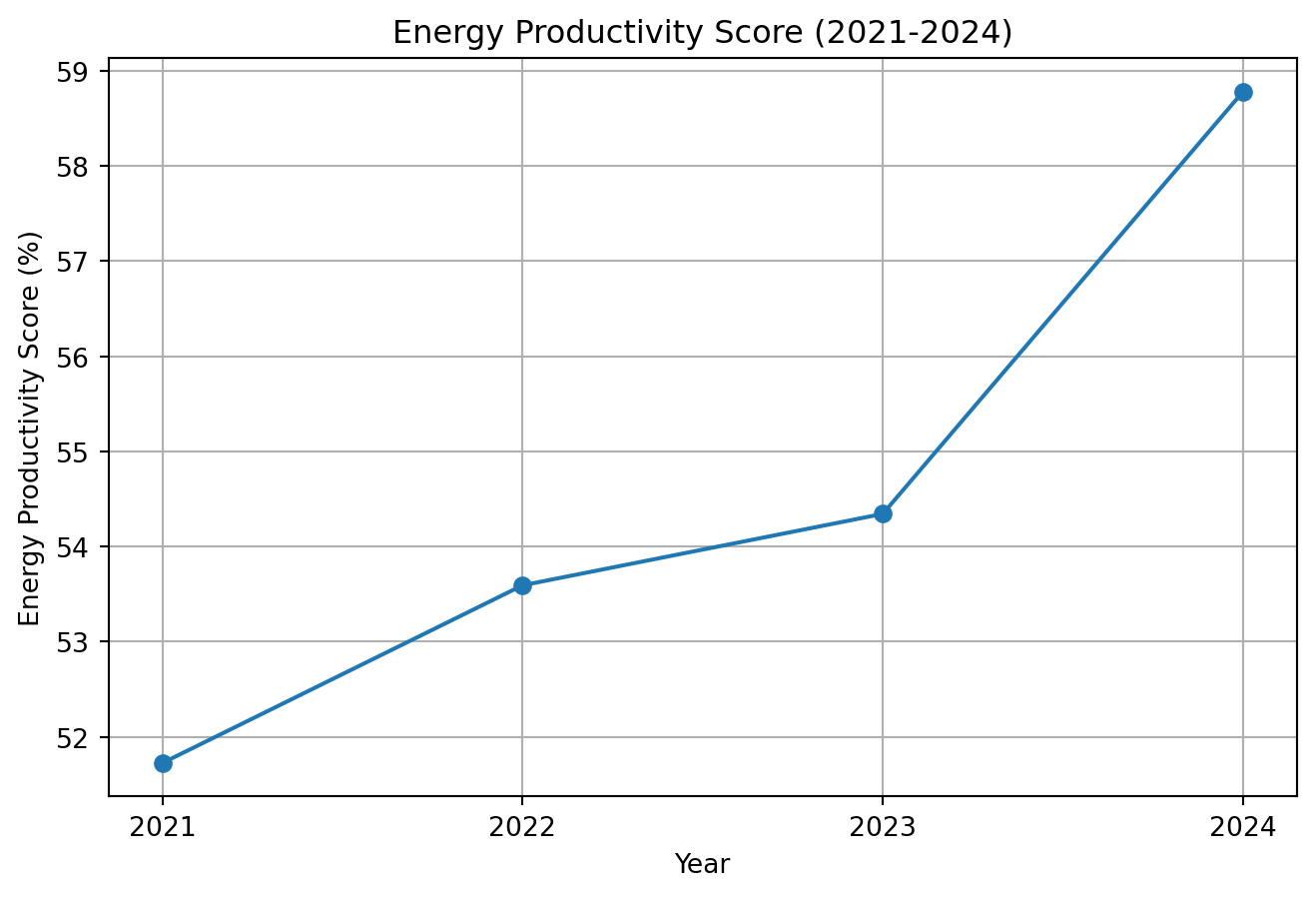
Figure 31: Energy Productivity
Carbon productivity

Figure 32: Carbon Productivity
There are many standards. (International Trade Centre, 2022) currently lists 334 different sustainability standards: “Towards a meaningful economy” “The world’s largest database for sustainability standards”, “We provide free, accessible, comprehensive, verified and transparent information on over 300 standards for environmental protection, worker and labor rights, economic development, quality and food safety, as well as business ethics.”
| Type | Rating System | What It Does? |
|---|---|---|
| Certificate | B Corporation | B Impact Assessment |
| ESG | ||
| Certificate | Fair Trade | |
| Ranking | Responsible Business Index | Responsible Business Index [@EstonianResponsibleBusiness] |
| Index | Greenly | Greenly Decarbonization Index [@greenlyGreenlyIntroducesClimate2023] |
| Science-Based Targets | Science-Based Targets initiative (SBTi) provides step-by-step guidance per economic sector to help companies get started with meeting climate criteria and emission reduction requirements. | |
| Certificate | Green Web Foundation | The Green Web Foundation certifies how sustainable is the web hosting used by websites [@GreenWebFoundation2023]. Also tests website CO2 emissions [@wholegraindigitaHowDoesIt2023]. |
| Leafscore for product | Sustainability rating for products [@leafscoreLeafScoreLeadingOnline2023] | |
| Rating | Ethical Consumer Ratings | Ethical shopping and sustainability criteria [@EthicalConsumerEthical2018] |
| 1% For the Planet | ||
| Standard | Climate Neutral Certified Standard | |
| Standard | The Conservation Alliance | [@climateneutralcertifiedClimateNeutralStandards2023] |
| Index | Impakter Sustainability Index |
There are many different certifications for sustainable brands. Existing rankings include fashion brand ratings and ethical shopping. The Top 100 Consumer Brands report showing brands ranked by consumer sustainability preferences from the largest consumer goods companies (Top 100 Consumer Goods Companies of 2021, n.d.).
The Ethical Consumer Research Association active since 1989 publishes a magazine and keeps an active list of boycotts, which currently (as of May 15, 2025) includes 47 boycott campaigns (About Ethical Consumer Ethical Consumer, 2018; Boycotts List Ethical Consumer, 2018).
| Target | Category | Organizer | Launch |
|---|---|---|---|
| Airbnb | Human Rights | BDS National Committee | 2016 |
| Amazon | Human Rights | BDS National Committee | 2024 |
| Amazon (tax-avoidance) | Tax Avoidance | Ethical Consumer | 2012 |
| AXA | Human Rights | BDS National Committee | 2019 |
| Barclays Bank | Human Rights | Palestine Solidarity Campaign | 2024 |
| Booking.com | Human Rights | BDS National Committee | 2024 |
| Burger King | Human Rights | BDS National Committee | 2024 |
| Chevron | Human Rights | BDS National Committee | 2022 |
| Coca-Cola | Human Rights | Friends of Al-Aqsa | 2014 |
| Coconut milk (from Thailand) | Animal Rights | PETA | 2022 |
| Crufts dog show | Animal Rights | PETA | 2014 |
| Disney / Marvel | Human Rights | BDS National Committee & allies | 2023 |
| Ecover | Animal Testing | Naturewatch Foundation | 2018 |
| eToro | Human Rights | Tech for Palestine | 2024 |
| Expedia | Human Rights | BDS National Committee | 2024 |
| Get Your Guide | Animal Rights | World Animal Protection | 2023 |
| Human Rights | BDS National Committee | 2024 | |
| Groupon | Animal Rights | World Animal Protection | 2023 |
| Hewlett Packard Enterprise (HP) | Human Rights | BDS National Committee | 2012 |
| Israeli dates | Human Rights | American Muslims for Palestine | 2012 |
| Israeli produce in supermarkets | Human Rights | BDS National Committee | 2005 |
| JCB | Human Rights | BDS National Committee | 2024 |
| Kellogg’s | Environment | GMO-Free USA | 2012 |
| L’Oréal | Animal Testing | Naturewatch Foundation | 2000 |
| “Made in China” goods | Human Rights | Friends of Tibet & others | 2020 |
| McDonald’s | Human Rights | BDS National Committee | 2024 |
| Method | Animal Testing | Naturewatch Foundation | 2018 |
| Mitie | Human Rights | Women for Refugee Women | 2023 |
| Nestlé (baby-milk) | Human Rights | Baby Milk Action | 1977 |
| Nestlé (water extraction) | Environment | Lakota People’s Law Project | 2018 |
| Papa John’s | Human Rights | BDS National Committee | 2023 |
| Pizza Hut | Human Rights | BDS National Committee | 2023 |
| Russia (national boycott) | Oppressive Regimes | Government of Ukraine | 2022 |
| Sabra Hummus | Human Rights | BDS National Committee | 2010 |
| Siemens | Human Rights | BDS National Committee | 2022 |
| SodaStream | Human Rights | BDS National Committee | 2012 |
| Starbucks | Habitats & Resources | Lakota People’s Law Project | 2023 |
| Tesco Bank | Human Rights | Palestine Solidarity Campaign | 2024 |
| Texaco | Human Rights | BDS National Committee | 2022 |
| Trip.com | Animal Rights | World Animal Protection | 2023 |
| Tui | Animal Rights | World Animal Protection | 2023 |
| X / Twitter | Human Rights | Stop Toxic Twitter coalition | 2022 |
| Unilever (Russia operations) | Human Rights | B4Ukraine | 2024 |
| Volvo (AB Volvo trucks) | Human Rights | BDS National Committee | 2024 |
| Wendy’s | Workers’ Rights | Coalition of Immokalee Workers | 2005 |
| Wix | Human Rights | Tech for Palestine | 2023 |
| World Wildlife Fund (WWF) | Human Rights | WTF WWF coalition | 2020 |
OpenCorporates attempts to map all the companies around the world - “the largest open database of companies in the world,” - as per their tagline, launched a collaboration with the UNSD (United Nations Statistics Division) and the OECD (Organization for Economic Co-operation and Development) to close the information gap on the 500 largest multinational enterprises (termed MNEs) to tackle the problem (as per their tweet on X, formerly known as Twitter): “Hidden data is a big problem, and it’s limiting our understanding of the world’s largest #Multinational enterprises” (Communications, 2023; opencorporates [@opencorporates], 2024)
WikiRate, started in 2010, is a tool for checking green credentials and “[t]he largest open registry of corporate sustainability data in the world” (Mills et al., 2016; WikiRate, 2023). Transparency is about culture but also mechanisms and tools, which is why WikiRate defines Data Sharing Archetypes (WikiRate, 2021).
| Type | Example |
|---|---|
| Transparency Accountability Advocate | |
| Compliance Data Aggregator | |
| Data Intelligence Hub | |
| Worker Voice Tool | [@caravanstudiosStrengthenYourWorker2022]: “Worker Connect” |
| Traceability tool | trustrace.com |
| Open data platform | |
| Knowledge sharing platform | business-humanrights.org |
At the 2023 Scottish AI Summit, practitioners demoed how AI pipelines can analyze modern slavery statements to flag missing disclosures, suggesting how humans and machines can “scale corporate accountability” like never before (Laureen van Breen et al., 2023). Meanwhile, WikiRate’s Facility Checker uncovers living-wage gaps in real time for advocacy organizations (Wikirate, 2022)
Certified B Corporations undergo a rigorous B Impact Assessment (only those scoring 80 or above can earn the B Corp seal) and adhere to strict sustainability practices, which gives as placement in the B Lab global directory. Stakeholders can explore B Corps by country and industry, complete with verified impact scores and performance details. This digital platform is used by over 150 thousand businesses to manage their ESG performance (B Corp, 2025).
Maintaining that trust matters. In 2017, Etsy lost the certification after failing to convert a public company into a public benefit company for fear of shareholder reaction (Alba, 2017; Silverman, 2017). Instead, Etsy launched a campaign to focus on transparency, called “Made Mistakes”, publicly sharing user-experience errors to build trust (Etsy Made Mistakes, but Its Commitment to Social Responsibility Wasn’t One of Them, 2017).
Citywealth’s “ESG branding with B-Corps” guide shows how companies can leverage their B Corp status—using consistent logo placement, stakeholder storytelling, and transparent impact data to avoid greenwashing and attract impact-focused investors (Citywealth, 2021). (Social Enterprises, B Corps, Benefit Companies, ESG, 2025) explains how the true social and financial value of mission-driven enterprises comes from aligning the documentation with the reality.
Navigating Complexity with Data: Probabilistic Risk-Based Assessment of Sustainability
In order to make a difference in sustainability, with large capital flowing into the environment at scale to deliver climate action, the markets for ecosystem assets would need to scale urgently, starting with carbon credits. BeZero is a startup innovating in the Voluntary Carbon Credit Market (VCM) by providing risk-scoring, a language financial professionals are accustomed to working with in other types of asset classes (BeZero, 2022b; Navigating Net Zero with Co-founder of BeZero Carbon, 2023). The VCM is limited by immature market structures, which means market participants still struggle to price and manage risk properly; BeZero ratings frame carbon credits in a probabilistic, risk-based language familiar to large investors who oversee roughly 200 trillion USD of global assets (BeZero, 2022a).
“The challenge is to make these instruments as recognizable as tradable assets, as measurable as financial securities, and as investable as other asset classes. Efficient financial markets allocate and manage risk based on effective price mechanisms, and this relies on access to credible information.” (BeZero, 2022b)
Founded a few months before BeZero in early 2020, Sylvera tackles the same quality-signal problem in carbon, utilizing a scientific toolkit including analysis of high-resolution satellite imagery, LiDAR point clouds, and machine-learning models to assign granular AAA–D scores that break out carbon efficacy, additionality, permanence, and co-benefits; the company is active world-wide, including opening a regional hub in Singapore and holding an event earlier this year in Taiwan to promote carbon credit accountancy as a pathway to sustainability in collaboration with the Welhunt Group (Sylvera, 2023; Welhunt, 2025).
| Bottleneck in VCM | BeZero | Carbonmark |
|---|---|---|
| Hard to gauge quality and downside risk | Provides probabilistic ratings investors already understand | N/A |
| Fragmented, slow, OTC trading | N/A | Consolidates registries, offers 24 / 7 liquidity and smart-contract settlement |
| Need to move big capital fast | Gives financiers a common risk language | Cuts friction so large orders can clear quickly |
Bottlenecks in Carbon Markets
Sustainability is a complex web of interconnections. To treat nature as commodity is a category mistake: it is impossible to bring back already destroyed biodiversity that took millennia to develop. Humans create hugely complex systems using technology, instead of simply conserving nature. In a sense, climate action as an asset-liability problem, however the assets are non-fungible. They are rare and incredibly valuable.
References
<< Fast fashion >> : << L’ère de l’impunité des grands groupes semble révolue >>. (2023).
Aaron O’Neill. (2023). Global GDP 1985-2028.
Abnett, K. & Abnett, K. (2024). United States asks EU to delay deforestation law, letter shows. Reuters.
About Ethical Consumer Ethical Consumer. (2018).
Acemoglu, D. (2024). The Simple Macroeconomics of AI.
Agnew, H. (2022). RIP ESG? Financial Times.
Aikman, D. (2022). ESG DAO is out of stealth: We’re on a mission to re-think ESG ratings and accelerate ReFi.
Alba, D. (2017). Etsy Needs to Preserve Its Values to Preserve Its Value. WIRED.
Alzoubi, Y. I. & Mishra, A. (2023). Green blockchain – A move towards sustainability. Journal of Cleaner Production, 430, 139541. https://doi.org/10.1016/j.jclepro.2023.139541
Amenc, N., Goltz, F. & Naly, A. (2023). Green Dilution: How ESG Scores Conflict with Climate Investing. Scientific Beta.
Amin, S., Jamasb, T., Llorca, M., Marsiliani, L. & Renström, T. I. (2022). Decarbonisation policies and energy price reforms in Bangladesh. Energy Policy, 170, 113224. https://doi.org/10.1016/j.enpol.2022.113224
AMINA Bank AG. (2023). SEBA Bank rebrands to AMINA Bank and continues to write its success story.
Anand Chandrasekhar & Andreas Gefe. (2021). Why Switzerland matters for the tropical forests.
Andraszewicz, S., Kaszás, D., Zeisberger, S. & Hölscher, C. (2023). The influence of upward social comparison on retail trading behaviour. Scientific Reports, 13(1), 22713. https://doi.org/10.1038/s41598-023-49648-3
André, F. J. & Valenciano-Salazar, J. A. (2022). Voluntary carbon neutral programs. Adoption and firms’ strategies. Journal of Cleaner Production, 135191. https://doi.org/10.1016/j.jclepro.2022.135191
Andrés Engler. (2022). Berkshire Hathaway Invests $1B in Brazilian Digital Bank Nubank, Reduces Mastercard, Visa Positions.
Anielski, M. (2001). Measuring the Sustainability of Nations: The Genuine Progress Indicator System of Sustainable Well Being Accounts.
Anna J. Park. (2023). Naver Pay to expand as comprehensive financial platform beyond simple payment service - The Korea Times.
Anthropocene Fixed Income Institute (AFII). (2022). AFII Aramco replacement.
Anti-ESG Crusade in US Sweeps 15 States With More Laws in Works. (2023).
Armstrong, K. & Staff, A. P. S. (2021). Cultivating Cultures of Sustainability. APS Observer, 34.
As You Sow. (2024a). Fossil Free Funds.
As You Sow. (2024b). Home - Invest Your Values.
Atal, M. R., Riach, K., Smith, C. & McMaster, R. (2024). Adam Smith: His continuing relevance for contemporary management thought. European Management Journal, 42(1), 4–10. https://doi.org/10.1016/j.emj.2024.01.005
Attanasio, O. P. (2015). Frank Ramsey’s a Mathematical Theory of Saving. The Economic Journal, 125(583), 269–294. https://doi.org/10.1111/ecoj.12229
Austin Ryder. (2020). How to Become an Investor Instead of a Consumer.
B Corp. (2025). Find a B Corp.
Baldi, F. & Pandimiglio, A. (2022). The role of ESG scoring and greenwashing risk in explaining the yields of green bonds: A conceptual framework and an econometric analysis. Global Finance Journal, 52, 100711. https://doi.org/10.1016/j.gfj.2022.100711
Ben Martin. (2017). World’s largest wealth fund ditches coal.
BeZero. (2022a). Focus on Ratings.
BeZero. (2022b). Scaling Carbon Markets.
Bindman, P., Mendonca, E. & Mendonca, P. B. and E. (2024). ESG funds funnel millions to meat company linked to deforestation.
Bingler, J. A., Kraus, M. & Leippold, M. (2021). Cheap Talk and Cherry-Picking: What ClimateBert has to say on Corporate Climate Risk Disclosures. SSRN Electronic Journal. https://doi.org/10.2139/ssrn.3796152
Bioy, H. (2025). Global ESG Funds Suffer Outflows in Q1 2025 Amid Intensifying ESG Backlash.
BlackRock. (2022). ESG investing in hedge funds.
Bleys, B. & Whitby, A. (2015). Barriers and opportunities for alternative measures of economic welfare. Ecological Economics, 117, 162–172. https://doi.org/10.1016/j.ecolecon.2015.06.021
Blockchain Companies Team Up To Track ESG Data. (2021).
BlockChannel. (2017). What Is A “DAO”? How Do They Benefit Consumers?
Bolognesi, E., Dreassi, A., Migliavacca, M. & Paltrinieri, A. (2024). Mapping sustainable investing: Exploring ambiguities and consistencies among sustainable indices. Journal of Environmental Management, 367, 122081. https://doi.org/10.1016/j.jenvman.2024.122081
Booth, M. S. (2022). Burning up the carbon sink: How the EU’s forest biomass policy undermines climate mitigation, and how it can be reformed. Partnership for Policy Integrity.
Borrelli, S., Ramasamy, R., Wong, R. & Spiby, H. (2023). Care and support during maternity for mothers affected by modern slavery: A scoping review. International Journal of Nursing Studies Advances, 5, 100139. https://doi.org/10.1016/j.ijnsa.2023.100139
Boycotts List Ethical Consumer. (2018).
Boyd, D. S., Jackson, B., Wardlaw, J., Foody, G. M., Marsh, S. & Bales, K. (2018). Slavery from Space: Demonstrating the role for satellite remote sensing to inform evidence-based action related to UN SDG number 8. ISPRS Journal of Photogrammetry and Remote Sensing, 142, 380–388. https://doi.org/10.1016/j.isprsjprs.2018.02.012
Brady Dale. (2021). Chainlink’s Founder Says DeFi and Oracles Can Help Fight Climate Change.
Break Free From Plastic. (2024). 2023 Global Brand Audit: The Coca-Cola Company is once again the top global plastic polluter Break Free From Plastic.
BrusselsDonut. (2022). Home (EN) - BrusselsDonut.
Bundesministerium für wirtschaftliche Zusammenarbeit und Entwicklung. (2023). Lieferkettengesetz.
Bunq. (2020). Bunq.
Caio Jobim. (2022). ’Bitcoin falhou e criptomoedas vão acabar’, diz autor de best-seller sobre futuro do dinheiro.
Caldarelli, G., Rossignoli, C. & Zardini, A. (2020). Overcoming the Blockchain Oracle Problem in the Traceability of Non-Fungible Products. Sustainability, 12(6), 2391. https://doi.org/10.3390/su12062391
Capgemini. (2022). A World in Balance – Why sustainability ambition is not translating to action.
CarbonChain. (n.d.). CarbonChain Summer 2024 Product Release.
Carra Wu & Chris Dixon. (2021). Investing in Friends With Benefits (a DAO).
Catanoso, J. (2024). Enviva bankruptcy fallout ripples through biomass industry, U.S. And EU.
Celo and Regenerative Finance - Climate and ReFi. (2021).
Central Bank Digital Currency (CBDC) Tracker. (2023).
CEPR. (2022). A fair, sustainable, and prosperous Europe needs proper navigation tools.
Chainlink. (2022). New Report: Blockchains and Oracles Are Redefining the Energy Industry.
Chant, T. D. (2022). Personal carbon-cutting app Joro raises $10M Series A from Sequoia, Jay-Z’s Arrive.
Chinese billionaire Jack Ma sees AI future for Ant Group, in rare appearance. (2024). Reuters.
Christ, K. L. & V Helliar, C. (2021). Blockchain technology and modern slavery: Reducing deceptive recruitment in migrant worker populations. Journal of Business Research, 131, 112–120. https://doi.org/10.1016/j.jbusres.2021.03.065
Christodoulou, P., Psillaki, M., Sklias, G. & Chatzichristofis, S. A. (2023). A blockchain-based framework for effective monitoring of EU Green Bonds. Finance Research Letters, 58, 104397. https://doi.org/10.1016/j.frl.2023.104397
Circle Economy. (2021). Keynote: Ilektra Kouloumpi at the Second Utrecht Degrowth Symposium.
City of Malmö. (2017). Green Bond Framework.
Citywealth. (2021). ESG branding with B-Corps?
Clifford, C. (2022). How this popular Jeff Bezos quote drives Amazon’s climate goals.
Climate Action 100+. (2023). Companies.
Climate Bonds. (2023). Climate Bonds Interactive Data Platform.
Climate Bonds Initiative calls for greening of $55trn short-term debt market. (2022).
CME Group. (2025). E-mini S&P 500 ESG Index Futures Contract Specs.
CO2-neutral factories. (n.d.).
Colombo, J. A. & Yarovaya, L. (2024). Are crypto and non-crypto investors alike? Evidence from a comprehensive survey in Brazil. Technology in Society, 76, 102468. https://doi.org/10.1016/j.techsoc.2024.102468
Communications, O. (2023). UNSD & OECD use OpenCorporates’ data to help the world understand multinational enterprises.
Confino, J. (2015). Beyond capitalism and socialism: Could a new economic approach save the planet? The Guardian.
Contactless payments prevalent in Macau - City’s de facto central bank. (2023).
Corporate Knights. (2024). Global 100. Corporate Knights.
Costa, C. D. (2018). How Finnish Culture Can Teach You To Design Your Life.
Crabb, J. (2023). A rant about terrible personas.
Daly, H. E. (1997). Beyond growth: The economics of sustainable development (Nachdr.). Beacon Press.
Darwyne, A. (2025). Utilities, K-pop and dividend funds resilient amid global market rout.
Datakick: The Open Product Database. (n.d.).
David Attlee. (2022). Buying crypto with credit cards is now indirectly banned in Taiwan.
David Suzuki Foundation. (2021). Well-being economies.
De Balie. (2018). Kate Raworth: Creating a 21st century economy - Doughnut Economics.
Debnath, R., Bardhan, R., Shah, D. U., Mohaddes, K., Ramage, M. H., Alvarez, R. M. & Sovacool, B. K. (2022). Social media enables people-centric climate action in the hard-to-decarbonise building sector. Scientific Reports, 12(1), 19017. https://doi.org/10.1038/s41598-022-23624-9
Decker Sparks, J. L., Boyd, D. S., Jackson, B., Ives, C. D. & Bales, K. (2021). Growing evidence of the interconnections between modern slavery, environmental degradation, and climate change. One Earth (Cambridge, Mass.), 4(2), 181–191. https://doi.org/10.1016/j.oneear.2021.01.015
dessler2. (2024). Climate economics with Noah Kaufman.
Deutsche Börse Group. (2025). ESG Index Derivatives.
Devlin, A. & Yang, A. (2022). Regional supply chains for decarbonising steel: Energy efficiency and green premium mitigation. Energy Conversion and Management, 254, 115268. https://doi.org/10.1016/j.enconman.2022.115268
dGen & PositiveBlockchain. (2021). Blockchain & the SDGs: How Decentralisation Can Make a Difference.
Dicuonzo, G., Palmaccio, M. & Shini, M. (2024). ESG, governance variables and Fintech: An empirical analysis. Research in International Business and Finance, 69, 102205. https://doi.org/10.1016/j.ribaf.2023.102205
Diduch, M. (2020). Is Economic Growth the Wrong Goal?
Digital receipts and customer loyalty in one platform ReceiptHero. (n.d.).
Diver, K. (2025). The Clear-Cut Truth Behind the Biomass Industry in the U.S. Southeast.
Drupp, M. A., Baumgärtner, S., Meyer, M., Quaas, M. F. & Von Wehrden, H. (2020). Between Ostrom and Nordhaus: The research landscape of sustainability economics. Ecological Economics, 172, 106620. https://doi.org/10.1016/j.ecolecon.2020.106620
dub. (2025). Copy Trade Anyone on the App Store.
Earth Day. (2023). Earth Day 2023.
Ellsmoor, J. (2019). New Zealand Ditches GDP For Happiness And Wellbeing.
EMarketer. (2021). Almost 75% of BNPL users in the US are Gen Z or millennials.
Emele Onu & Anthony Osae-Brown. (2022). Nigeria Caps ATM Cash Withdrawals at $45 Daily to Push Digital Payments. Bloomberg.
Empowering Digital Asset Banking. (n.d.).
Eric fogg. (2020). What is Lights Out Manufacturing? Exploring Full Automation.
ESG hedge funds Barclays Corporate & Investment Bank. (2021).
ESG 浪潮反思:一間減碳表現優異、但產品有害健康的企業,符合 ESG 精神嗎?. (2022).
Ethical Savings: Everything You Need To Know Bloom Money. (2023).
Etsy made mistakes, but its commitment to social responsibility wasn’t one of them. (2017).
Euronext. (2020). Euronext launches suite of ESG products and services to empower sustainable growth.
European Central Bank. (2019). Lending and payment systems in upheaval: The fintech challenge.
European Commission. (2019). EU labels for benchmarks (climate, ESG) and benchmarks’ ESG disclosures - European Commission.
European Commission. (2024). Application of EUDR Regulation on deforestation-free products delayed until December 2025.
European Parliament. (2014). Directive 2014/65/EU: Vols. OJ L (No. 32014L0065).
European Parliament. (2023). Regulation (EU) 2023/1115 of the European Parliament and of the Council of 31 May 2023 on the making available on the Union market and the export from the Union of certain commodities and products associated with deforestation and forest degradation and repealing Regulation (EU) No 995/2010 (Text with EEA relevance).
European Securities and Markets Authority. (2017). MiFID II.
Fanning, A. L., O’Neill, D. W., Hickel, J. & Roux, N. (2021). The social shortfall and ecological overshoot of nations. Nature Sustainability, 5(1), 26–36. https://doi.org/10.1038/s41893-021-00799-z
FFC - Fair Factories ClearingHouse - Compliance Solutions. (n.d.).
Financial Materiality Marks Next Big ESG Investing Battle. (2023).
FINMA, E. F. (2021). Approval of first Swiss crypto fund.
First paper money. (n.d.).
Foley, A. M., Heffron, R. J., Al Kez, D., Furszyfer Del Rio, D. D., McInerney, C. & Welfle, A. (2024). Restoring trust in ESG investing through the adoption of just transition ethics. Renewable and Sustainable Energy Reviews, 199, 114557. https://doi.org/10.1016/j.rser.2024.114557
Forrester. (2024). Forrester: Global Online Retail Sales To Grow 8.9% Annually, Reaching $6.8 Trillion In 2028.
Fotheringham, N. (2017). How To Create A Greener Investment Portfolio.
Frances Schwartzkopff. (2022a). EU Explores Tighter Rules for ESG Funds Amid Greenwash Concerns.
Frances Schwartzkopff. (2022b). Firms Aren’t Reporting Financial Risks of Carbon Emissions, Study Finds - Bloomberg.
Frédéric Simon. (2020). Commission under fire for including “carbon sinks” into EU climate goals.
Fuentes, C., Enarsson, P. & Kristoffersson, L. (2019). Unpacking package free shopping: Alternative retailing and the reinvention of the practice of shopping. Journal of Retailing and Consumer Services, 50, 258–265. https://doi.org/10.1016/j.jretconser.2019.05.016
Fuller, R. B. (1983). Grunch of giants (1st ed). St. Martin’s Press.
GABV. (2023). Triodos Bank UK: Support for nature-based investment projects.
Ganu, J. B. and S., Dominic Okus. (2021). Why Blockchain Can Both Promote ESG And Accelerate Climate Transition.
Gemeente Amsterdam. (2022). The Circular Economy Monitor: An Outline Website Onderzoek en Statistiek.
Gemma Woodward. (2022). Good riddance ESG? 8 key problems that must be fixed.
Geoffrey Supran. (2022). Three Shades of Green (washing). Algorithmic Transparency Institute.
George Geddes. (2019). S&P Global acquires RobecoSAM’s ESG rating business.
Giacalone, M., Mattera, R. & Nissi, E. (2022). Well-being analysis of Italian provinces with spatial principal components. Socio-Economic Planning Sciences, 84, 101377. https://doi.org/10.1016/j.seps.2022.101377
Global Carbon Budget. (2023). Cumulative CO$_2$ emissions.
Google. (2025). Google Payments Privacy Notice.
Grauer, P. (2017). Taiwan leading the way in ESG disclosure. Bloomberg L.P.
Green Central Banking. (n.d.).
Green Finance Institute. (2023).
Green Finance Platform. (2020). Green Fintech Trends for 2020 – What’s to Come?
Greens EFA. (2023). Nature vote a success for people, planet & responsible politics.
GreensEFA. (2023). #BeyondGrowth - Changing the goal: From GDP growth to social prosperity.
GS1. (n.d.). EAN/UPC barcodes.
Guidotti, T. L. (2015). Health and sustainability: An introduction. Oxford University Press.
Gupta, A. H. (2020). An “Electrifying” Economist’s Guide to the Recovery. The New York Times.
Gurung, M., expertise:, Financial Journalism, currently:, Financial Journalist and Content Contributor at Investing.com, education:, B.Tech Jaypee University of Engineering and Technology, linkedin logo, See Full Bio. (2025). Piotroski Score: Definition, Calculation, Importance & Limitations.
Håkon Bogen. (2016). Is there a global database of all products with EAN 13 barcodes?
Hall, I. (2024). HK breaks new ground with multi-currency digital green bonds issuance.
Handa, K., Tamkin, A., McCain, M., Huang, S., Durmus, E., Heck, S., Mueller, J., Hong, J., Ritchie, S., Belonax, T., Troy, K. K., Amodei, D., Kaplan, J., Clark, J. & Ganguli, D. (2025). Which Economic Tasks are Performed with AI? Evidence from Millions of Claude Conversations. arXiv. https://doi.org/10.48550/ARXIV.2503.04761
Hans van Leeuwen. (2023). Modern slavery: Grace Forrest’s Walk Free launches Global Slavery Index.
Harding, E. P. (2019). ESG futures catching on in Europe FIA.
harrisson, thomas. (2019). Analysis: Why the UK’s CO2 emissions have fallen 38% since 1990.
Hausfather, Z. & Peters, G. P. (2020). Emissions – the “business as usual” story is misleading. Nature, 577(7792), 618–620. https://doi.org/10.1038/d41586-020-00177-3
Hedge. (2023). Hedge - Make a hedge fund with your friends.
Helbling, T. (2012). Externalities: Prices Do Not Capture All Costs. IMF.
Hern, A. (2024). TechScape: What we learned from the global AI summit in South Korea. The Guardian.
Hester M. Peirce. (2022). SEC.gov Statement on Settlement with BlockFi Lending LLC.
HM Treasury. (2020). Chancellor sets out ambition for future of UK financial services.
Ho, S. (2019). Asian Investors Are Increasingly Looking To Do Good But ’Impact Washing’ Remains A Concern.
Hoikkala, H. (2019). H&M CEO Sees “Terrible” Fallout as Consumer Shaming Spreads.
Holger, D. (2019). Norway’s Sovereign-Wealth Fund Boosts Renewable Energy, Divests Fossil Fuels. Wall Street Journal.
Horwitz, S. (2017). There’s a Hole in the Middle of Doughnut Economics Steven Horwitz.
House of Commons. (2002). Environmental Audit - Second Report.
Hyde, L. (2006). The gift: How the creative spirit transforms the world. Canongate.
Ian Bezek. (2021). It’s Time Everyone Knows What DAOs Are. They May Disrupt Exchanges and Corporations.
IBISA Network – Enabling the Next Generation of Insurance for Agriculture. (n.d.).
Igini, M. (2024). The Environmental Impact of Online Shopping.
IMF. (2023). World Economic Outlook (April 2023) - GDP growth. International Monetary Fund.
Indices, S. D. J. (Oct 03, 2016, 08:30 ET). S&P Dow Jones Indices Acquires Trucost.
Indrek Kald. (2022). Eesti IT-firma automatiseeris Flowiti ja PwC toel süsiniku jalajälje kaardistamise. Sääst 90% - ITuudised.
Innocent opens £200m carbon-neutral factory in Rotterdam - Investment Monitor. (n.d.).
Institute for Climate and Sustainable Growth. (2022). The Air Quality Life Index (AQLI). The University of Chicago.
Institute of International and European Affairs (IIEA). (2023). Can the World Still Exit the Climate Casino?
Intercontinental Exchange. (2025). ICE MSCI Climate & ESG Index Derivatives.
International Labour Organization. (2024). Profits and poverty: The economics of forced labour.
International Trade Centre. (2022). StandardsMap.
Investing.com. (2024). Carbon Emissions Futures Price Today.
Investment Clubs and Collectives Deprecation FAQ. (n.d.).
Irene Zhao. (2022). Here’s why @0xIreneDao is not a fluke or as some may have it, an Asian Fetish. They are missing the real deal. Something bigger underlies the concept that is behind the IreneDao. 👇🏻🧵 Here’s the story:
Jackson, T. (2009). Prosperity without growth: Economics for a finite planet. Earthscan.
Jackson, T. (2017). Prosperity without growth: Foundations for the economy of tomorrow (Second Edition). Routledge, Taylor & Francis Group.
James Phillipps. (2022). Is ESG in crisis or just misunderstood?
Jeff Benson. (2022). China Releases Digital Yuan Wallet as Bitcoin Crackdown Continues.
Jia, W., Wang, W. & Zhang, Z. (2023). From simple digital twin to complex digital twin part II: Multi-scenario applications of digital twin shop floor. Advanced Engineering Informatics, 56, 101915. https://doi.org/10.1016/j.aei.2023.101915
Jim Boehm, Jan Shelly Brown, Lama Sabbagh & Karim Thomas. (2021). Better risk controls to accelerate digital transformation.
John Fullerton. (2011). John Fullerton: When Growth Bumps Into the Biosphere.
John Fullerton. (2022). Regenerative Business Part 1 John Fullerton at Planetiers World Gathering 2022.
John Ssenkeezi. (2022). I’ve been invited to vote at @Apple’s 2022 Annual Meeting as a shareholder. Yes, you read that right! You can own shares in any company listed on @NYSE from as little as $1 with @chippercashapp. https://t.co/dNr8UPb7ND.
Johnson, S. (2025). ESG fund outflows hit record as sustainable investing backlash grows. Financial Times.
Jones, A. & Steffen, W. (2019). Our climate is like reckless banking before the crash – it’s time to talk about near-Term collapse.
Jordan G. Teicher. (2021). Doughnut Economics Has a Hole at Its Core.
Käärmann, K. (2018). Why does TransferWise have fees?
Kamei, M., Wangmo, T., Leibowicz, B. D. & Nishioka, S. (2021). Urbanization, carbon neutrality, and Gross National Happiness: Sustainable development pathways for Bhutan. Cities (London, England), 111, 102972. https://doi.org/10.1016/j.cities.2020.102972
Kemp, L., Xu, C., Depledge, J., Ebi, K. L., Gibbins, G., Kohler, T. A., Rockström, J., Scheffer, M., Schellnhuber, H. J., Steffen, W. & Lenton, T. M. (2022). Climate Endgame: Exploring catastrophic climate change scenarios. Proceedings of the National Academy of Sciences, 119(34), e2108146119. https://doi.org/10.1073/pnas.2108146119
Kenton, W. (2020). MiFID II.
Kenton, W. (2023). What Is a Layaway Plan? History, and Which Companies Offer Them.
Ketcham, C. (2023). When Idiot Savants Do Climate Economics.
Keyßer, L. T. & Lenzen, M. (2021). 1.5 $^\circ$C degrowth scenarios suggest the need for new mitigation pathways. Nature Communications, 12(1), 2676. https://doi.org/10.1038/s41467-021-22884-9
Kickstart your investment journey. (2023).
Kira Taylor. (2021). EU plan puts spotlight on carbon sinks to tackle climate change.
Kirakosian, M. (Noveber 16, 2020). LOIM launches circular bioeconomy fund inspired by Prince of Wales.
Kitano, Y. (2024). Hong Kong Harnesses Blockchain in Green Finance Push.
KlimaDAO. (2023).
Klinglmayr, J., Bergmair, B. & Pournaras, E. (2016). Sustainable Consumerism via Self-Regulation. 2016 IEEE 1st International Workshops on Foundations and Applications of Self* Systems (FAS*W), 138–142. https://doi.org/10.1109/FAS-W.2016.40
Konrad, A. (n.d.). A16z Crypto Leads $14 Million Bet On Rye, New Web3 Commerce Startup From Justin Kan.
Korosec, K. (2021). Amazon taps $2B climate fund to invest in three more startups.
Kovacic, Z. & Giampietro, M. (2015). Beyond “beyond GDP indicators:” The need for reflexivity in science for governance. Ecological Complexity, 21, 53–61. https://doi.org/10.1016/j.ecocom.2014.11.007
KraneShares. (2020). Ant Group 101.
Kunz, N., Chesney, T., Trautrims, A. & Gold, S. (2023). Adoption and transferability of joint interventions to fight modern slavery in food supply chains. International Journal of Production Economics, 258, 108809. https://doi.org/10.1016/j.ijpe.2023.108809
Kyle Wiggers. (2022). Makersite lands $18M to help companies manage product supply chains.
Lagerkvist, C. J., Edenbrandt, A. K., Tibbelin, I. & Wahlstedt, Y. (2020). Preferences for sustainable and responsible equity funds - A choice experiment with Swedish private investors. Journal of Behavioral and Experimental Finance, 28, 100406. https://doi.org/10.1016/j.jbef.2020.100406
Langton, J. (2025). ICI wants more retail access to private markets. Investment Executive.
Laureen van Breen, Aileen Robinson, Abigail Munroe & Adriana Bora. (2023). Panel: Scaling Corporate Accountability: Humans and AI together in the fight to #EndSlavery.
Laxton, D., DLaxton@imf.org, Mursula, S., SMursula@imf.org, Kumhof, M., MKumhof@imf.org, Muir, D. & DMuir@imf.org. (2010). The Global Integrated Monetary and Fiscal Model (GIMF) Ï$\frac12$ Theoretical Structure: Theoretical Structure. IMF Working Papers, 10(34), 1. https://doi.org/10.5089/9781451962734.001
LHV. (2020). Microinvestment with Growth Account.
LHV. (2024). “Buy now, pay later” option more popular than ever before $\cdot$ LHV.
Li, M., Li, N., Khan, M. A., Khaliq, N. & Rehman, F. U. (2022). Can retail investors induce corporate green innovation? -Evidence from Baidu Search Index. Heliyon, 8(6), e09663. https://doi.org/10.1016/j.heliyon.2022.e09663
Li, Q., Zhang, K. & Wang, L. (2022). Where’s the green bond premium? Evidence from China. Finance Research Letters, 48, 102950. https://doi.org/10.1016/j.frl.2022.102950
Liebreich, M. (2025). Are Big Investors Abandoning Climate Progress? Ep195: David Blood (No. 195).
LINE Corporation. (2019). [Japan] Investment Made Easy— LINE Securities, a New Mobile Investment Service, Launches Today LINE Corporation News.
Lingeswaran, S. (2019). Levelling up: Shattering myths about philanthropy in Asia.
Liu, S., House, J. & Kádár, D. Z. (2024). Bargaining in Chinese livestream sales events. Discourse, Context & Media, 60, 100787. https://doi.org/10.1016/j.dcm.2024.100787
lizlivingblue. (n.d.). It’s so important we support companies making a positive IMPACT in the #impactinvesting 💚💸 #investwithIMPACT #sustainabilitytok.
Loyst, M. (2024). TikTok and the live shopping revolution.
LSEG. (2025). MarketPsych Analytics.
Lu, Z. & Li, H. (2023). Does environmental information disclosure affect green innovation? Economic Analysis and Policy, 80, 47–59. https://doi.org/10.1016/j.eap.2023.07.011
Lucas Matney. (2022). VC-backed DAO startups are racing to define what DAOs actually are TechCrunch.
Luo, D. (2022). ESG, liquidity, and stock returns. Journal of International Financial Markets, Institutions and Money, 78, 101526. https://doi.org/10.1016/j.intfin.2022.101526
Luo, J., Paduraru, C., Voicu, O., Chervonyi, Y., Munns, S., Li, J., Qian, C., Dutta, P., Davis, J. Q., Wu, N., Yang, X., Chang, C.-M., Li, T., Rose, R., Fan, M., Nakhost, H., Liu, T., Kirkman, B., Altamura, F., … Mankowitz, D. J. (2022). Controlling Commercial Cooling Systems Using Reinforcement Learning. https://doi.org/10.48550/ARXIV.2211.07357
Luz, V., Schauer, V. & Viehweger, M. (2024). Beyond preferences: Beliefs in sustainable investing. Journal of Economic Behavior & Organization, 220, 584–607. https://doi.org/10.1016/j.jebo.2024.02.018
MacAskill, S., Roca, E., Liu, B., Stewart, R. A. & Sahin, O. (2021). Is there a green premium in the green bond market? Systematic literature review revealing premium determinants. Journal of Cleaner Production, 280, 124491. https://doi.org/10.1016/j.jclepro.2020.124491
Maccioni, F. (2025). Abu Dhabi sovereign wealth fund Mubadala’s assets jump 9% in 2024 Reuters.
Mai, N., Vourvachis, P. & Grubnic, S. (2023). The impact of the UK’s Modern Slavery Act (2015) on the disclosure of FTSE 100 companies. The British Accounting Review, 55(3), 101115. https://doi.org/10.1016/j.bar.2022.101115
Makersite. (n.d.). Improve Your Product Sustainability With Makersite.
Mapping the Gap: The Road from Paris. (2016).
Marc Germain. (2016). A simple degrowth model (No. 2016.21). FAERE - French Association of Environmental and Resource Economists.
Margaryta Kirakosian & Angus Foote. (2022). “Methodologies are all over the place”: Banks name sectors lacking ESG funds.
MARISA ADÁN GIL. (2022). "As criptomoedas vão acabar - e o dinheiro físico também", diz autor de best-seller - Época Negócios Futuro do Dinheiro.
Marquis, C. (2021). RSF Is Leading The Way In Moving From Impact Investing To Regenerative Finance.
Marshall, A. (1997). Principles of economics. Prometheus Books.
Marten Põllumees. (2022). Kuhu investeeriti LHV Kasvukontoga IV kvartalis 2021? - Kasvukonto - Uudised - LHV finantsportaal.
Martiny, A., Taglialatela, J., Testa, F. & Iraldo, F. (2024). Determinants of environmental social and governance (ESG) performance: A systematic literature review. Journal of Cleaner Production, 456, 142213. https://doi.org/10.1016/j.jclepro.2024.142213
Mastercard. (2021). Mastercard Unveils New Carbon Calculator Tool for Banks Globally, as Consumer Passion for the Environment Grows.
Masterworks. (2023). How It Works.
Matos, G. (2024). Aave Labs unveils plan to stabilize GHO with BlackRock’s BUIDL shares.
Mazzocchi, C., Orsi, L., Zilia, F., Costantini, M. & Bacenetti, J. (2022). Consumer awareness of sustainable supply chains: A choice experiment on Parma ham PDO. Science of The Total Environment, 836, 155602. https://doi.org/10.1016/j.scitotenv.2022.155602
Mazzucato, M. (2018). The value of everything: Making and taking in the global economy. Allen Lane, an imprint of Penguin Books.
McKinsey. (2020). The next frontier in Asia payments.
Meadows, D. H. & Club of Rome (Eds.). (1972). The Limits to growth: A report for the Club of Rome’s project on the predicament of mankind. Universe Books.
Meet the fintechs leading Sweden’s green revolution. (2021).
Mike Hower. (Dec 9, 2015 7am EST). Trucost and TruValue Labs Partner to Provide Enhanced ESG Data for Investors.
Millard, R. (2025). Drax “misled government” over sourcing of wood for biomass, says ex-lobbyist. Financial Times.
Mills, R., De Paoli, S., Diplaris, S., Gkatziaki, V., Papadopoulos, S., Prasad, S. R., McCutchen, E., Kapadia, V. & Hirche, P. (2016). WikiRate.org – Leveraging Collective Awareness to Understand Companies’ Environmental, Social and Governance Performance. In F. Bagnoli, A. Satsiou, I. Stavrakakis, P. Nesi, G. Pacini, Y. Welp, T. Tiropanis & D. DiFranzo (Eds.), Internet Science (Vol. 9934, pp. 74–88). Springer International Publishing. https://doi.org/10.1007/978-3-319-45982-0_7
Milmo, D. (2024). French AI summit to focus on environmental impact of energy-hungry tech. The Guardian.
Milne, G. R., Villarroel Ordenes, F. & Kaplan, B. (2020). Mindful Consumption: Three Consumer Segment Views. Australasian Marketing Journal, 28(1), 3–10. https://doi.org/10.1016/j.ausmj.2019.09.003
Ministerie van Infrastructuur en Waterstaat. (2019). Circular Dutch economy by 2050 - Circular economy - Government.nl. Ministerie van Algemene Zaken.
Mitchell, J. (2025). A Sustainable FutureHortense Bioy, Morningstar Head of Research, on Sustainable Investing Under Trump 2.0 Man Group.
Mobilizing Capital Into Emerging Markets and Developing Economies. (2022).
Møller, B. & Tang, E. (2024). Energy within planetary boundaries - Green Transition Denmark.
Morgan Stanley. (2019). Sustainable Signals: Individual Investor Interest Driven by Impact, Conviction and Choice.
Morone, P., Caferra, R., D’Adamo, I., Falcone, P. M., Imbert, E. & Morone, A. (2021). Consumer willingness to pay for bio-based products: Do certifications matter? International Journal of Production Economics, 240, 108248. https://doi.org/10.1016/j.ijpe.2021.108248
Myclimate – your partner for climate protection. (2023).
Naito, H., Ismailov, A. & Kimaro, A. B. (2021). The effect of mobile money on borrowing and saving: Evidence from Tanzania. World Development Perspectives, 23, 100342. https://doi.org/10.1016/j.wdp.2021.100342
Napper, I. E. & Thompson, R. C. (2019). Environmental Deterioration of Biodegradable, Oxo-biodegradable, Compostable, and Conventional Plastic Carrier Bags in the Sea, Soil, and Open-Air Over a 3-Year Period. Environmental Science & Technology, 53(9), 4775–4783. https://doi.org/10.1021/acs.est.8b06984
Nastaraan Vadoodi. (2022). Ecodesign requirements to drive sustainable product development.
Nathan Reiff. (2023). Decentralized Autonomous Organization (DAO): Definition, Purpose, and Example.
naturalinvest. (2020). Malaika Maphalala - Natural Investments.
Navigating Net Zero with Co-founder of BeZero Carbon,. (2023).
Neuron, T. (2025). 😺Get ready for your AI shopping spree...
Next Generation Customer Experience. (n.d.). Acorns Targets Millennials With Shopping as Investing.
NGFS. (2023). NGFS.
Noor, D. (2023). Big oil quietly walks back on climate pledges as global heat records tumble. The Guardian.
Nordhaus, W. D. (2013). The climate casino: Risk, uncertainty, and economics for a warming world. Yale University Press.
Normative. (2025). Corporate Sustainability Reporting Directive (CSRD), explained.
Novotny, T. (2025). Human Rights Due Diligence (HRDD) in your Supply Chain.
OECD. (2024). OECD Economic Outlook, Volume 2024 Issue 1: Preliminary version. OECD. https://doi.org/10.1787/69a0c310-en
Oelkers, K. (2020). The accessibility of data on environmental risk assessment of pharmaceuticals – are environmental risk assessments information on emissions with respect to international and European environmental information law? Regulatory Toxicology and Pharmacology, 111, 104571. https://doi.org/10.1016/j.yrtph.2019.104571
Oikos Denktank. (2021). Webinar: Doughnut Economics in practice w/ Kate Raworth, Barbara Trachte & Marieke Van Doorninck.
Oliveira De Mendonça, G., Coelho Rocha, A. R. & Bogéa Da Costa Tayt-son, D. (2021). The minimalist process: An interpretivist study. Journal of Consumer Behaviour, 20(5), 1040–1050. https://doi.org/10.1002/cb.1912
Open Product Data. (n.d.).
opencorporates [@opencorporates]. (2024). Hidden data is a big problem, and it’s limiting our understanding of the world’s largest #Multinational enterprises. The #UNSD and the @OECD have created the MNE Information Platform to shine a light on this, with help from @opencorporates data 👉 https://blog.opencorporates.com/2023/03/14/unsd-oecd-use-opencorporates-data-to-help-the-world-understand-multinational-enterprises/ https://t.co/PWPfQRIVso.
OpenSea. (2022). Top Taiwan Influencers - Collection.
Oyedokun, T. B. (2017). Green premium as a driver of green-labelled commercial buildings in the developing countries: Lessons from the UK and US. International Journal of Sustainable Built Environment, 6(2). https://doi.org/10.1016/j.ijsbe.2017.12.007
Packaging World. (n.d.).
Panaro, P., Parlow, S. & Amman, F. (2024). How can pairing #AI with #digitaltwin technology help cut building #emissions?
Pandya, V. (2025). Adobe Analytics: Traffic to U.S. Retail Websites from Generative AI Sources Jumps 1,200 Percent Adobe Blog.
Panzarino, M. (2020). Crypto-driven marketplace Zora raises $2M to build a sustainable creator economy.
Papaioannou, M. G. & Rentsendorj, B. (2015). Sovereign Wealth Fund Asset Allocations—Some Stylized Facts on the Norway Pension Fund Global. Procedia Economics and Finance, 29, 195–199. https://doi.org/10.1016/S2212-5671(15)01122-3
Parlasca, M. C., Johnen, C. & Qaim, M. (2022). Use of mobile financial services among farmers in Africa: Insights from Kenya. Global Food Security, 32, 100590. https://doi.org/10.1016/j.gfs.2021.100590
Parrish, B. (2025). An Overview of the Updated EUDR Guidance: Implications for Wood Exports.
Pastore, M. (2025). More consumers using genAI tools to research purchases: Adobe.
Paul, T. (2024). Douugh, a fintech budgeting app, launches a new robo-advisor feature.
Peng, S., Prentice, C., Shams, S. & Sarker, T. (2024). A systematic literature review on the determinants of cryptocurrency pricing. China Accounting and Finance Review, 26(1), 1–30. https://doi.org/10.1108/CAFR-05-2023-0053
Peng, W. & Xiong, L. (2022). Managing financing costs and fostering green transition: The role of green financial policy in China. Economic Analysis and Policy, 76, 820–836. https://doi.org/10.1016/j.eap.2022.09.014
PIETRO CECERE. (2023). “It’s a total mess”: Fund selectors don’t hold back on ESG labelling.
Pigou, A. C. (2002). The economics of welfare. Transaction Pub.
Planet of the Klimates - Luis Adaime - Founder & CEO of MOSS.Earth. (n.d.).
Plantinga, A. & Scholtens, B. (2024). The finance perspective on fossil fuel divestment. Current Opinion in Environmental Sustainability, 66, 101394. https://doi.org/10.1016/j.cosust.2023.101394
Popescu, I.-S., Gibon, T., Hitaj, C., Rubin, M. & Benetto, E. (2023). Are SRI funds financing carbon emissions? An input-output life cycle assessment of investment funds. Ecological Economics, 212, 107918. https://doi.org/10.1016/j.ecolecon.2023.107918
Posner, M. (2024). How BlackRock Abandoned Social And Environmental Engagement.
PrimaDollar Media. (2021). PrimaDollar - Giving the supply chain a voice.
Priscila Azevedo Rocha, Akshat Rathi & Todd Gillespie. (2022). Greenwashing Enters a $22 Trillion Debt Market, Derailing Climate Goals.
Public Health Linkages with Sustainability: Workshop Summary (p. 18375). (2013). National Academies Press. https://doi.org/10.17226/18375
Purkiss, D., Allison, A. L., Lorencatto, F., Michie, S. & Miodownik, M. (2022). The Big Compost Experiment: Using citizen science to assess the impact and effectiveness of biodegradable and compostable plastics in UK home composting. Frontiers in Sustainability, 3, 942724. https://doi.org/10.3389/frsus.2022.942724
PWC. (2020). 2022 - The growth opportunity of the century.
PYMNTS. (2023). Staying Ahead Through Payments Innovation.
Qayyum Rajan. (2021). ESG Analytics Introduction.
Qin, M., Zhang, X., Li, Y. & Badarcea, R. M. (2023). Blockchain market and green finance: The enablers of carbon neutrality in China. Energy Economics, 118, 106501. https://doi.org/10.1016/j.eneco.2022.106501
Qorus. (2023). The Great Reinvention: The Global Digital Banking Radar 2023.
Quinson, T. (2020). Trump Plan to Block Green 401(k)s Stirs Fund Industry Fury. Bloomberg.
Rahul Agarwal, Ida Kristensen, Andreas Kremer & Angela Luget. (2024). How generative AI can help banks manage risk and compliance McKinsey.
Raido Tõnisson. (2022a). LHV tõi klientideni uue metaversumi krüptoraha.
Raido Tõnisson. (2022b). Seda aktsionärid ostaksid - Artiklid - Uudised - LHV finantsportaal.
Raihan, A., Hasan, Md. A., Voumik, L. C., Pattak, D. C., Akter, S. & Ridwan, M. (2024). Sustainability in Vietnam: Examining economic growth, energy, innovation, agriculture, and forests’ impact on CO2 emissions. World Development Sustainability, 4, 100164. https://doi.org/10.1016/j.wds.2024.100164
Rajan, Q. (2025). The future of Sustainability Reporting: How Envify supports SMEs with Enviromental Data Reporting.
Ranking Canada’s Top Growing Companies of 2024. (2024). The Globe and Mail.
Ratkovic, M. (2023). Leading the Way in Real-Time ESG Scoring: An Overview of ESG Analytics.
RavenPack. (2021). The B Corp Movement and ESG.
Raworth, K. (2017). Doughnut economics: Seven ways to think like a 21st century economist. Chelsea Green Publishing.
Ray Dalio. (2023). The Fourth Big Force: Climate Change.
Ray, P. P. (2023). Web3: A comprehensive review on background, technologies, applications, zero-trust architectures, challenges and future directions. Internet of Things and Cyber-Physical Systems, 3, 213–248. https://doi.org/10.1016/j.iotcps.2023.05.003
Real Time ESG Tracking From StockSnips. (2021).
ReFi DAO. (2022). ReFi Podcast S2E9: Kolektivo Framework with Luuk and Pat.
Regen Network. (22-01). Community Development Call 1/19/22.
Regen Network. (2023). Regen Network / Invest in high-integrity carbon credits.
Regenerative capitalism: A new era of economics. (2023).
Rehash: A Web3 Podcast. (2022). Building a Human-Centered Web3 w/Paris Rouzati S3 E14.
Reid, S. (2020). University of Edinburgh goes big on green investment after HSBC tie-up.
Renato Capelj. (February 16, 2021 6:47 PM). Mobile Hedge Fund Platform Titan Raises $12.5M Series A Led By General Catalyst - Benzinga.
Revolut. (2024a). Our 2023 Annual Report is here! (Thread) 🧵 1. Thanks to your trust and support, Revolut is the most downloaded finance app in the UK and Europe 🚀 https://t.co/wlQ9dgibOH.
Revolut. (2024b). Revolut unlocks bonds investing market to customers in EEA.
Revolut launches ETF trading platform in Europe. (2023).
Ribeiro, L. L. & Lemos Marinho, E. L. (2017). Gross National Happiness in Brazil: An analysis of its determinants. Economía (Pontificia Universidad Católica Del Perú. Departamento de Economía), 18(2), 156–167. https://doi.org/10.1016/j.econ.2016.07.002
Robeco. (2023). 2023 Global Climate Survey.
Rockoff, H. (2020). Off to a Good Start: The NBER and the Measurement of National Income (No. w26895; p. w26895). National Bureau of Economic Research. https://doi.org/10.3386/w26895
Routescan Research Team. (2025). State of the market Q1 2025. Routescan.
S HUB. (2018). H&M invests in sustainable innovation from the Norwegian company Repairable.
Saba, Y. & Saba, Y. (2022). MENA emerges as world’s fastest-growing crypto adopter -study. Reuters.
Sahota, N. (2021). An AI analysis of 800 companies finds that greenwashing is rampant.
Sandor, H. B. and K. (2024). Tokenized Treasury Funds Pass $2B Market Cap Amid BlackRock’s Explosive Growth.
Sanjai Bhagat. (2022). An Inconvenient Truth About ESG Investing.
Schumacher, E. F. (1985). Small is beautiful: Economics as if people mattered (21. [ed]). Harper & Row.
Schwartz, L. (n.d.). Paradigm leads $225 million round for Monad Labs, which is building a layer 1 blockchain to take on Ethereum and Solana. In Fortune Crypto. https://fortune.com/crypto/2024/04/09/monad-paradigm-greenoaks-jump-crypto-funding-225-million/.
Schwartzkopff, F. & Kishan, S. (2022). ESG Funds Managing $1 Trillion Are Stripped of Sustainable Tag by Morningstar. Bloomberg.
Scottish Government. (2022). Wellbeing Economy Governments (WEGo).
Securitize. (2024). BlackRock Launches Its First Tokenized Fund, BUIDL, on the Ethereum Network.
Semantics3. (2017). Why the “U” in UPC doesn’t mean Universal.
Sepandar Kamvar. (2022). Sep Kamvar from Celo & Mosaic.
Shashwat Mohanty. (2022). Green push or greenwash: Sustainable funds don’t buy Zomato’s ESG narrative.
Shiller, R. J. (2019). Narrative economics: How stories go viral & drive major economic events. Princeton University Press.
Siddiqui, Z., Sakunia, S. & Mahmud, F. (2024). Riders in the smog: Pollution is poisoning gig workers.
Silverman, J. (2017). Business as a Force for Good: Defining Etsy’s Path.
Simões-Coelho, M., Figueira, A. R. & Russo, E. (2023). Balancing global corporate sustainability engagement in asymmetric markets: The Coca-Cola Co. Case. Sustainable Production and Consumption, 40, 89–100. https://doi.org/10.1016/j.spc.2023.06.005
Sjöström, E., Waltré, N., Nilsson, A., Carrion, A. R., Eriksson, A., Agerström, M. & Vanhuyse, F. (2020). Financing sustainable city goals in Sweden: Preliminary findings. Stockholm Environment Institute.
SmartWealth. (2021). How to Become an Investor Instead of a Consumer.
Smith, B. (2021). One year later: The path to carbon negative – a progress report on our climate “moonshot”.
Smith, T. (2019). For China’s Ultra Elite, Personal Growth is the New Luxury.
Social Enterprises, B Corps, Benefit Companies, ESG. (2025).
Socially Responsible Investing Advisors. (n.d.).
Sommer, F., Demirtaş, G. & Muirhead, D. (2024). Who’s the Climate Expert on Board?
Sourcemap. (2025). Supply Chain Mapping.
Sovacool, B. K. (2021). When subterranean slavery supports sustainability transitions? Power, patriarchy, and child labor in artisanal Congolese cobalt mining. The Extractive Industries and Society, 8(1), 271–293. https://doi.org/10.1016/j.exis.2020.11.018
S&P rolls out Trucost ESG data to its customers. (2019).
Statista. (2024). Cryptocurrencies - Worldwide Statista Market Forecast.
Stefan Klebert. (2022). Carbon-neutral manufacturing is possible: Here’s how.
Steinhoff, L. & Zondag, M. M. (2021). Loyalty programs as travel companions: Complementary service features across customer journey stages. Journal of Business Research, 129, 70–82. https://doi.org/10.1016/j.jbusres.2021.02.016
Stern, N. (2022). A Time for Action on Climate Change and a Time for Change in Economics. The Economic Journal, 132(644), 1259–1289. https://doi.org/10.1093/ej/ueac005
Stern, N., Stiglitz, J. & Taylor, C. (2022). The economics of immense risk, urgent action and radical change: Towards new approaches to the economics of climate change. Journal of Economic Methodology, 29(3), 181–216. https://doi.org/10.1080/1350178X.2022.2040740
Stiglitz, J., Kaufman, N. & Barrett, S. (2024). How Economics Can Tackle the “Wicked Problem” of Climate Change. Columbia Institute of Global Politics.
Stretton, C. (2022). German Supply Chain Act: Due diligence obligations explained.
Swedbank. (2022). EasySaver.
swissinfo.ch/urs. (2022). Swiss “Crypto Valley” boasts 14 ’unicorns’.
Sylvera. (2023). Sylvera & Singapore: Empowering nations towards climate action and expanding into APAC Press Release. In Reccessary. https://www.reccessary.com/en/corporate/sylvera-singapore-empowering-nations-climate-action-and-expanding-apac.
Syndicate. (2022). Phase Two: Investing is a Financial and Social Network.
TAIFEX. (2025). 臺灣期貨交易所.
Taiwan Index. (2024). TIP 臺灣指數公司.
Taiwan’s O-Bank launches ’Consumer Spending Carbon Calculator,’ rewards carbon reduction. (2022).
Taiwan Stock Exchange Corporation. (2023). TWSE 公司治理中心.
Tamkin, A., McCain, M., Handa, K., Durmus, E., Lovitt, L., Rathi, A., Huang, S., Mountfield, A., Hong, J., Ritchie, S., Stern, M., Clarke, B., Goldberg, L., Sumers, T. R., Mueller, J., McEachen, W., Mitchell, W., Carter, S., Clark, J., … Ganguli, D. (2024). Clio: Privacy-Preserving Insights into Real-World AI Use. arXiv. https://doi.org/10.48550/ARXIV.2412.13678
Tan, G. K. S. (2020). Robo-advisors and the financialization of lay investors. Geoforum; Journal of Physical, Human, and Regional Geosciences, 117, 46–60. https://doi.org/10.1016/j.geoforum.2020.09.004
Tan, Y.-M., Szulczyk, K. & Sii, Y.-H. (2023). Performance of ESG-integrated smart beta strategies in Asia-Pacific stock markets. Research in International Business and Finance, 66, 102008. https://doi.org/10.1016/j.ribaf.2023.102008
Tartu loodusmaja. (2019). Tartu loodusmajas avatakse homme traditsiooniline seenenäitus ,,Seente mitu nägu“.
TED. (2018). A healthy economy should be designed to thrive, not grow Kate Raworth.
TEDx Talks. (2022). A Disruptive New Model for Corporate Sustainability and ESG Georgia Elliott-Smith TEDxUCL.
Thai Fintech Association (TFA). (n.d.).
The European fintechs to watch in 2022. (2022).
The Future of ESG Investing. (n.d.).
The Green Factor. (2022). EP 62 Gamification in Sustainability with Joshua Lim.
The importance of ESG measurement and Canada’s opportunity for improvement. (2022). PWC.
The Influencer Factory. (2021). Status of Social Commerce Report.
The Minderoo Foundation & Commonwealth Human Rights Initiative. (2020). Eradicating Modern Slavery.
The Rockefeller Foundation. (2022). What Gets Measured Gets Financed.
Tim Nicolle. (2021). “Real-time ESG” data on supply chains, a breakthrough. CTMfile.
Toffel, M. & Sice, S. (2011). Trucost: Valuing Corporate Environmental Impacts.
Tokyo Simple Eco Life. (2021). What I learned from my Zero Waste life in Japan.
Tommy Tindall. (2023). Financial Actions Speak Louder Than Goals.
Top 100 Consumer Goods Companies of 2021. (n.d.).
Trahant, G. (2022). Interactive Brokers Built an Innovative Mobile Trading App for Socially Conscious Investors (No. 39).
Trees for the Future. (2023).
Trucost & TEEB for Business Coalition. (2023). Natural Capital at Risk: The Top 100 Externalities of Business.
Turrin, R. (2021). Cashless: China’s digital currency revolution. Authority Publishing.
Tyce, M. (2020). Beyond the neoliberal-statist divide on the drivers of innovation: A political settlements reading of Kenya’s M-Pesa success story. World Development, 125, 104621. https://doi.org/10.1016/j.worlddev.2019.104621
UK Parliament. (2024). Modern Slavery Act 2015. Statute Law Database.
UNEP. (2022). UNEP and Green Finance Institute partner on podcast series for nature ahead of COP27.
UNFCCC. (2023). Climate Credit Card – Switzerland.
United States. Bureau of Foreign and Domestic Commerce, Seventy-Third Congress & Kuznets, Simon. (1934). National Income, 1929-1932. U.S. Government Printing Office.
U.S. Securities and Exchange Commission. (2025). Investment Products Investor.gov.
US Securities and Exchange Commission. (2022). Office Hours with Gary Gensler.
Vadén, T., Lähde, V., Majava, A., Järvensivu, P., Toivanen, T., Hakala, E. & Eronen, J. T. (2020). Decoupling for ecological sustainability: A categorisation and review of research literature. Environmental Science & Policy, 112, 236–244. https://doi.org/10.1016/j.envsci.2020.06.016
van der Wal, A. J., van Horen, F. & Grinstein, A. (2016). The paradox of “green to be seen”: Green high-status shoppers excessively use (branded) shopping bags. International Journal of Research in Marketing, 33(1), 216–219. https://doi.org/10.1016/j.ijresmar.2015.11.004
van Doorn, P. (2020). 5 stocks that should thrive as the digital payments trend ramps up.
Van Zanten, J. A. & Rein, B. (2023). Who owns (un)sustainable companies? Examining institutional determinants of sustainable investing. Journal of Cleaner Production, 422, 138542. https://doi.org/10.1016/j.jclepro.2023.138542
VDI Zentrum Ressourceneffizienz. (2020). The carbon-neutral Green Factory.
Viana Espinosa De Oliveira, H. & Moutinho, V. (2022). Do renewable, non-renewable energy, carbon emission and KOF globalization influencing economic growth? Evidence from BRICS’ countries. Energy Reports, 8, 48–53. https://doi.org/10.1016/j.egyr.2022.01.031
Vise. (2023).
Vosburg, K. & Bioy, H. (2025). What Do DEI Rollbacks Mean for Investors?
Walk Free. (2023). Global Slavery Index Map.
Walmart. (2023). Project Gigaton.
Wang, L., Kim, S. & Zhou, X. (2023). Money in a “Safe” place: Money anthropomorphism increases saving behavior. International Journal of Research in Marketing, 40(1), 88–108. https://doi.org/10.1016/j.ijresmar.2022.02.001
Wang, T.-P. & Teng, F. (2022). A multi-model assessment of climate change damage in China and the world. Advances in Climate Change Research, 13(3), 385–396. https://doi.org/10.1016/j.accre.2022.04.005
Warsame, A. A., Mohamed, J. & Sarkodie, S. A. (2024). Natural disasters, deforestation, and emissions affect economic growth in Somalia. Heliyon, 10(6), e28214. https://doi.org/10.1016/j.heliyon.2024.e28214
Weber, A. (2021). Mobile apps as a sustainable shopping guide: The effect of eco-score rankings on sustainable food choice. Appetite, 167, 105616. https://doi.org/10.1016/j.appet.2021.105616
Welhunt. (2025). Welhunt and Sylvera Co-host Exclusive Seminar to Accelerate Taiwan’s Integration into the Global Carbon Market Press Release. In Reccessary.
Wellbeing Economy Alliance. (2022). What is a Wellbeing Economy.
WeMove Europe. (2022). Ban forest-killing products.
What is ReFi Regenerative Finance explained. (2023).
WikiRate. (2021). Webinar: Envisioning and finding your place in an integrated and open labor data ecosystem.
Wikirate. (2022). Introducing the Facility Checker: A new search tool uncovering living wage gaps in fashion supply….
WikiRate. (2023). WikiRate.
Wikirate. (2025). Metrics Introduction.
Wilkes, T. (2023). Exclusive: Banks vote to limit accounting of emissions in bond and stock sales. Reuters.
Wilkes, T. R., Jones, M., Wilkes, T. R. & Jones, M. (2021). Turkey’s lira dives back into crisis territory. Reuters.
WIPO GREEN: The Global Marketplace for Sustainable Technology. (n.d.).
Worker Voice. (2022).
World Bank. (2018). World Bank Prices First Global Blockchain Bond, Raising A$110 Million.
World Bank. (2019). World Bank Issues Second Tranche of Blockchain Bond Via Bond-i.
World Bank. (2021). Changing Wealth of Nations (CWON).
World Bank. (2024). World Bank partners with Swiss National Bank and SIX Digital Exchange to advance digitalization in capital markets.
World Bank & World Bank. (2024). Global Economic Prospects, January 2024. World Bank. https://doi.org/10.1596/978-1-4648-2058-8
Xu, Y. & Ramanathan, V. (2017). Well below 2 $^\circ$C: Mitigation strategies for avoiding dangerous to catastrophic climate changes. Proceedings of the National Academy of Sciences, 114(39), 10315–10323. https://doi.org/10.1073/pnas.1618481114
Y Combinator. (2023). Kontigo: USDC-neobank for Latinos. (With a Bitcoin Piggy bank).
Yahoo Finance. (2022). The challenges facing China’s digital yuan, economist explains.
Yale Center for Environmental Law & Policy. (2018). Environmental Performance Index.
Yale, Princeton, Stanford, MIT and Vanderbilt students take legal action to try to force fossil fuel divestment - The Washington Post. (n.d.).
Yang, S., Zhang, H., Zhang, Q. & Liu, T. (2022). Peer effects of enterprise green financing behavior: Evidence from China. Frontiers in Environmental Science, 10, 1033868. https://doi.org/10.3389/fenvs.2022.1033868
Yu, C. (2021). How AI can help instos spot green-washing.
Yüksel, S., Kalyoncu, G. & Özdurak, C. (2023). Constructing an index for participation finance. Borsa Istanbul Review, 23(4), 895–905. https://doi.org/10.1016/j.bir.2023.03.003
Yuqing Zhao. (2021). 2021总结:我离开传统金融全职做区块链啦.
Zhao, X. & Qin, L. (2015). Embodied Carbon Based Integrated Optimal Seismic Design for Super Tall Buildings with Viscoelastic Coupling Dampers. Procedia Engineering, 118, 223–231. https://doi.org/10.1016/j.proeng.2015.08.421
廣編企劃. (2022). 金管會下禁令,要求禁止信用卡買加密貨幣 - INSIDE.
時代財經. (2023). 消費信心扭轉要靠年輕人.
綠色公民行動聯盟. (2024). 打造反漂綠生態系:2024企業永續追蹤報告 - 綠色公民行動聯盟.
金管會 & Financial Supervisory Commission. (2022). 金融監督管理委員會-永續金融網.